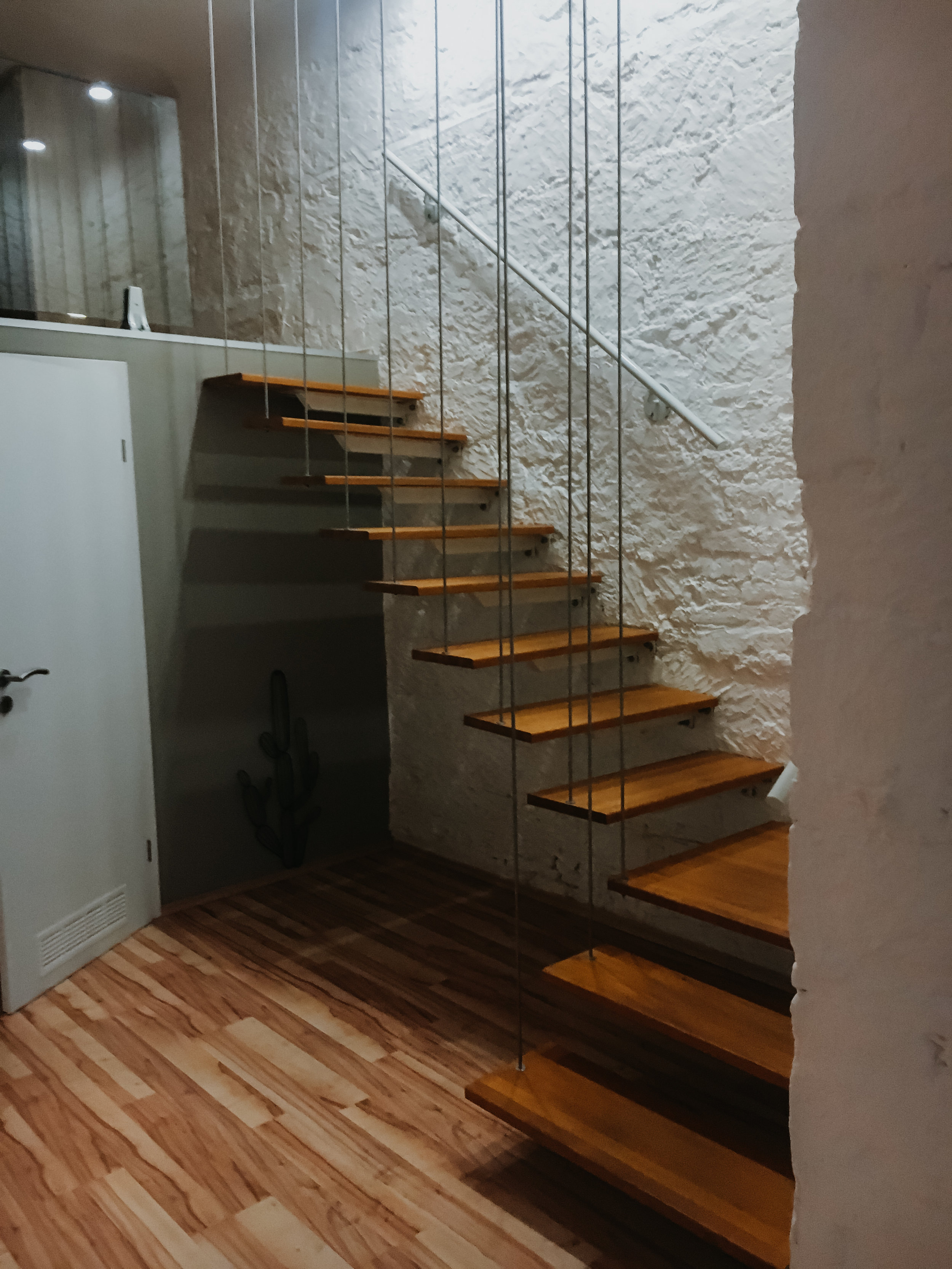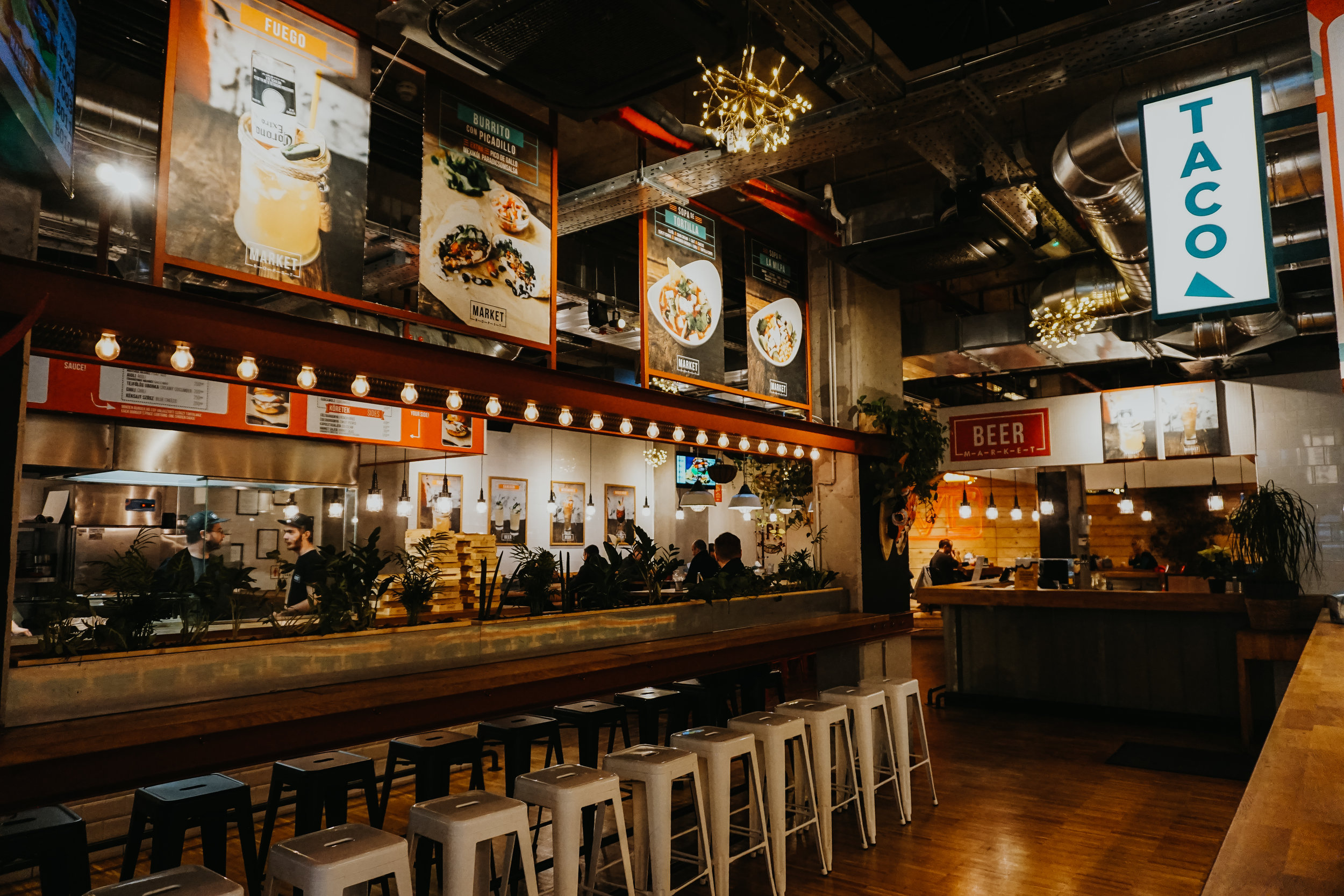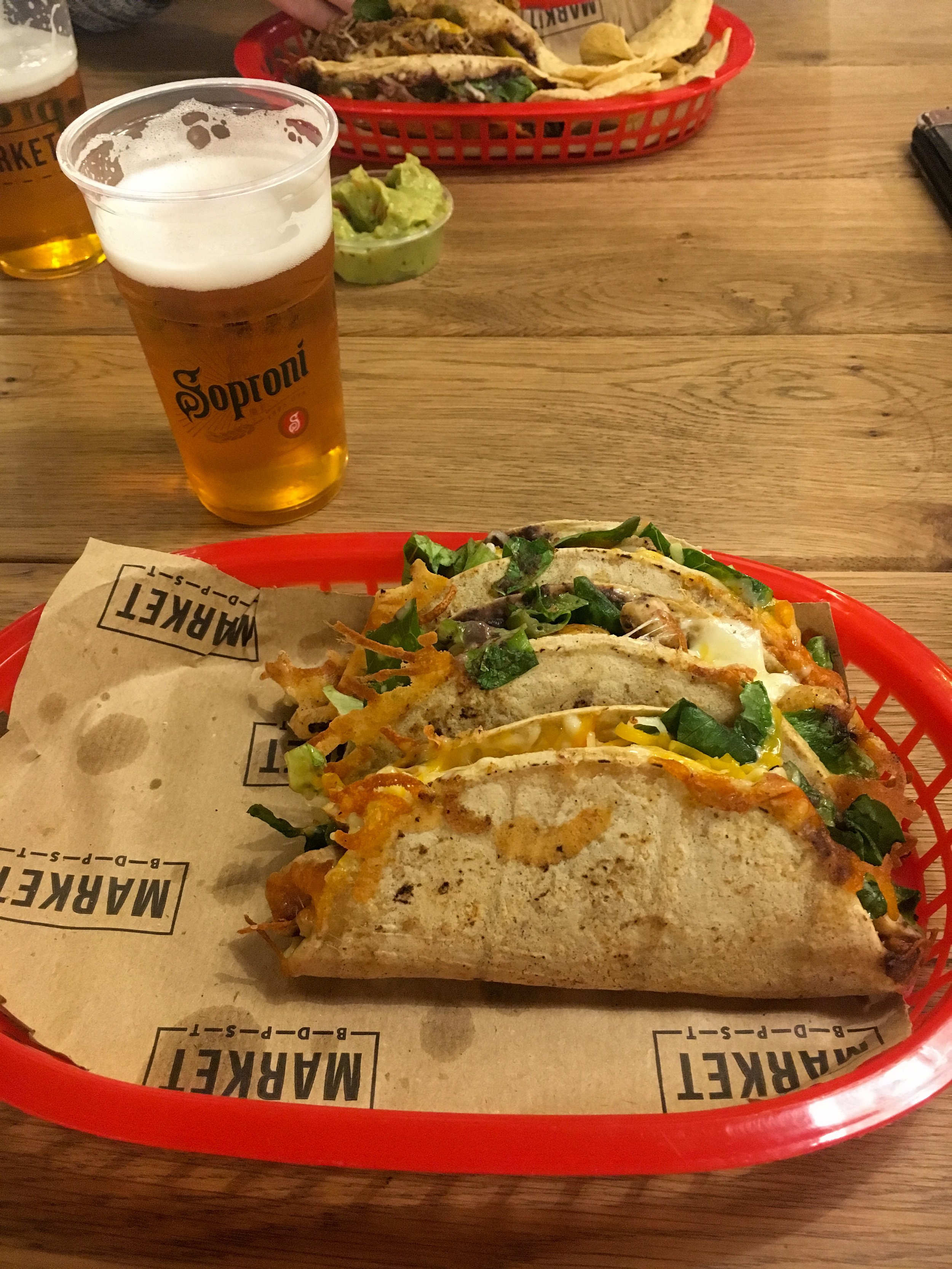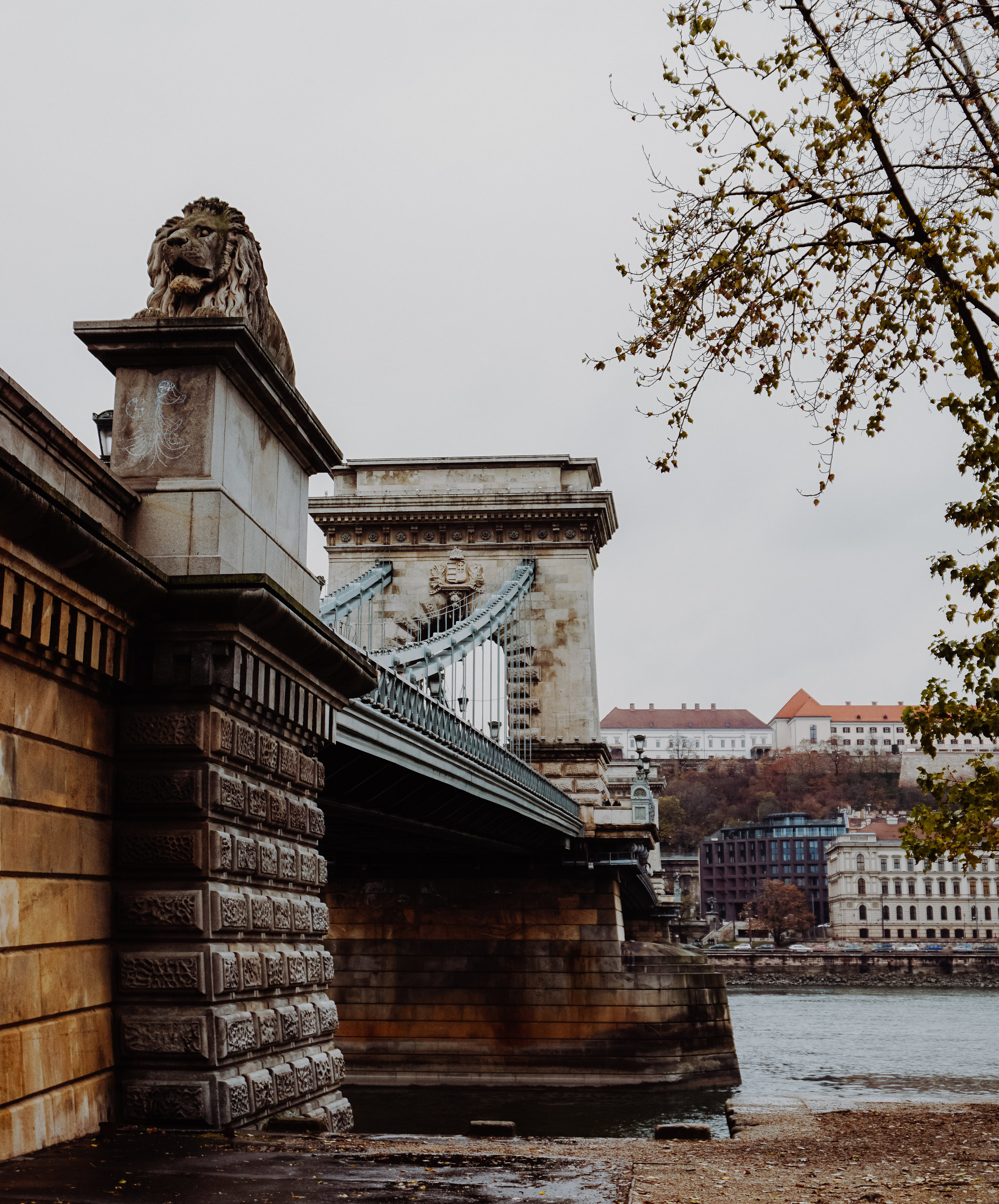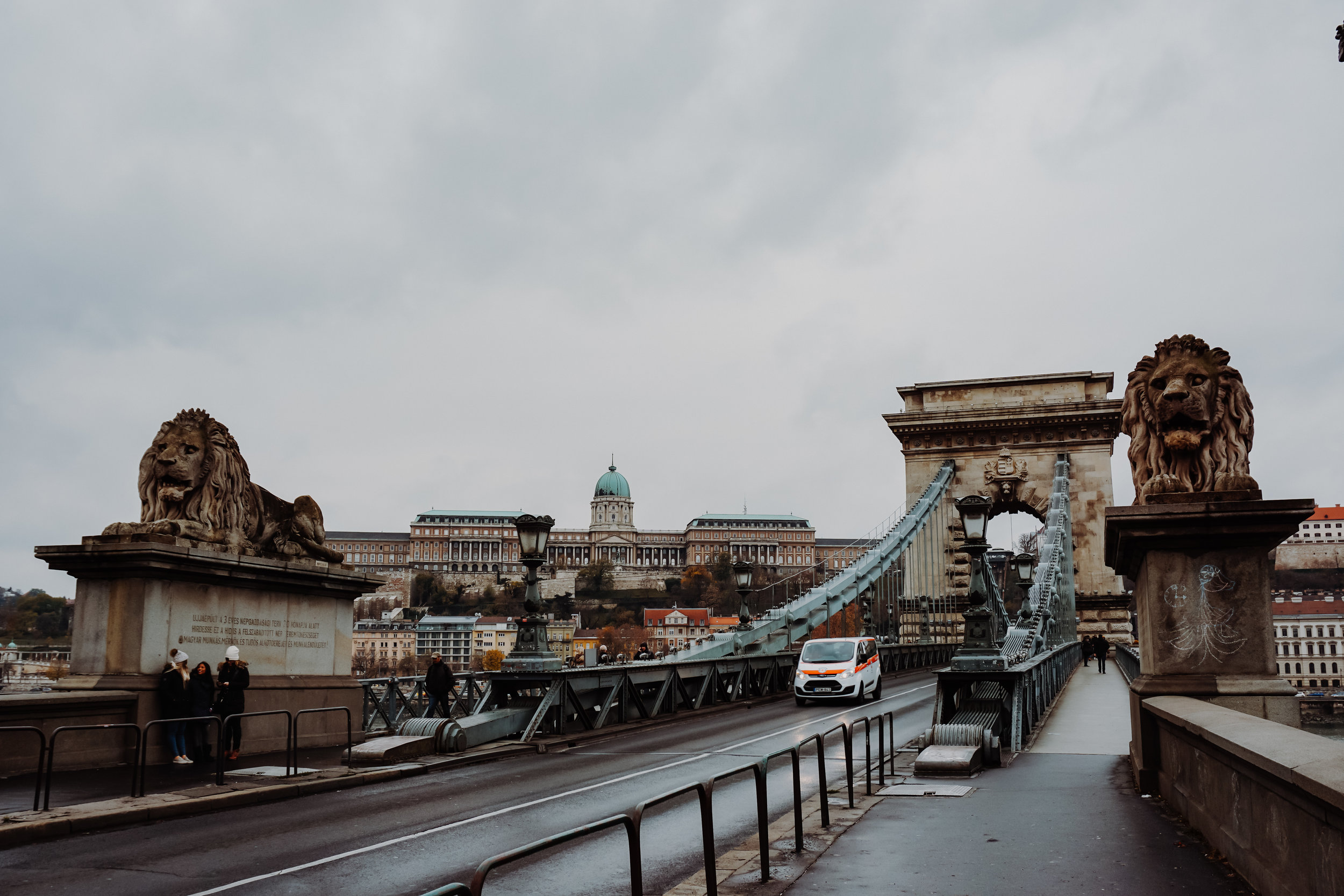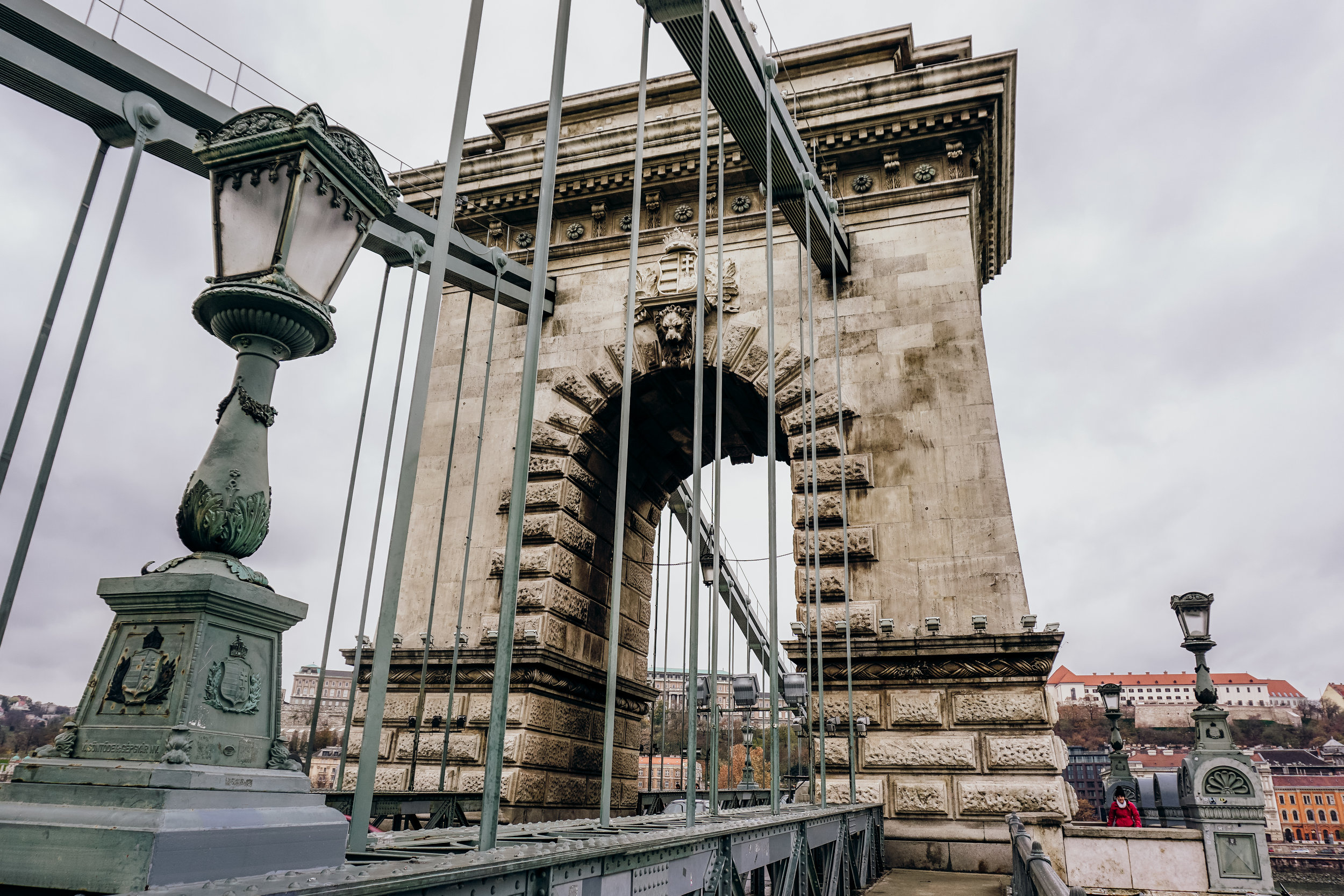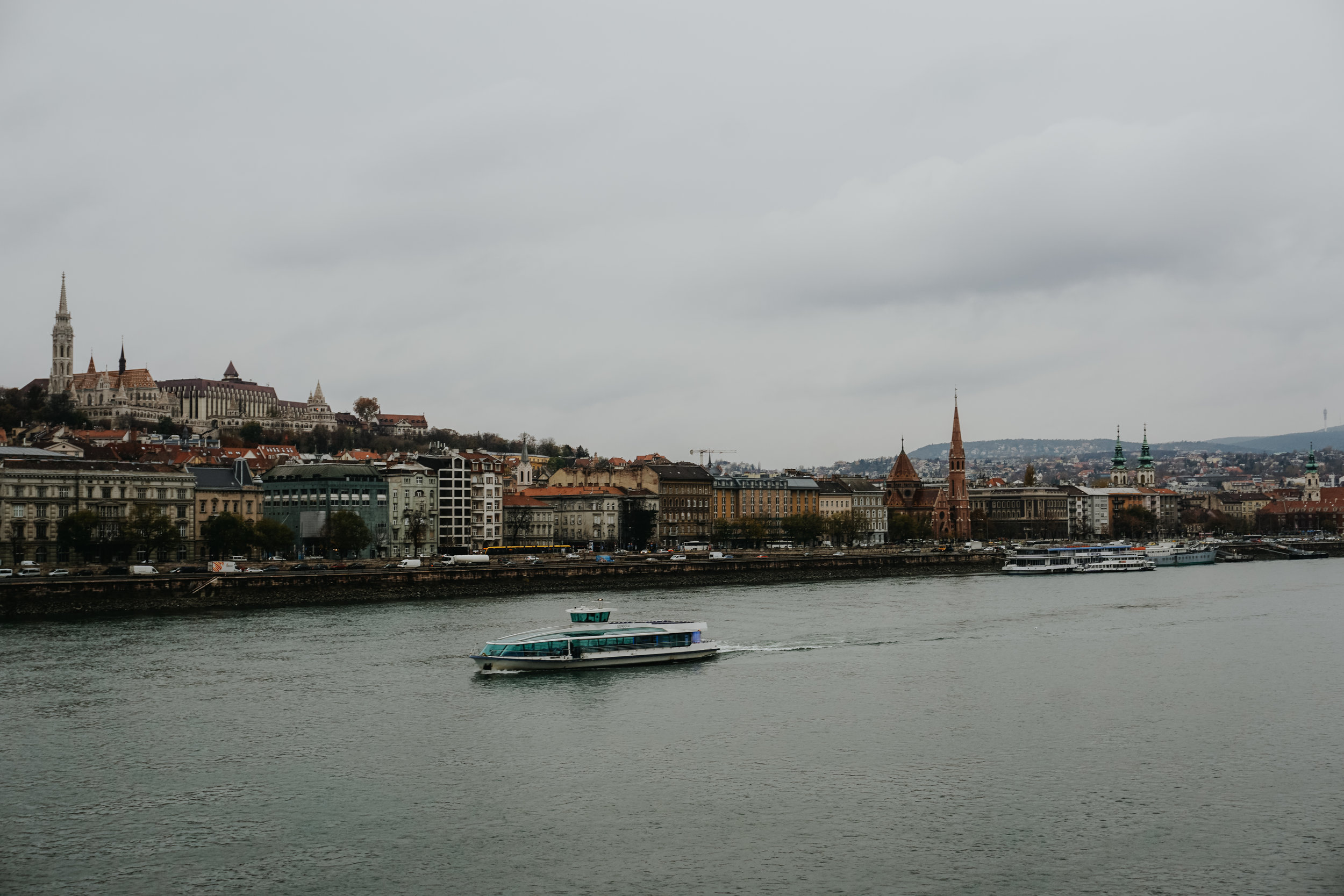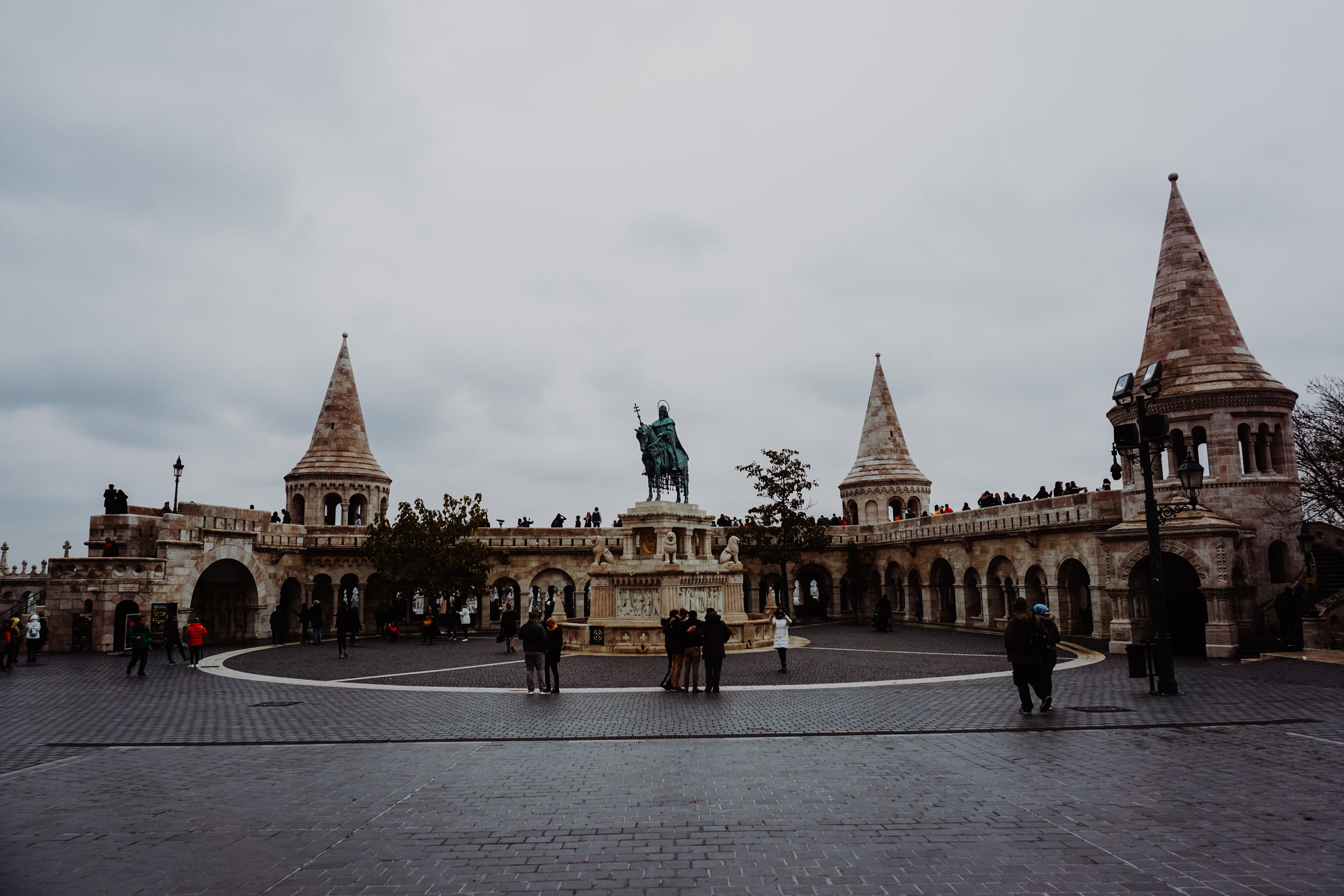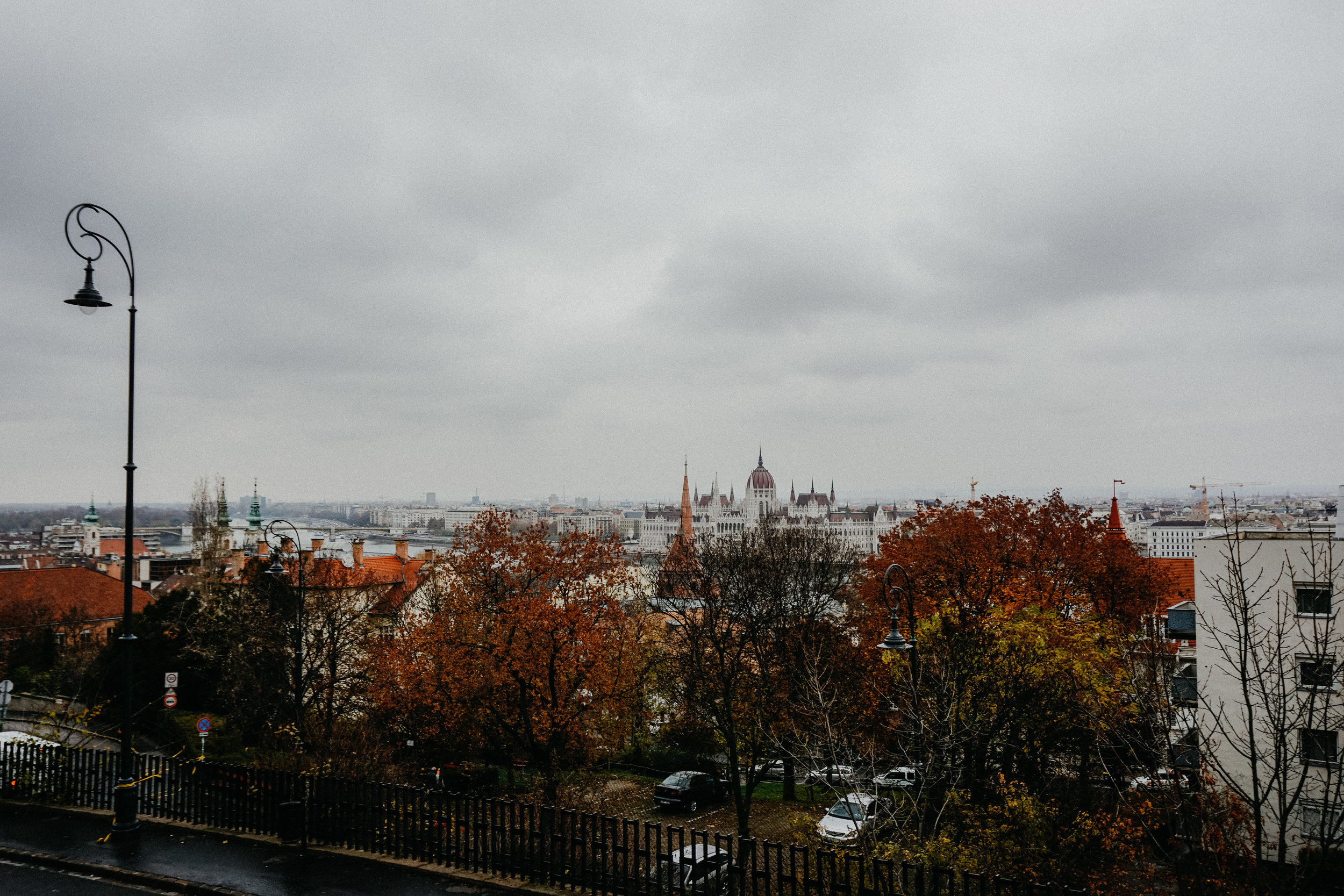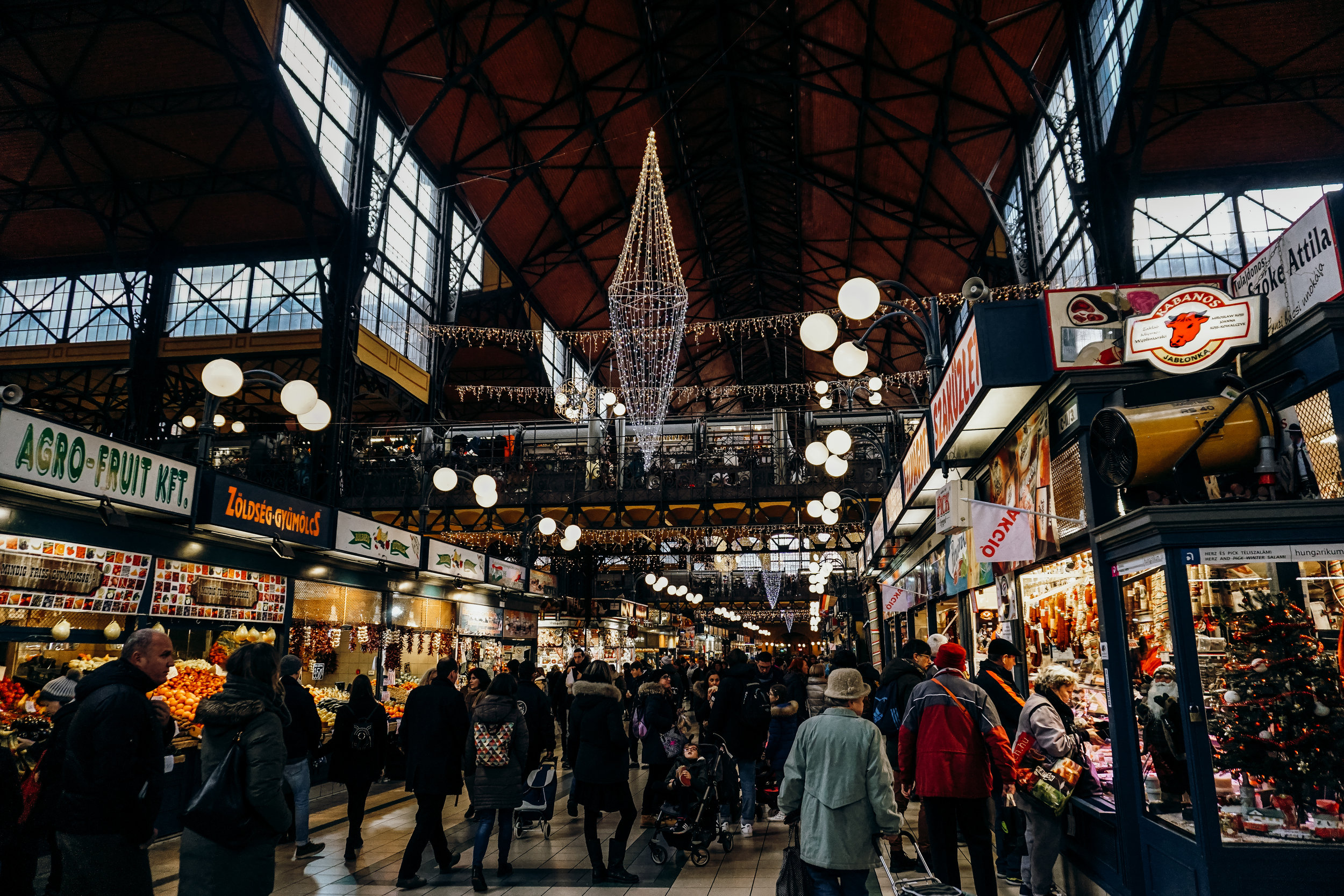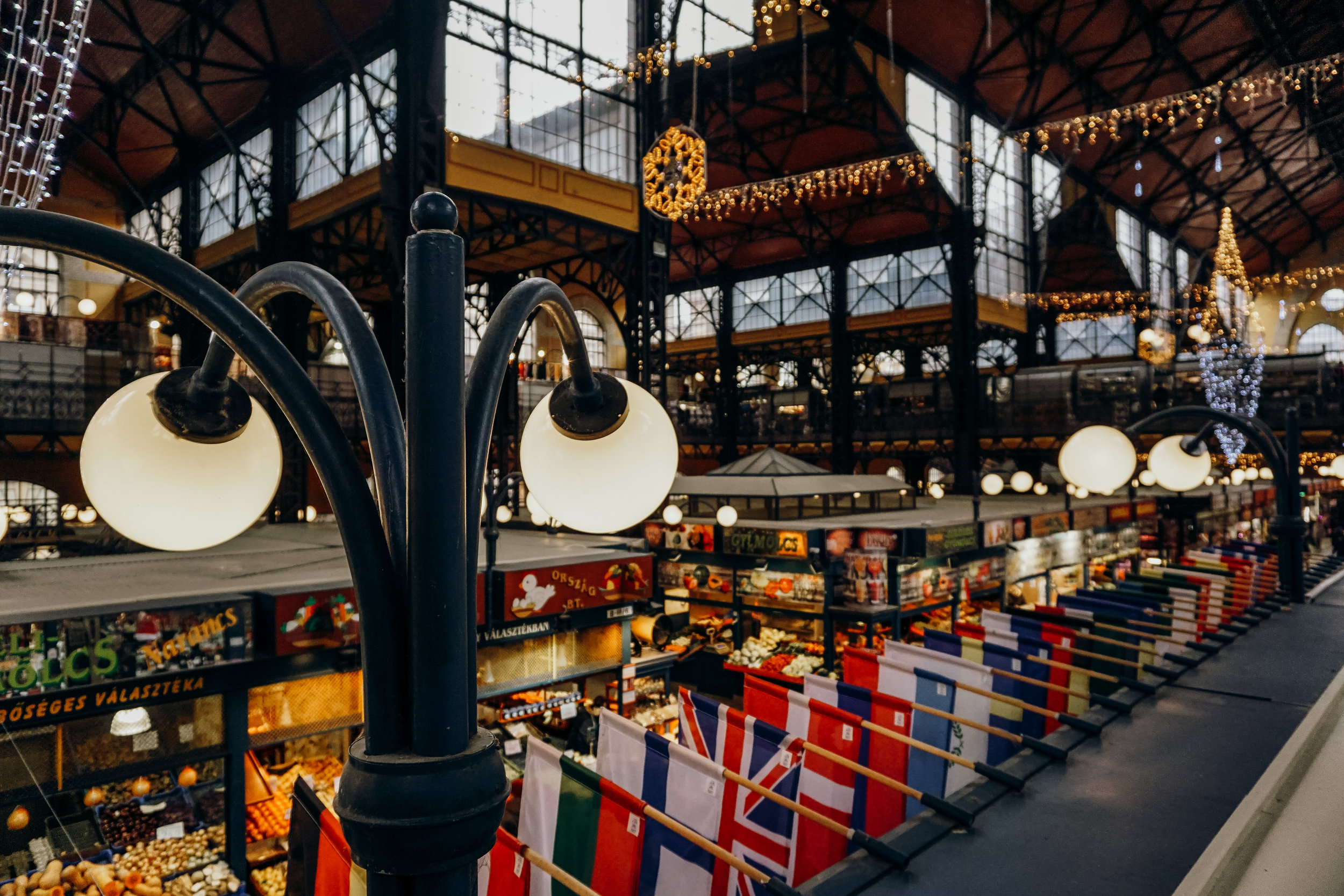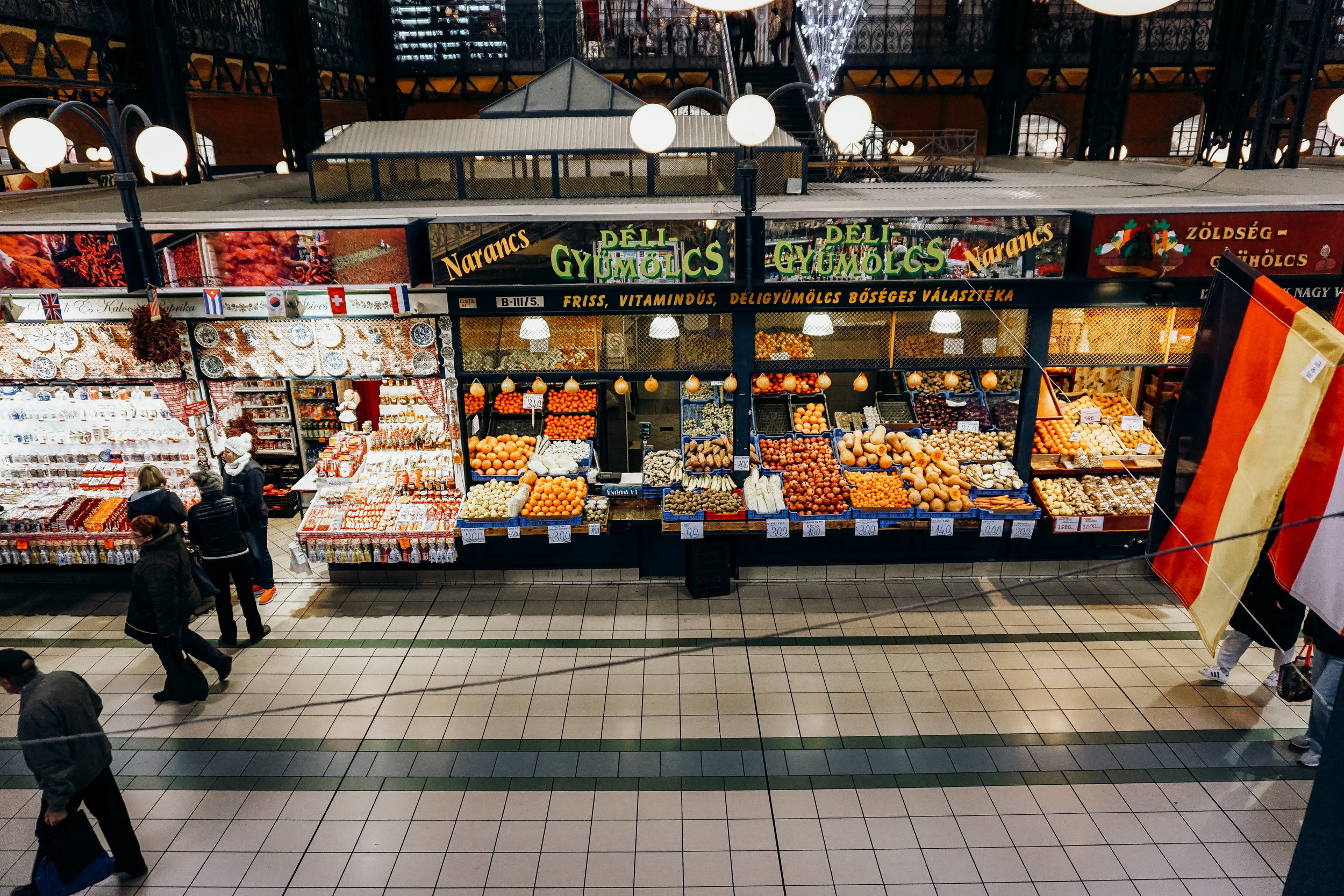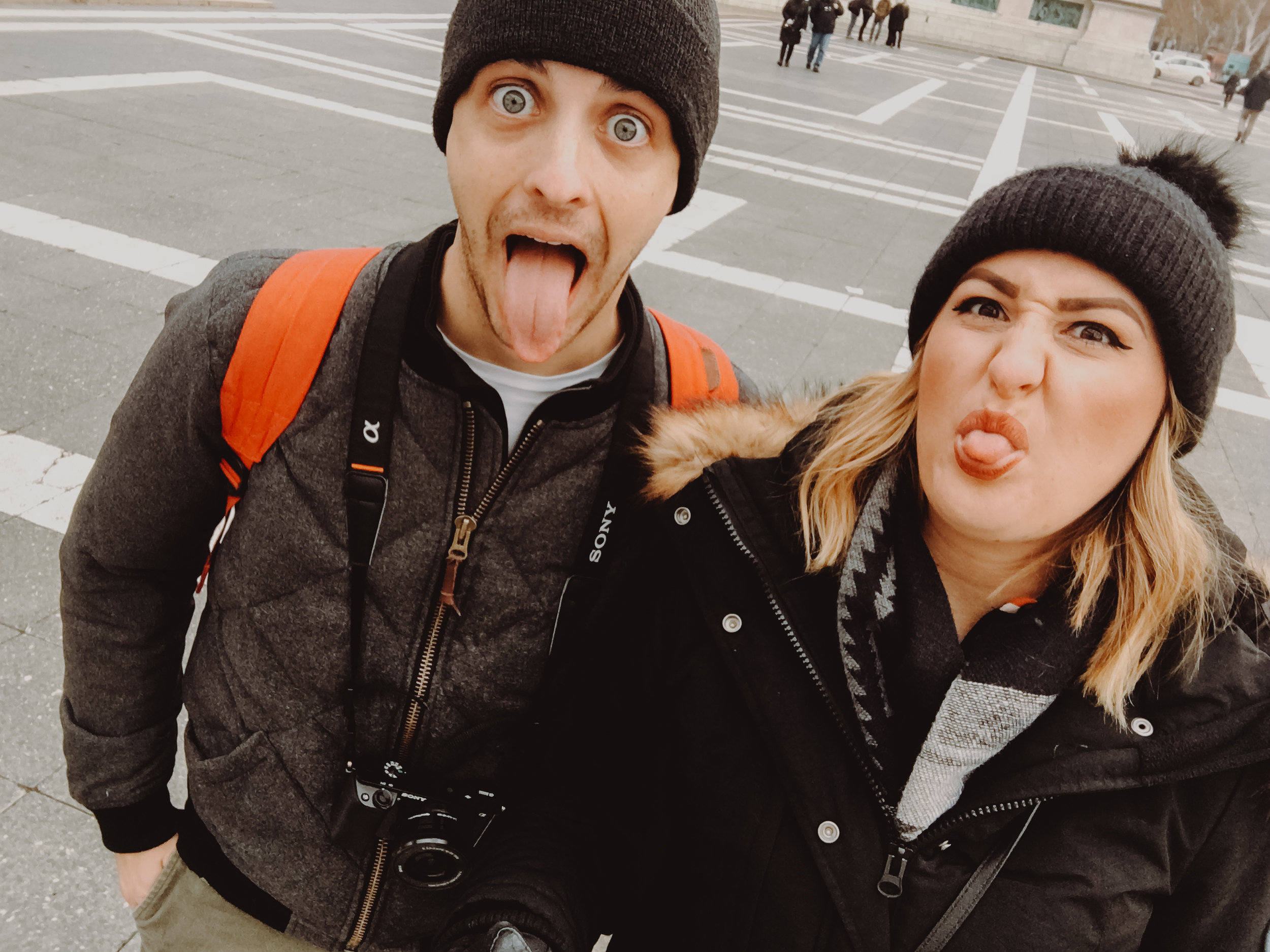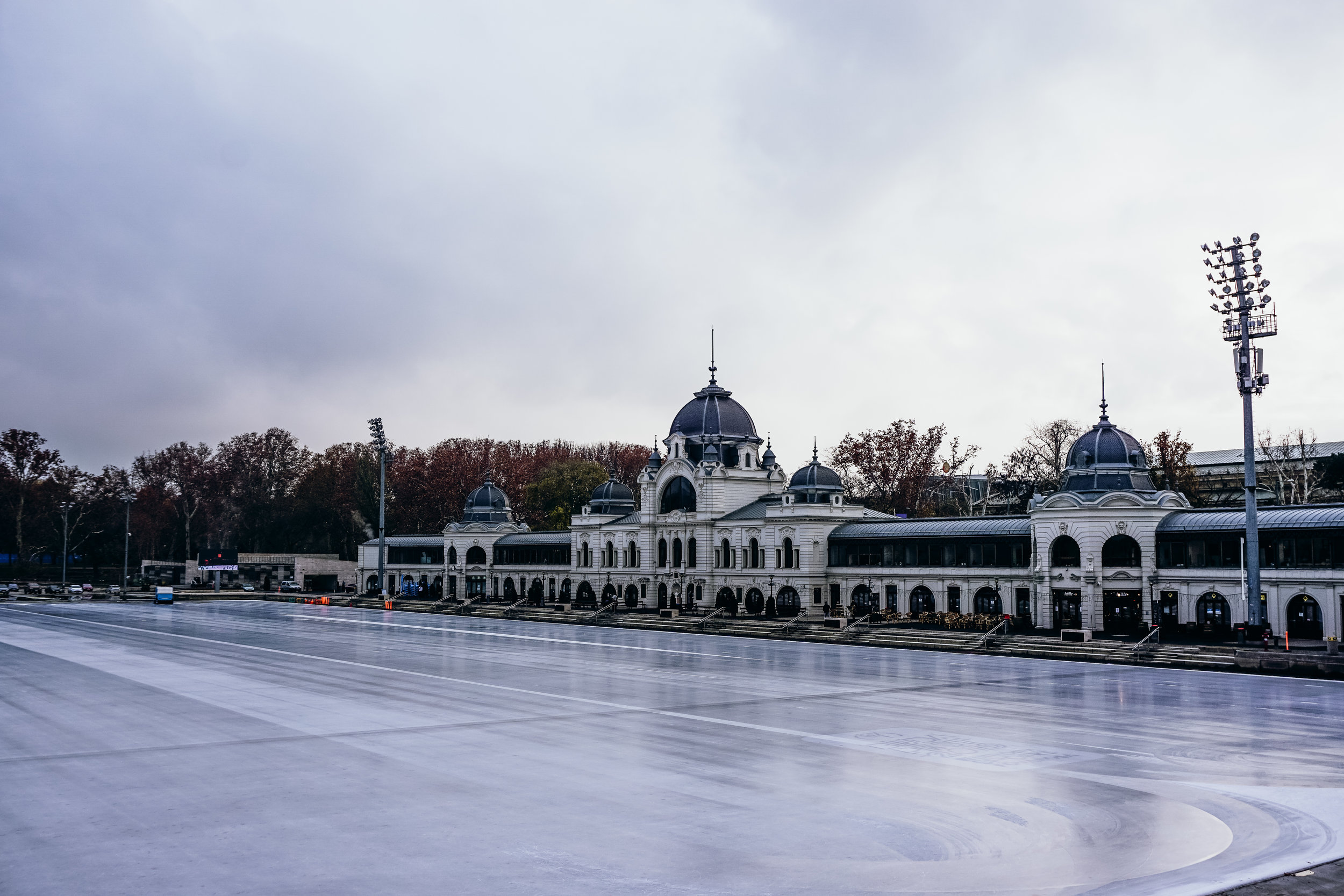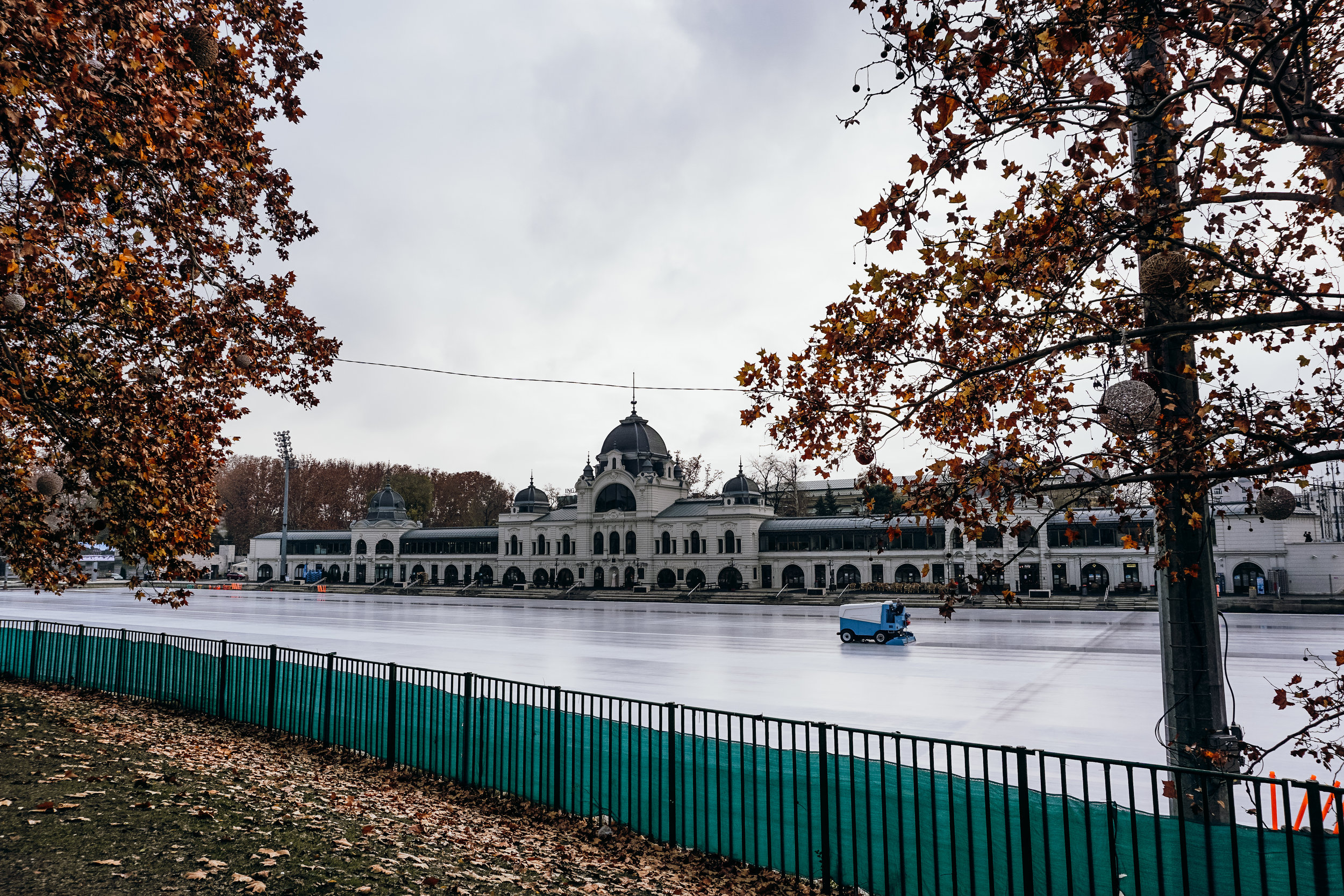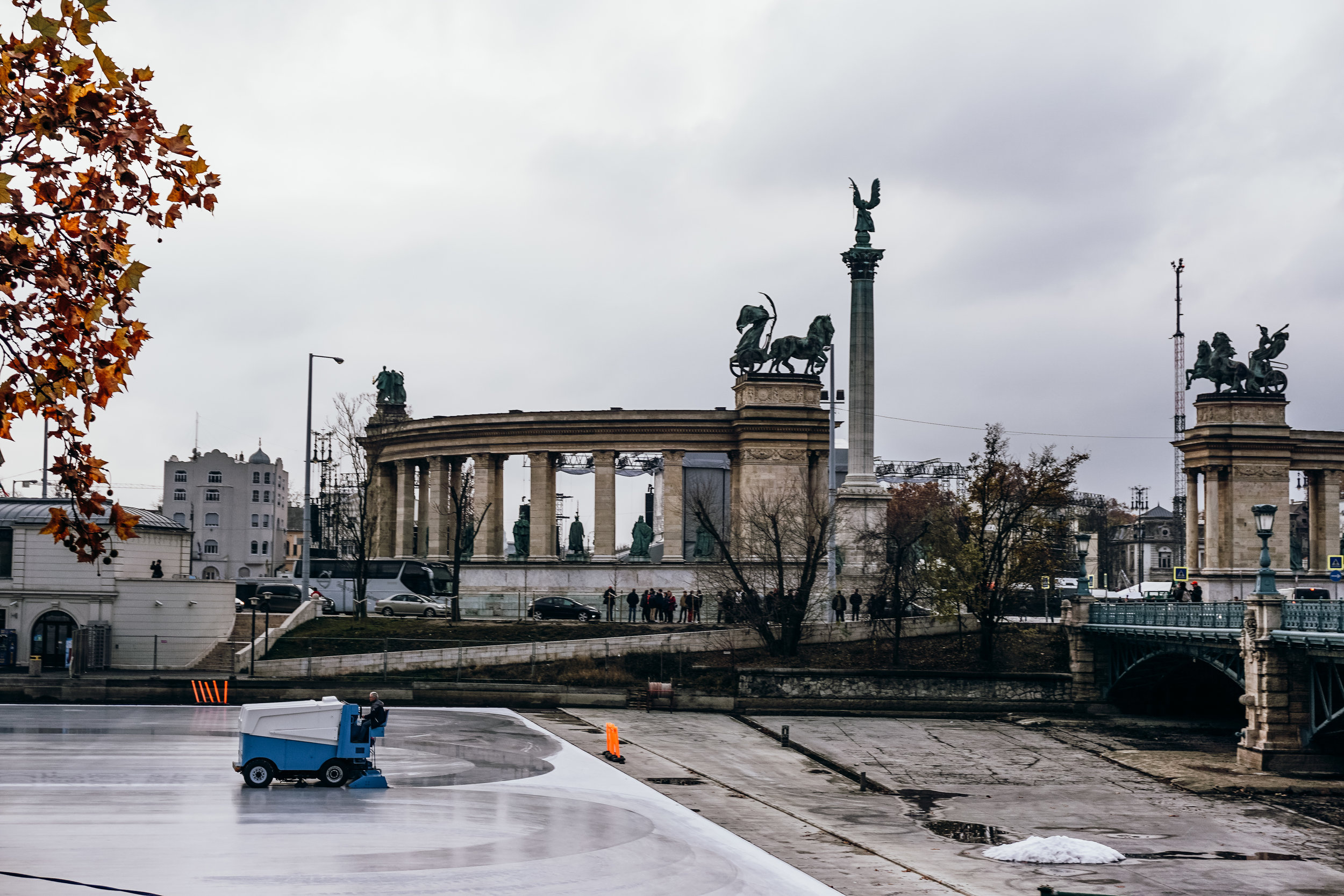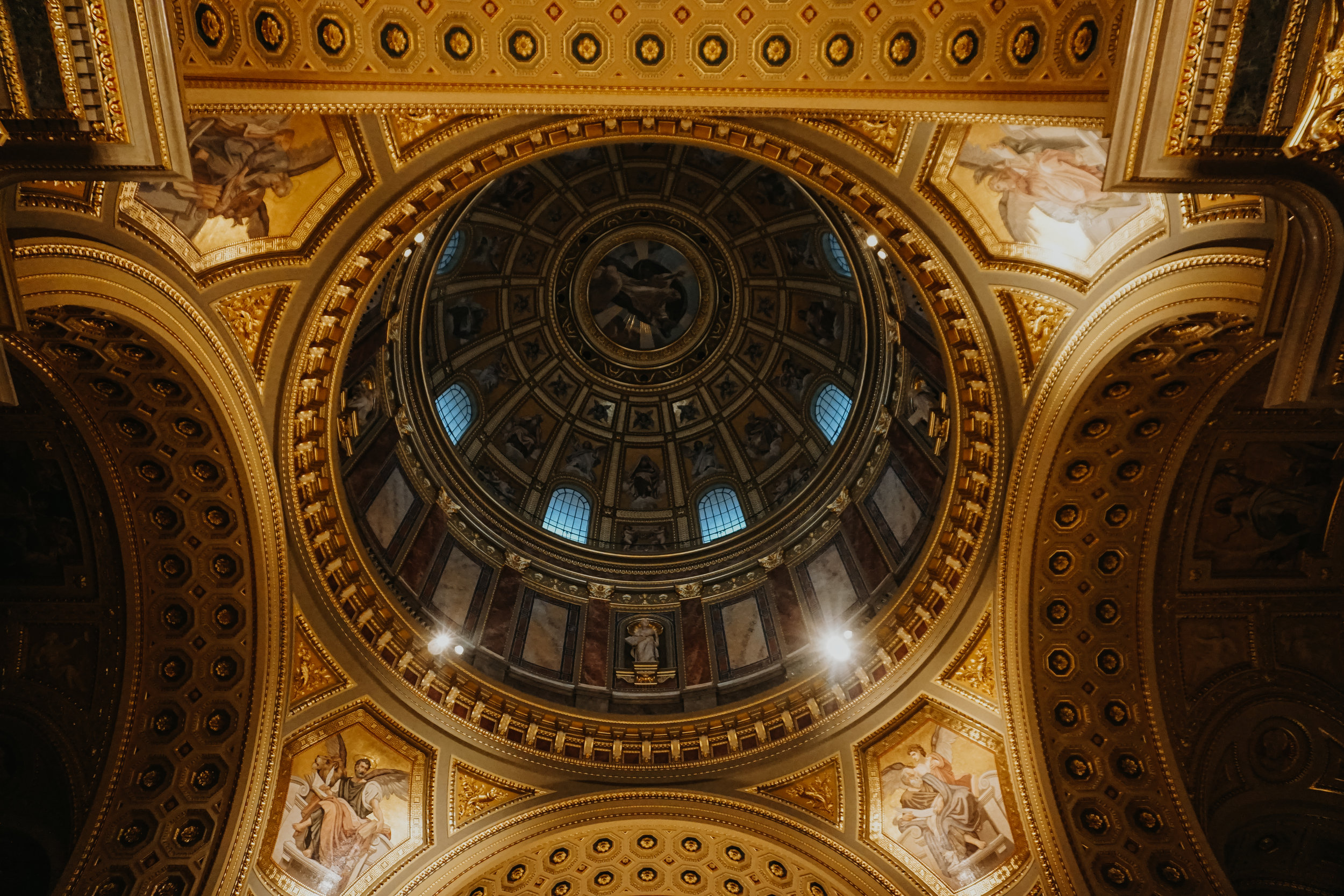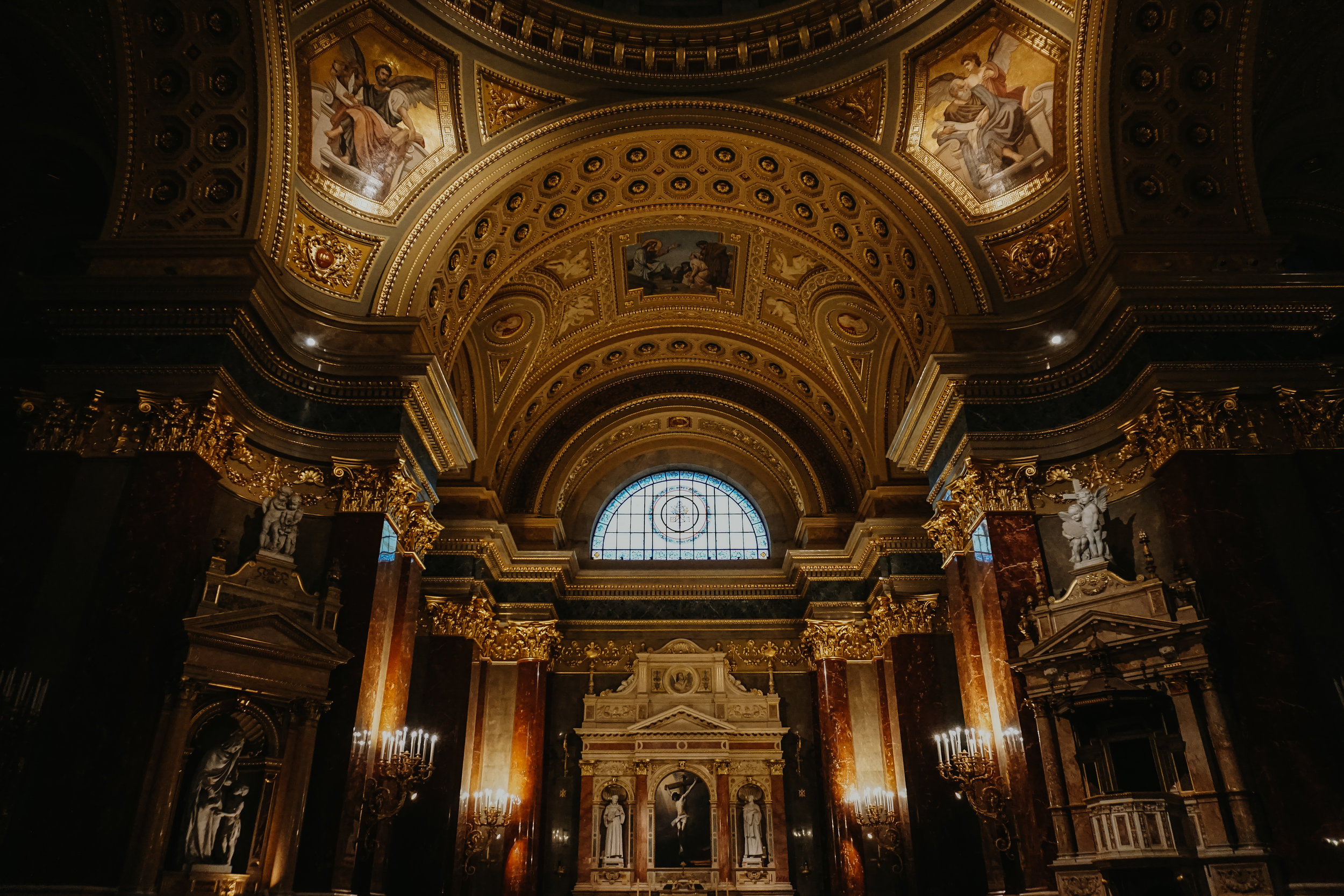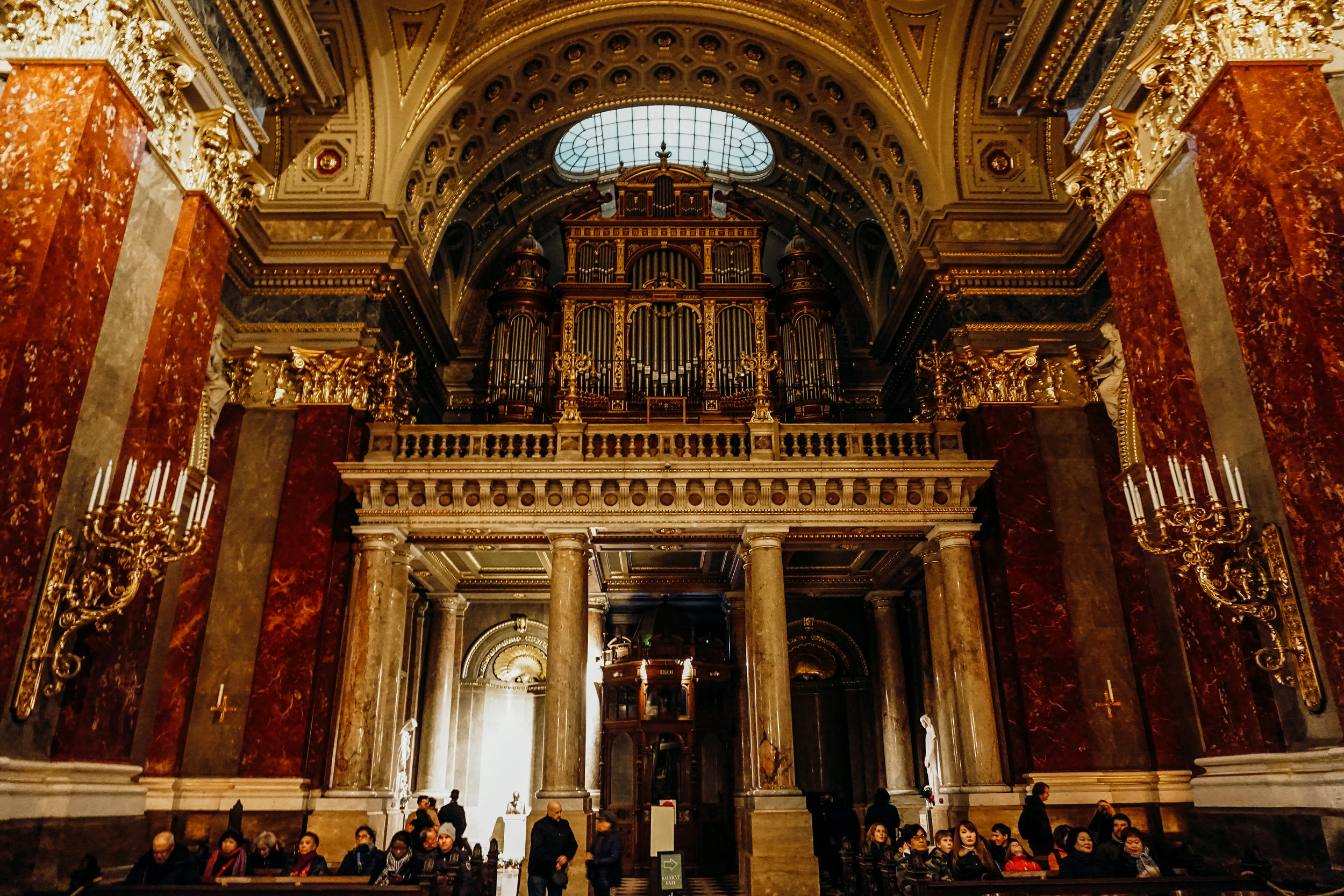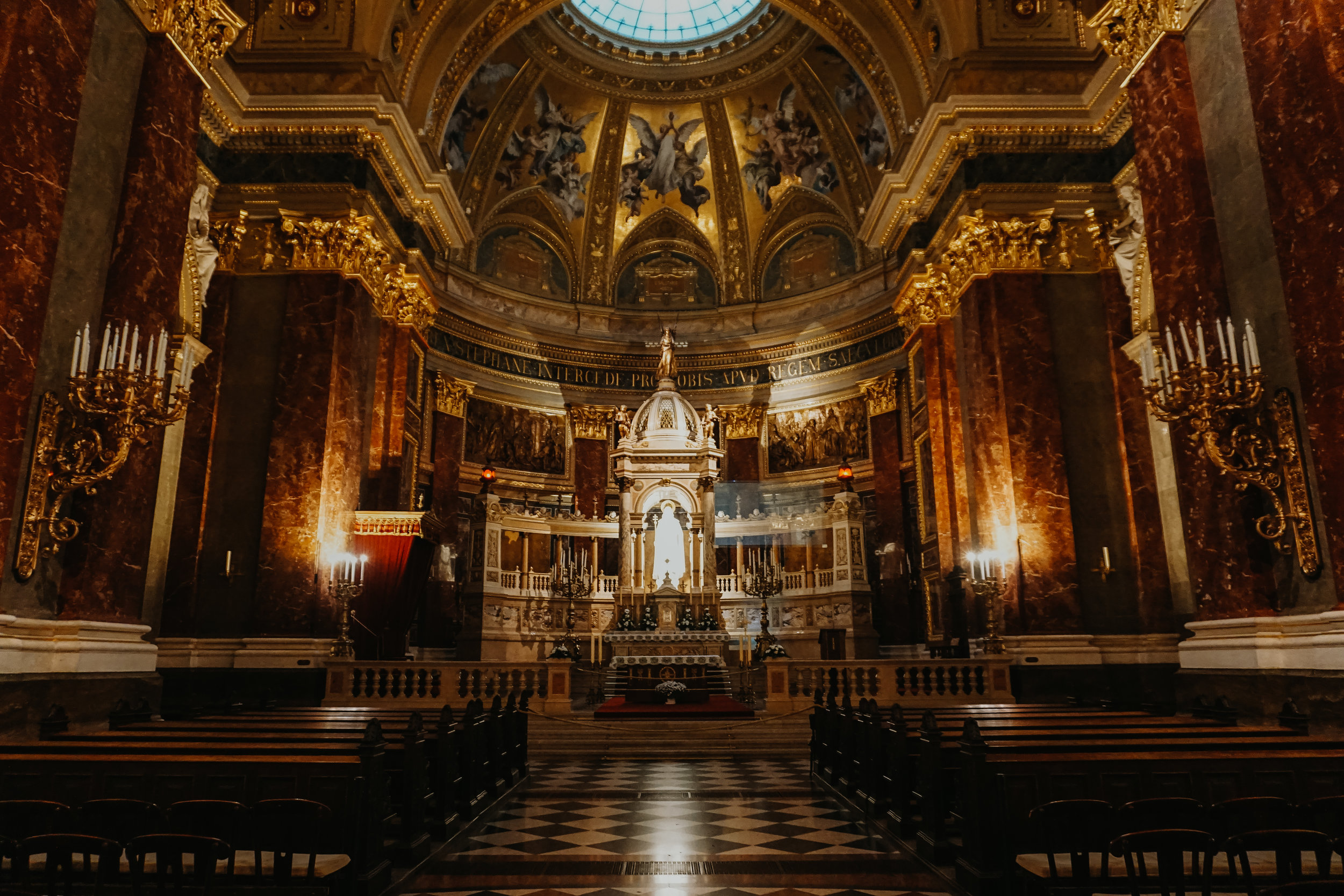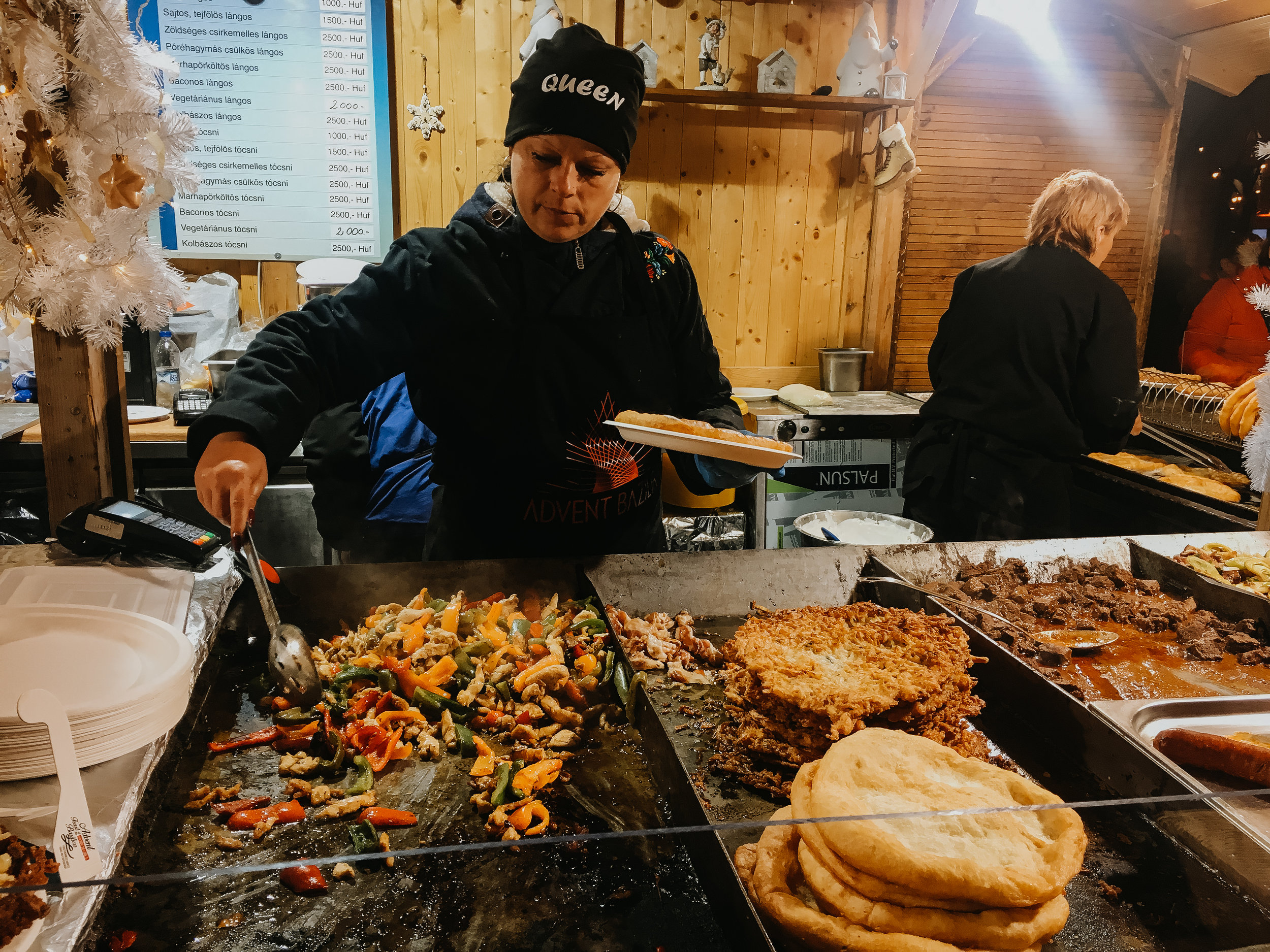Budapest
Helló and üdvözöljük to my blog post about all things Budapest! You were able to read that no problem, right? :) The Hungarian language is a bit of a doozy, but there is no mistaking that Hungary’s capital city is a diamond in the rough. Budapest has thousands of years of history, incredible architecture, and dozens of thermal baths thanks to its position over natural hot springs. We spent three full days exploring Budapest and it didn’t take us long to fall in love with this Central European wonder. I hope you enjoy reading about our trip and get a few ideas for your trip to the Pearl of the Danube.
Chris and I had heard nothing but good things about Budapest from friends who had been there before and we couldn’t wait to see for ourselves. Unfortunately for me, right before we left, I got a terrible stomach bug that lingered throughout our whole trip, so we didn’t hit the ground running every day like we normally do, but we still managed to see a lot of the city and enjoy our Thanksgiving away from home.
Before we left, we did our normal research, which has now included watching Rick Steves’ videos, which I highly recommend for educational and entertainment purposes. We learned a little about Budapest’s history and realized there is a lot to discover. For starters, Budapest actually consisted of two cities, Buda and Pest, until its unification in 1873. Buda, sits high on top of hills to the West of the Danube, and boasts the likes of Buda Castle, Fisherman’s Bastion, and Matthias Church. It is also the quieter side of town. Pest, on the other hand, is more urban and is located on the East side of the Danube. Pest highlights include Hungary’s Parliament building, St. Stephen’s Basilica, and the Central Hall Food Market. Together, they make the beautiful and cultural city of Budapest and are connected by several famous bridges that make it easy to get from one side to the other.
In the past, Hungary was sieged by several different empires and I think their central location in Europe had something to do with that. Its history is very tumultuous and dark at times. The Hungarians have to be some of the toughest people out there to have risen above what it has been through. For over-simplification, here is a rough timeline of its more recent history, which helps explain why the city is so rich in culture and controversy:
896 AD - Magyar tribes settle in the area
1000 AD - Stephen is crowned the “Christian King” of Hungary by the Pope
1241 AD - Mongols raid Hungary and kill half of its population
1526 AD - Hungary is taken over by the Ottoman Empire
1541 AD - Hungary is divided into 3 with parts belonging to the Turks, Hapsburgs, and princes of Transylvania
1686 AD - Buda is liberated from the Turks with the help of the Austrians, giving the Hapsburgs more of Hungary
1867 AD - Budapest becomes the second seat of the Hapsburg Empire
1896 AD - 1,000 year anniversary of the magyar’s settling in Budapest, which sparks major construction of a lot of the buildings standing today
1918 AD - Austria-Hungary loses in WWI, the Hapbsurgs fall, and Hungary declares itself a republic
1941 AD - Hungary joins the Axis Powers in WWII
1944 AD - The Nazis murder half a million Hungarian Jews in their concentration camps
1945 AD - Hungary is liberated by the Soviets at the end of WWII, but 3/4 of its buildings are destroyed, and all of its bridges are gone after being demolished by the Nazis
1949 AD - Communists gain control of Hungary and form the People’s Republic of Hungary. Persecution and murder continues under the communist regime for decades.
1989 AD - Communists lose majority power and the Republic of Hungary is established
1991 AD - The last Soviet troops leave Hungary
2004 AD - Hungary joins the European Union
If you ever visit Budapest, having a little idea of its history will help make your visit more meaningful. Ok, now that our history lesson is over, it’s time to get to the good stuff.
LOGISTICS
Getting from the Airport to the Heart of Budapest
Knowing how we are getting from the airport to our end destination is something I always figure out in advance and there wasn’t much out there on the internet when it came to Budapest. A lot of the sites mentioned taking a taxi, but I don’t always trust that we aren’t going to get scammed by taxi drivers, so I was determined to find an alternative way. With some digging, I found out that there is a relatively newer bus route that goes from the airport straight to the city centre, the 100E. It picks up right outside of the arrivals hall and there are ticket machines right next to the stop. Pro tip: be sure to buy the airport to city centre ticket for 900 HUF, not the single fare ticket at 300 HUF. Several of us made that mistake and were rushed to buy new tickets before the bus departed. The bus ride into town took about 35 minutes and dropped us off at the metro stop of Deák Ferenc tér. For $3.19, that was probably the cheapest airport transfer we’ve ever had!
We took the same bus back to the airport and it was very packed. My recommendation is if you take the 100E from the city to the airport, take the bus a little earlier than you normally would because it took awhile for everyone to pile on and we made a couple more stops. Plus, the departures hall at the airport was a straight up mess. It was unorganized chaos, so give yourself a little extra time.
Accommodations
Chris and I found a stunning AirBnb on the Pest side of town. It was near lots of restaurants, bars, and some of the sights. We were able to walk everywhere, or walk the five minutes to the Deák metro stop to hop on the subway. It was a gorgeous loft in a great location and came at a really great price. Our only gripe was that the ceiling in the loft, which is where the bed was, was so short that even at 5’5”, I had to duck!
3-DAY BUDAPEST ITINERARY
Day 1:
Chris and I took advantage of not having the dogs our first night in Budapest and ended up sleeping until 11:00 our first morning in town. Oops! It was no bother to us though as we hit the streets and found a fun food stop at Market BDPST, which serves burgers, tacos, beer, and coffee. Perfect! We got some tacos and Czech beer for a total of $20 / €17,50 and made plans to explore Buda for the afternoon.
Budapest Card
If you’re not new to my blog, you know I love a city card that offers free entry to attractions in town. Usually Chris and I will buy them for the amount of days we are in town, but the Budapest card didn’t seem as worth it as other cities we have visited. We listed out the places we wanted to visit and it turned out getting the 24-hour Budapest card was all we needed to get our value. There are 48-, 72-, 96-, and even 120-hour options, but it’s always smart to make sure you aren’t spending more on the card than what the value of the attractions are. The 24-hour card costs $25 / €22 and any of the Big Bus tour stands sell them right in city centre.
The Chain Bridge
Built in 1849, the Szêchenyi Chain Bridge is one of the most beautiful bridges in Budapest. It spans the Danube River connecting pedestrians and cars from one side of the city to the other. It was an architectural wonder at the time of its construction and it is easy to see why because it is stunning. Most famously there are two large archways and two lions guarding each entrance.
After walking across the Chain Bridge, we hiked up the big hill in Buda to check out the Fisherman’s Bastion. Pro tip: There is an old-time funicular that you can take up the hill for the price of a ticket. We were in a little bit of a time crunch, so we didn’t wait to see how long the line was, but it looked like a fun thing to do and would be a good option for those who have a harder time with steps and hills.
Fisherman’s Bastion
Besides Parliament, the Fisherman’s Bastion is probably one of the most well-known structures in Budapest. It was one of the several pieces of architecture built for the 1000 year annivesary of the city. It sits high on the hillside and provides some of the best views of the city. Symbolically, there are 7 towers that make up the bastion, one for each of the Magyar tribes that originally settled the city.
The Fisherman’s Bastion is a must-see if you visit Budapest. It is an Instagrammer’s dream and near to other points of interest, e.g. Matthias Church and Buda Castle. We didn’t get to spend much time walking the Fisherman’s Bastion, but I would love to go back during summer time to watch the sunrise or sunset over the city. I also believe it costs money to enter, but the turnstyle was broken the day we visited, so we, along with everyone else, enjoyed it for free. :)
Included with the Budapest Card are two free walking tours — one in Buda and one in Pest. The tour in Pest departs every day at 10:00 and the Buda tour meets near the Fisherman’s Bastion every day at 2:00. We thought this would be a great way to learn about Buda and see most of the sites in an afternoon. Unfortunately, the tour started off really slowly and the guide shared more information about what times sites are open rather than the actually history of the area, so Chris and I dipped. Our daylight was limited and we thought we could get more done ourselves.
Matthias Church
Right next to the Fisherman’s Bastion is Matthias Church, which has a long history, including having been turned into a mosque during the Ottoman’s occupation. The now Catholic church is a stunner. The roof has colorful tiles and patterns a la St. Stephen’s in Vienna.
It is free to visit the interior of the church. I would have loved to see the inside, but since our daylight was waning, we opted to pay the 1,800 HUF / $6.40 / €5,60 to climb the 197 stairs and tour the church’s belfry. About halfway up the stairs there is an exhibit showing some of the church’s history. They found a time capsule that had been buried and some of its contents are on display. They also have pictures of the church, which was damaged during WWII. It’s definitely worth looking around and catching your breath before continuing on to the top.
At the top, there are panaoramic views of Budapest. You can walk all the way around and see the city in all its glory. Obviously, the money shots are going to be on the river side, but I also enjoyed looking back on Buda because the hills continue on that side of town and it was beautiful to see.
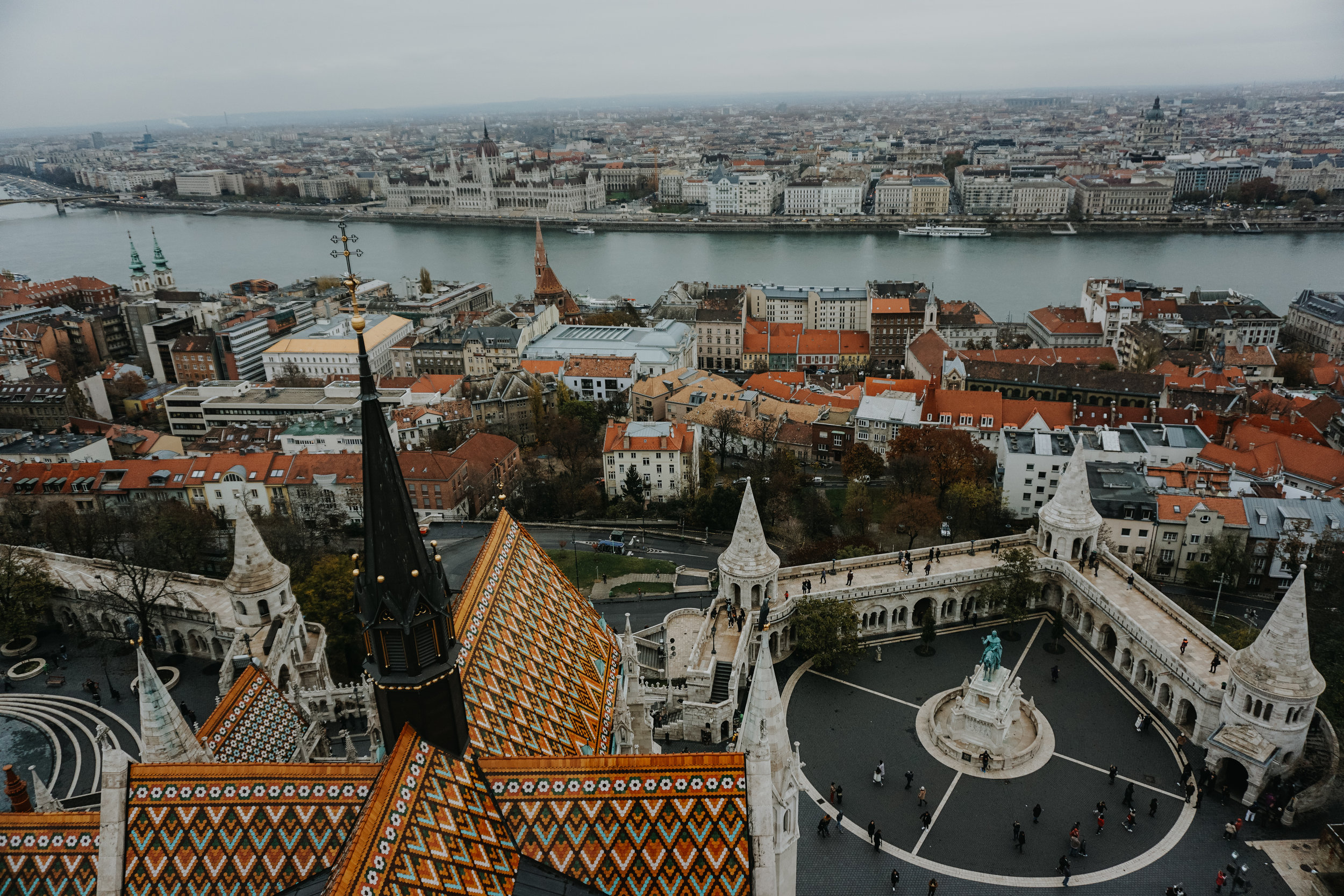
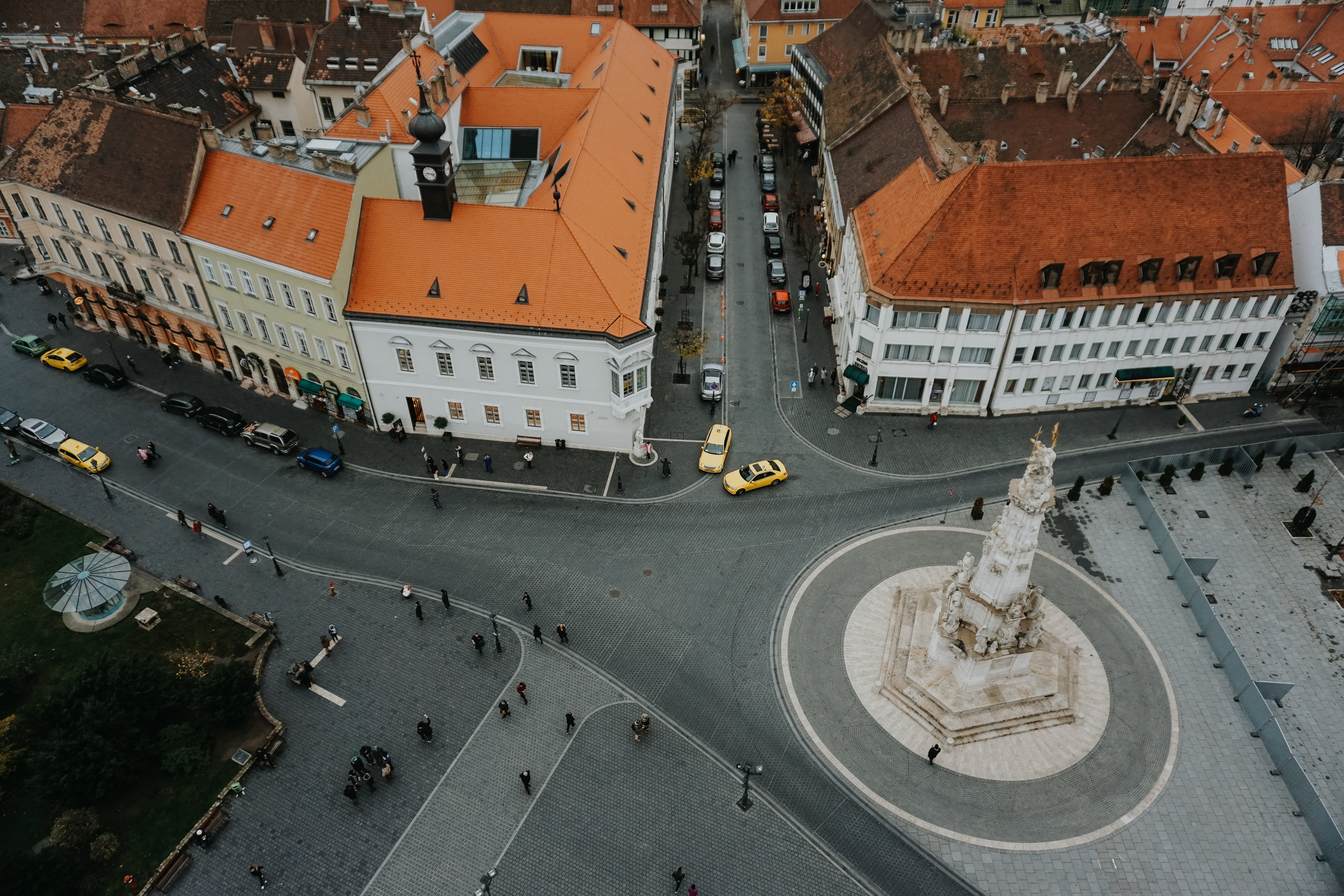
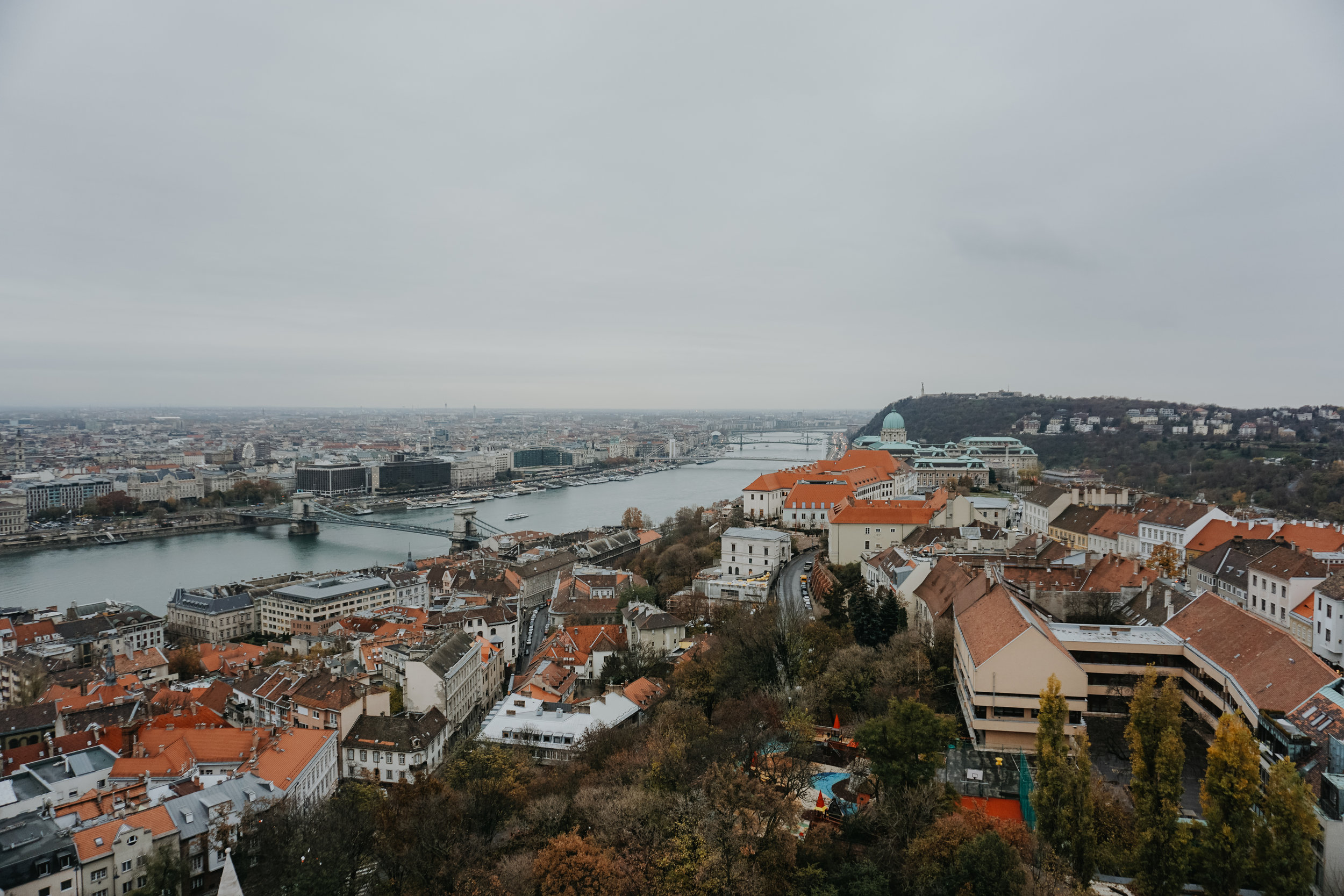
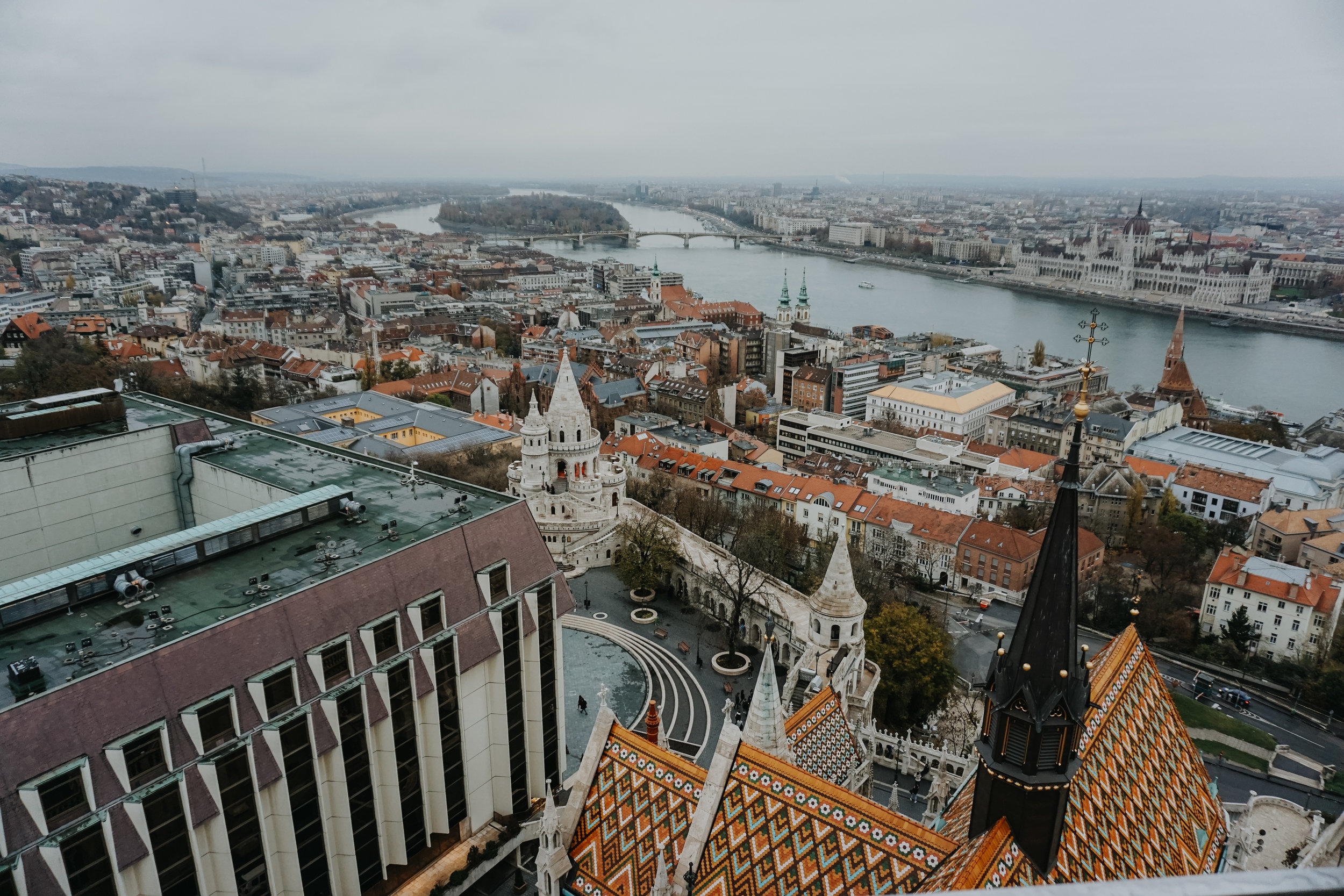

Buda Castle
The all imposing Buda Castle sits on top of the hill on the Buda side of the Danube and hard to miss. Honestly, it doesn’t look very ornate and opulent from across the river, but when you get closer, you start to marvel at its sheer size and beauty. Buda Castle is a short 10-minute walk from Matthias Church and Fisherman’s Bastion. The castle was first completed in 1265 and today houses the Hungarian National Gallery and the Budapest History Museum, which are both included with the Budapest Card.
We opted to walk the grounds of the castle and watch the city light up as day turned to night. I was particularly excited to see Parliament and the Chain Bridge illuminate at nightfall and it was not disappointing. We grabbed some hot chocolate and took in the views.
Fun fact: The bird pictured below is called a Turul and is a national symbol for Hungarians, who believe the mythical bird protects and defends them.
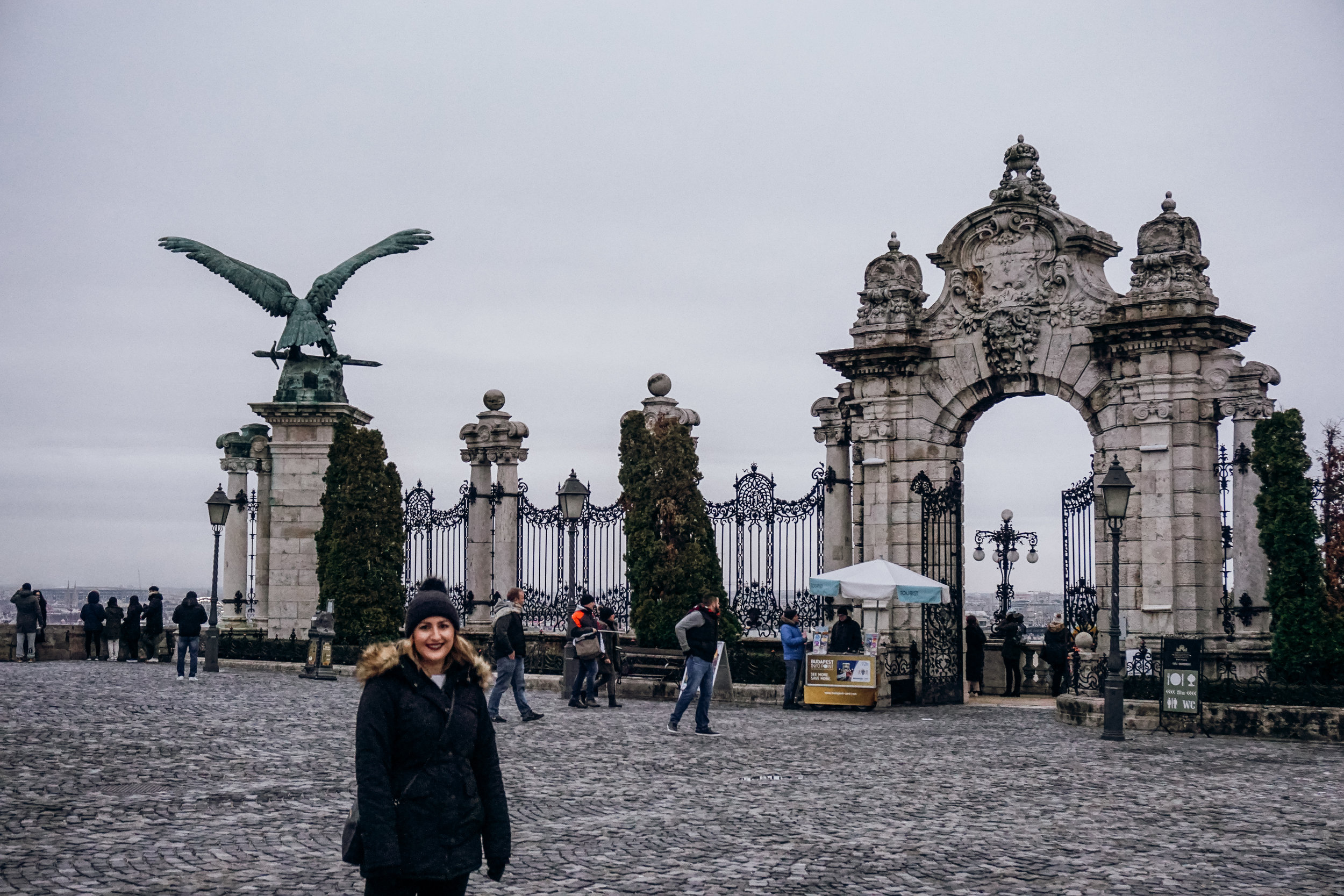
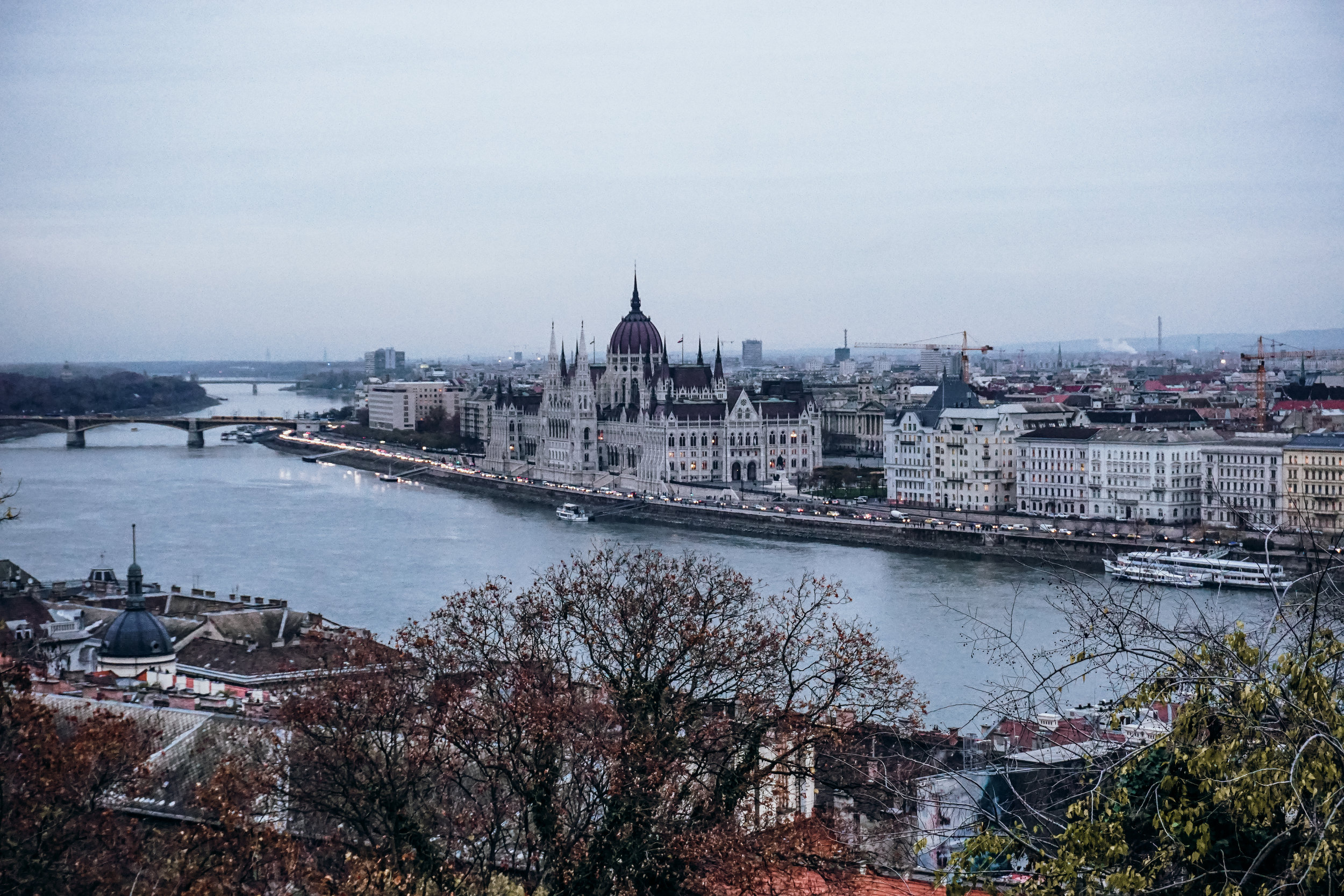
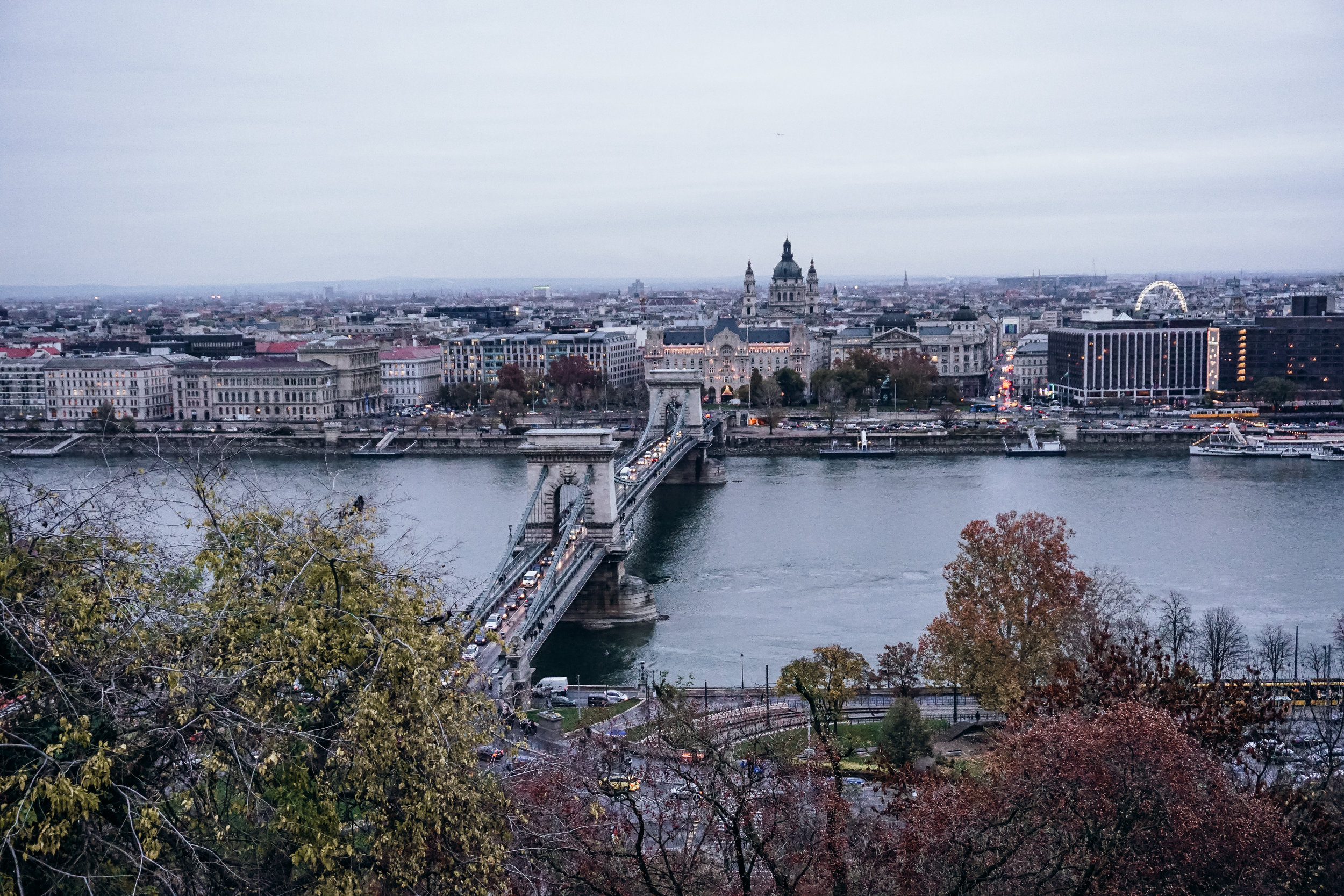
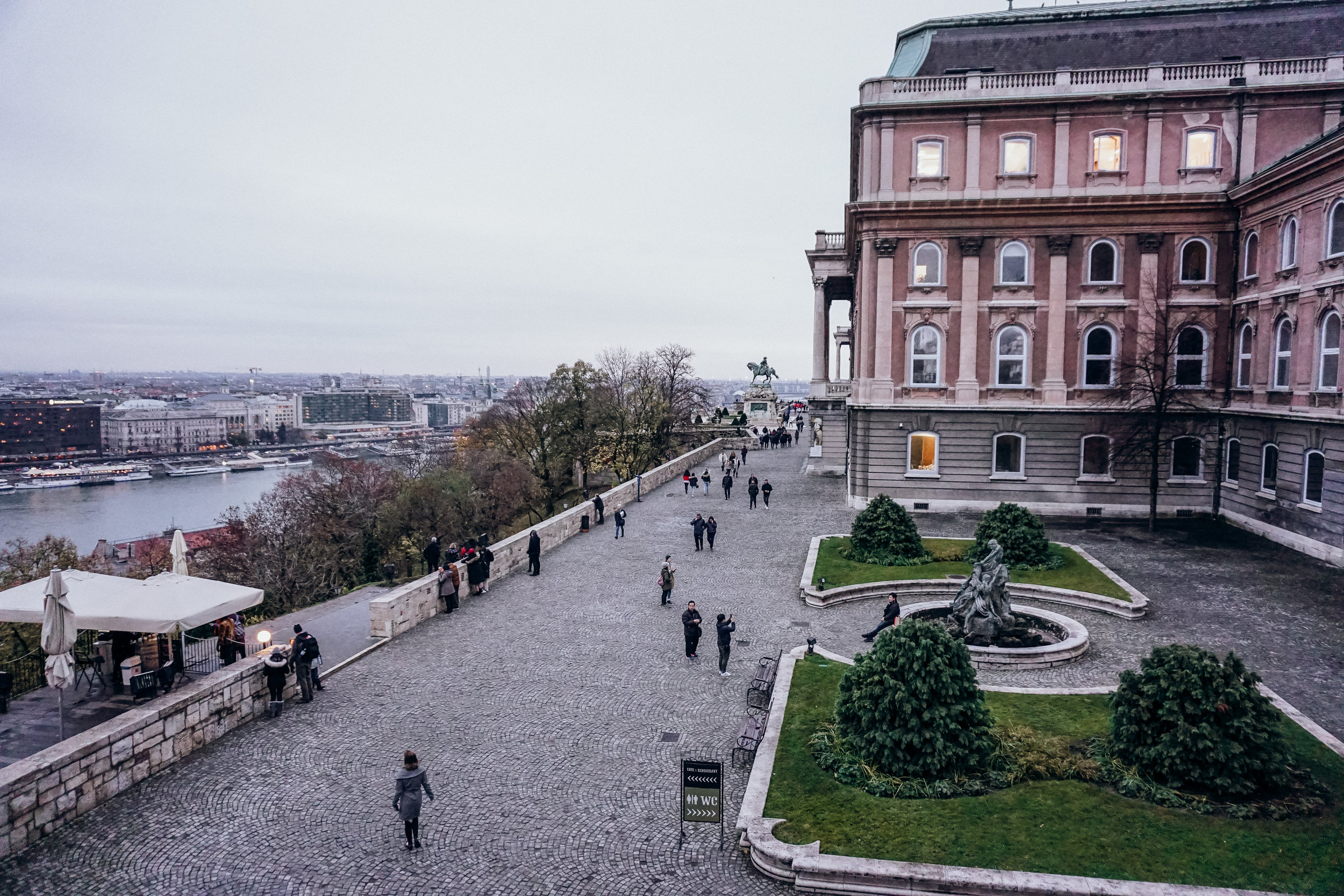

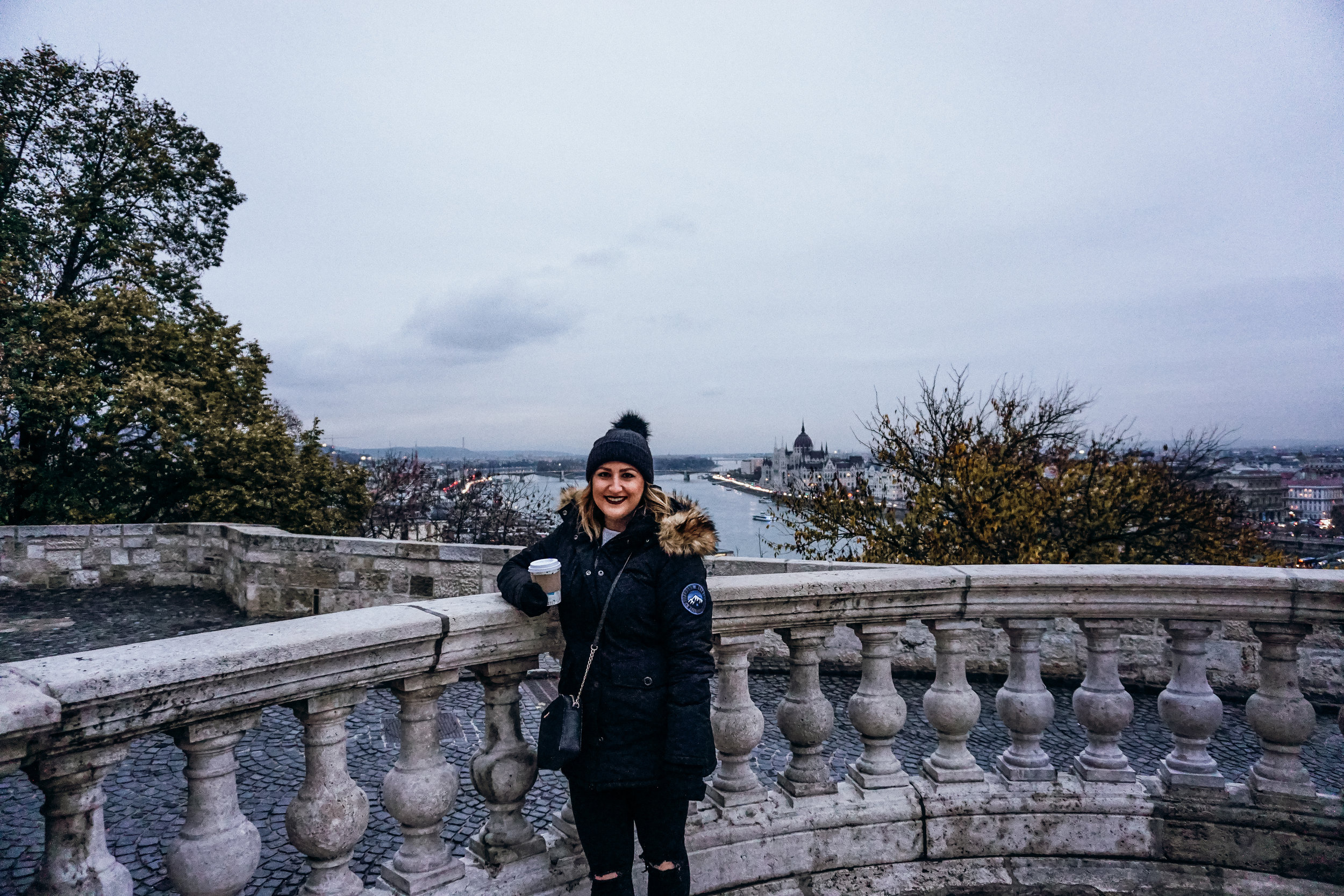
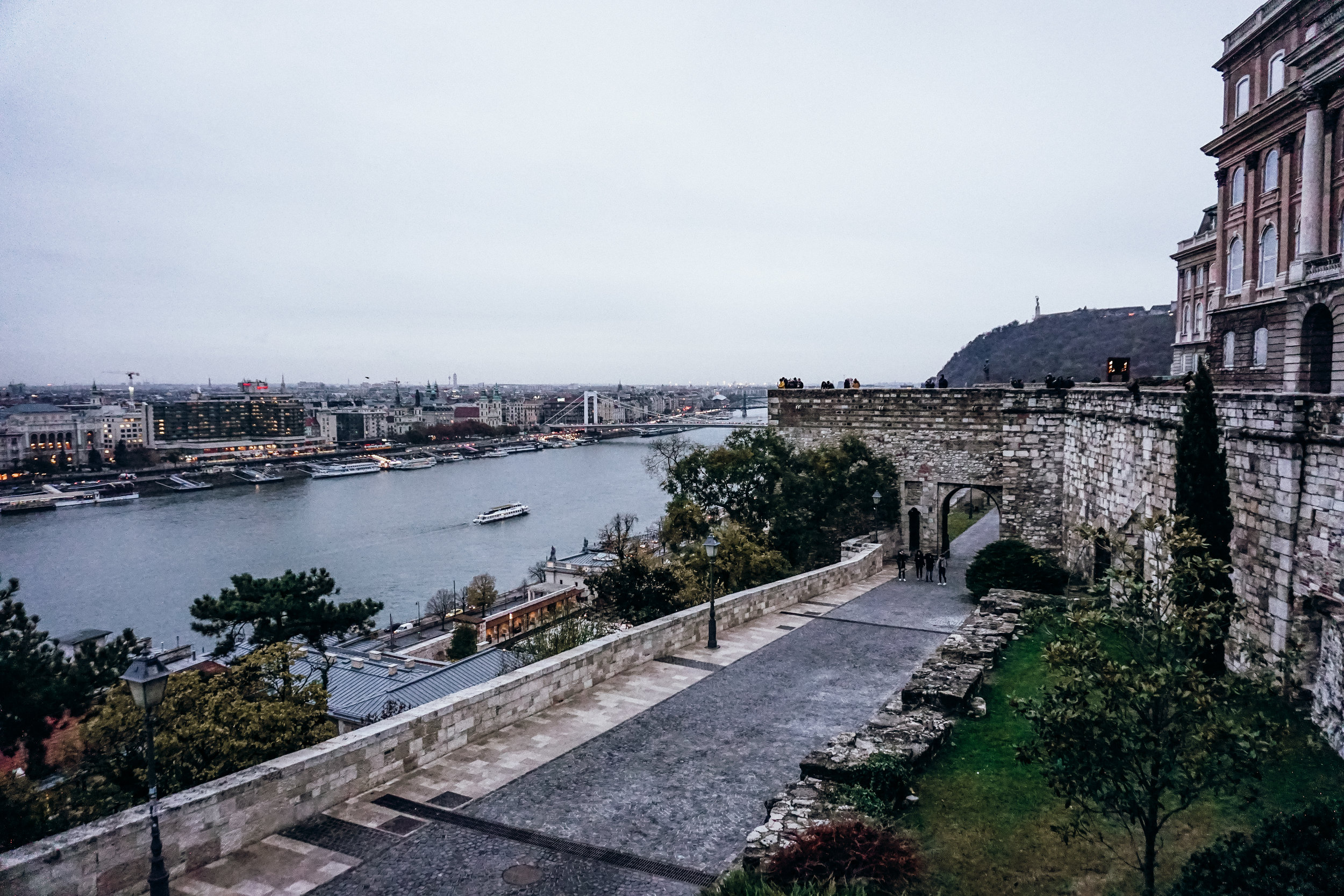
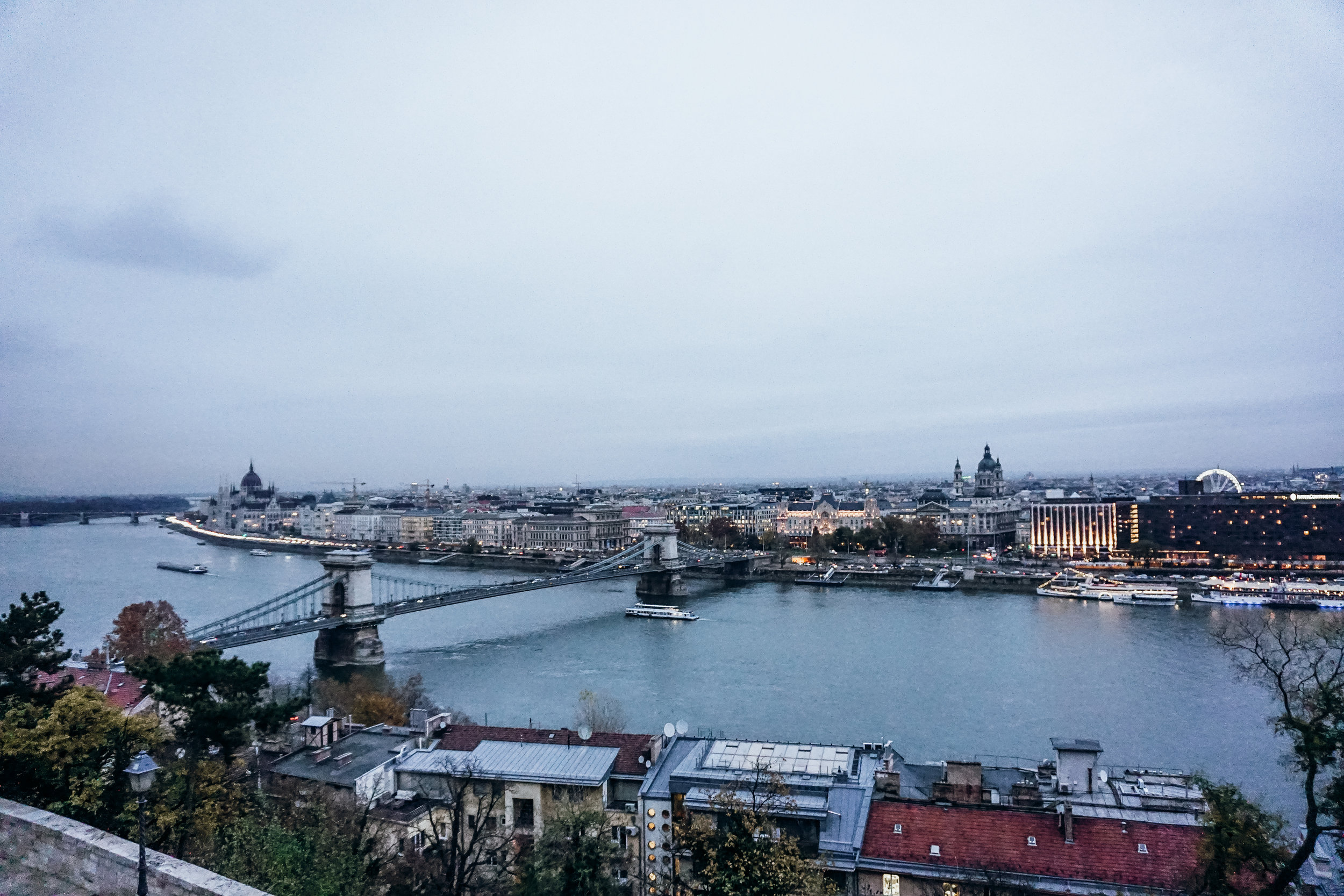
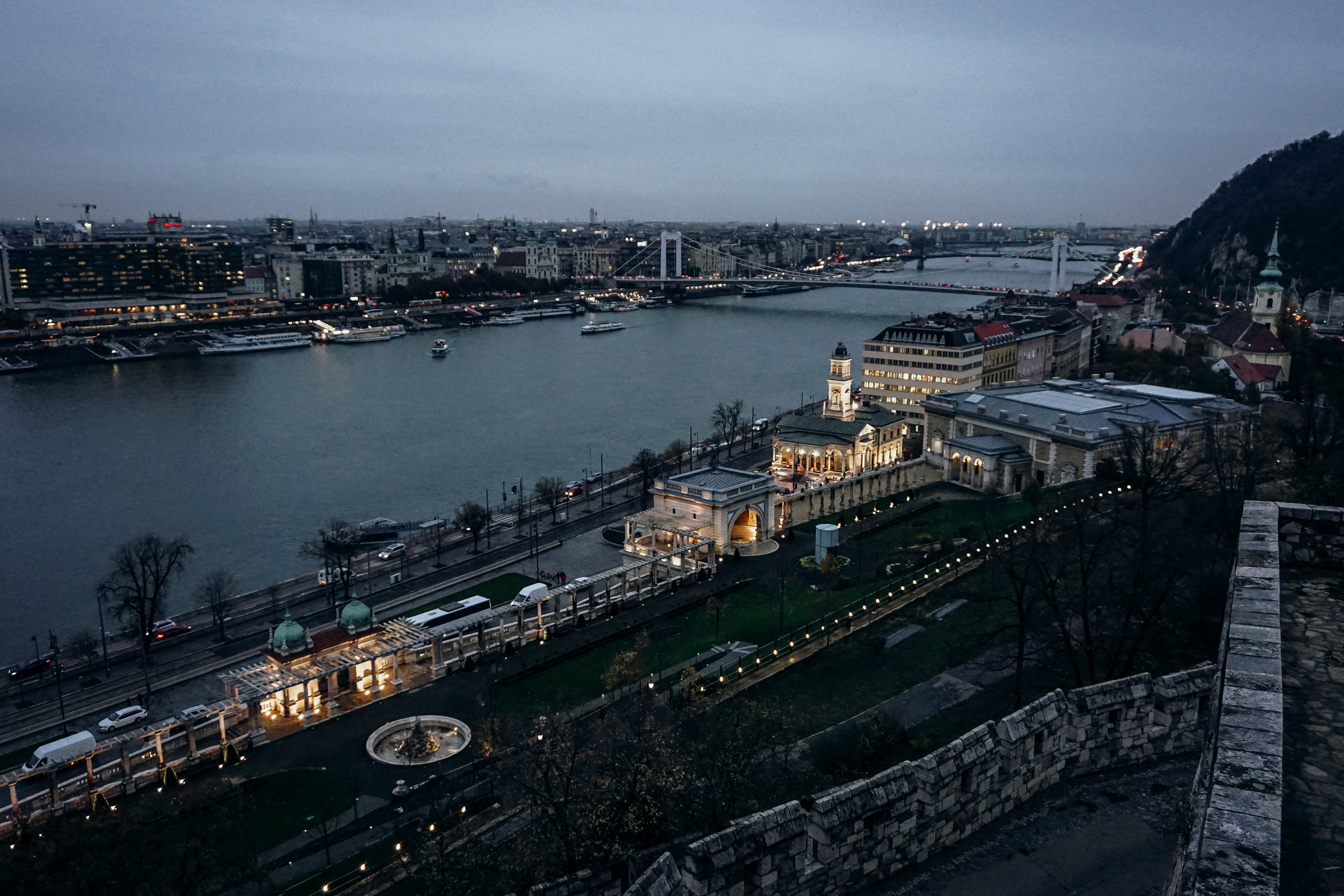
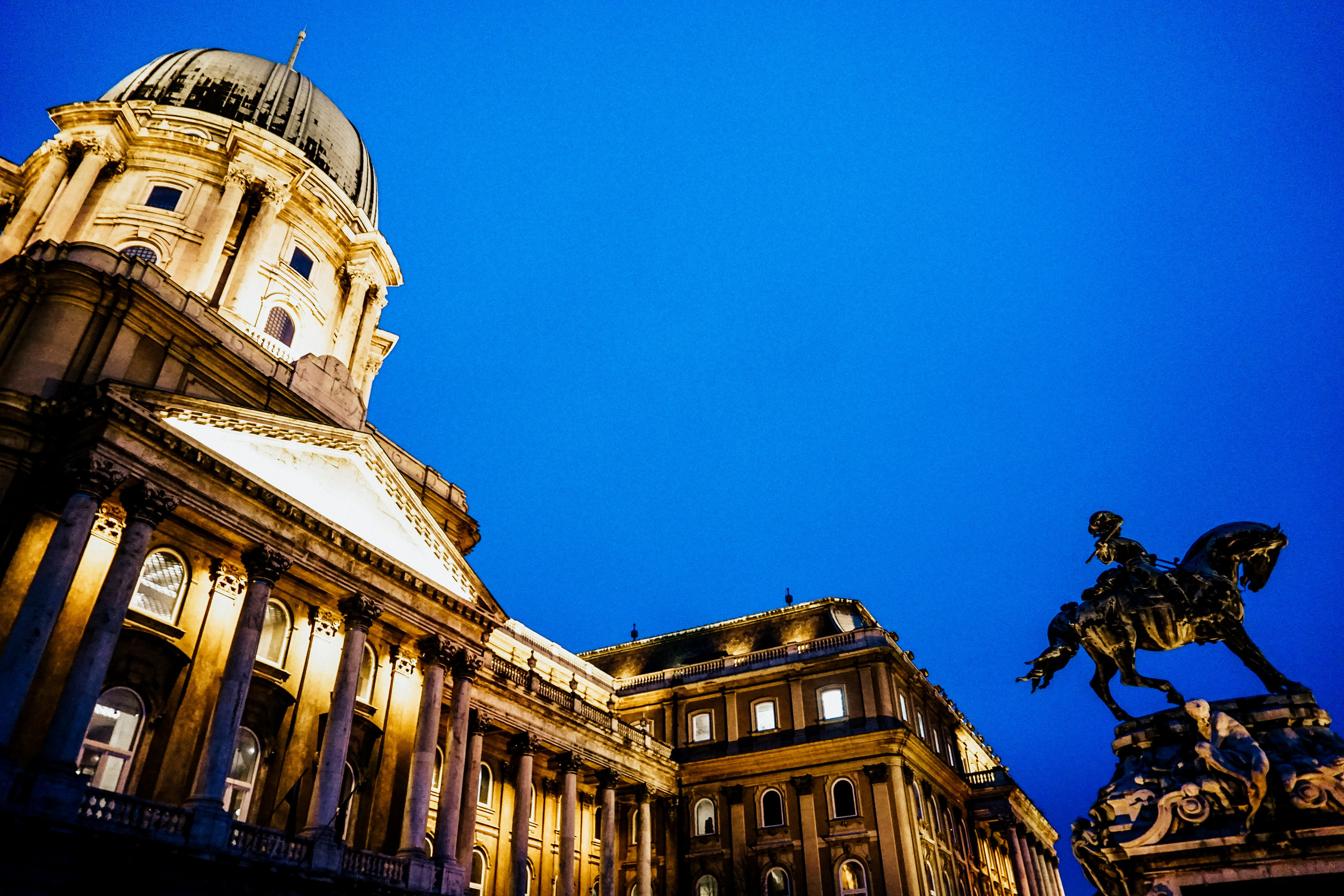
We slowly made our way down Castle Hill and back to the Chain Bridge to snap one shot of the bridge before walking back across it to our Airbnb to grab our swimsuits and head to the famous thermal baths.
Széchenyi Spa Baths
A trip to Budapest isn’t complete without a visit to one of its many thermal baths. The city sits on a fault line resulting in hundreds of natural hot springs that are the sources for these baths. Many cultures believed in the healing powers of natural baths, including the Romans and Ottomans, and modern medicine has even proven that this natural warm water has the properties to help with inflammation and joint problems.
There are many baths in Budapest to visit. We chose to go to the biggest and most popular, Széchenyi Spa Baths. This bath opened in 1913 and its Neo-Baroque architecture transports you back to a time where you feel like you should be wearing a toga and gold-leaf crown.
Szêchenyi is massive and there are a lot of events that take place at these baths, including DJ parties and beer tastings. Make sure to check their website to see what’s going on for the day you want to visit. Chris and I were interested in the more traditional experience of relaxing in the water — no hullabaloo. :)
We got to the baths a little after 7:00 p.m., so we got the evening discount for entry, which was 4,700 HUF / $16.80 / €14,75 per person. We also paid to have a private cabin, which cost us an additional 400 HUF / $1.40 / €1,25. There are locker rooms available for free. Where they get you is the towel rental. Because we were staying at an Airbnb, we didn’t want to bring the only towels we had for our stay, so we had to rent them from the baths. The towel rental is an upfront charge of 4,000 HUF / $14.30 / €12,50 per towel, but you get back half of that upon returning your towel. They also rent out swim caps, which are mandatory for all of the indoor pools. We opted to not rent a swimcap and just experience the outdoor pools. Our total cost for the evening was 13,800 HUF / $50 / €43,50.
Once we got ourselves changed into our swim suits and our towels rented, we braved out into the cold to the outdoor pools, flipped off our sandals, and got into the thermal bath as fast as possible. The first pool we went into was 93℉ / 34℃ and it felt so good. There weren’t that many people there on this particular Thursday night in November, which made it all the more fun to move around the pool to try all the different jets and even get swept away in the circular jet stream that pushes you around and around until you’re ready to merge out and back into the calm waters. We spent about 90 minutes in the first pool and then sped-walked through the cold, night air to the other outdoor pool, which is more of a steam experience. This pool’s water was at 100℉ / 38℃. It is suggested you only stay in this pool for a maximum of 20 minutes, which is what we did. It felt very soothing for our muscles and was the perfect way to relax at the end of the night.
Overall, we spent about two hours at Széchenyi and are so glad we got to experience this piece of Budapest culture. We are all for doing as the locals do. I wish we would have had time to make it to another one of the baths in town. Széchenyi was beautiful, but I was honestly a bit grossed out. I’m usually not that big of a germophobe, but this place gave me a bit of the heebie jeebies. There is hair everywhere — on the floors in the hallways, in the cabins, in the pools and it really grossed me out. I completely understand the need for the swim caps now and wish they would have been mandatory everywhere. This could just be the nature of a thermal bath, but I would have liked to experience another one to see if the cleanliness was any different.
If you do go to a bath, here are a couple tips:
make sure to bring your own sandals;
rent the swim cap, or bring your own;
bring your own towel, if you can;
go at night to get a discount.
How to Get to Széchenyi:
From city centre, you can hop on the M1 subway line from the Deák Ferenc tér stop straight to the Széchenyi fürdő stop and you will be right there. The ride takes less than 15 minutes. Public transportation is included with the Budapest Card.
Fun fact: The M1 line is the third oldest underground system in the world, behind London’s tube and the Mersey Railway. It was built in 1896 as part of the 1000 year anniversary of the city. The cars are teeny tiny, but clean, and make you feel like you’re back in the 20th century.
If you’re interested, here is a link for a Trip Savvy article listing out their 6 Best Thermal Baths in Budapest.
Dinner at Sakura Ramen
Looking for a late night dinner spot that isn’t McDonald’s? On the same street as our Airbnb, just a few blocks up from the Deák Ferenc tér subway stop, was Sakura Ramen, a quaint Japanese spot serving sushi, ramen, and other Japanese cuisine.
Day 2:
The stomach bug I had was no joke, which meant we had a bit of a later morning again for our second full day. But, it was okay because we actually enjoyed moving at a more leisurely pace than normal. We had about a half-day left of our 24 hours with our Budapest Cards, so we were going to take advantage of it and head a little outside of the city to a rather bizarre attraction.
Memento Park
Located on the outskirts of Budapest, about 8 miles / 13 km from city centre is an open-air museum that showcases all of the city’s old communist statues at a place called Memento Park. There are statues of Lenin, Soviet Red Army soldiers, Stalin’s boots, and an old communist era car, a Trabant 601. Entrace to the park is 1,500 HUF / $5.30 / €4,75, or free with the Budapest Card.
Upon entry, there is a small shop selling old Christmas cards from the Soviet Union, Soviet knick knacks you can buy, and communist music is blaring. Guys, it was so weird. We instantly felt out of place and like it was taboo to be there. I appreciate that the city didn’t want to completely destroy these pieces of history, and to be fair, this park is literally in the middle of nowhere, but it did feel like whoever runs it today is still trying to live in what they would deem the “glory days.”
After saying 5 Pledge of Allegiences and singing the American National Anthem 10 times, we entered the park and truly had the greatest and simultaneously strangest time checking out all of the statues. I never thought I’d see a real life statue of Lenin. Enjoy the photos below. We literally had no idea how to take pictures with these statues, so please don’t mind our awkwardness.
Fun fact: You’ll see Stalin’s Boots in the pictures below. Chris is pointing at them in one of the pictures. The boots are all that remain from a massive statue of Stalin that had stood erect in Budapest, but was torn down by the Hungarians during a rebellion against the Soviets in 1956.
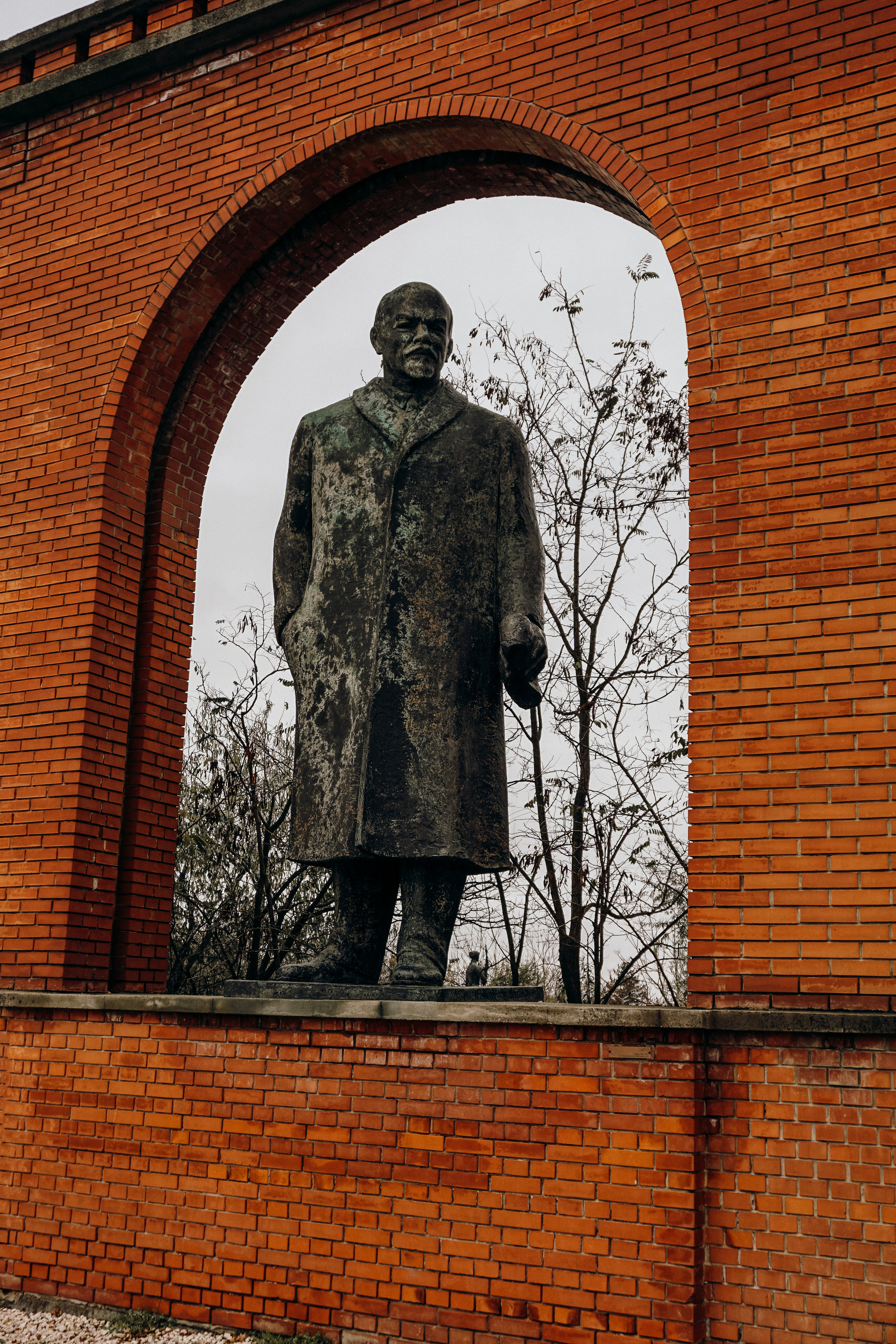
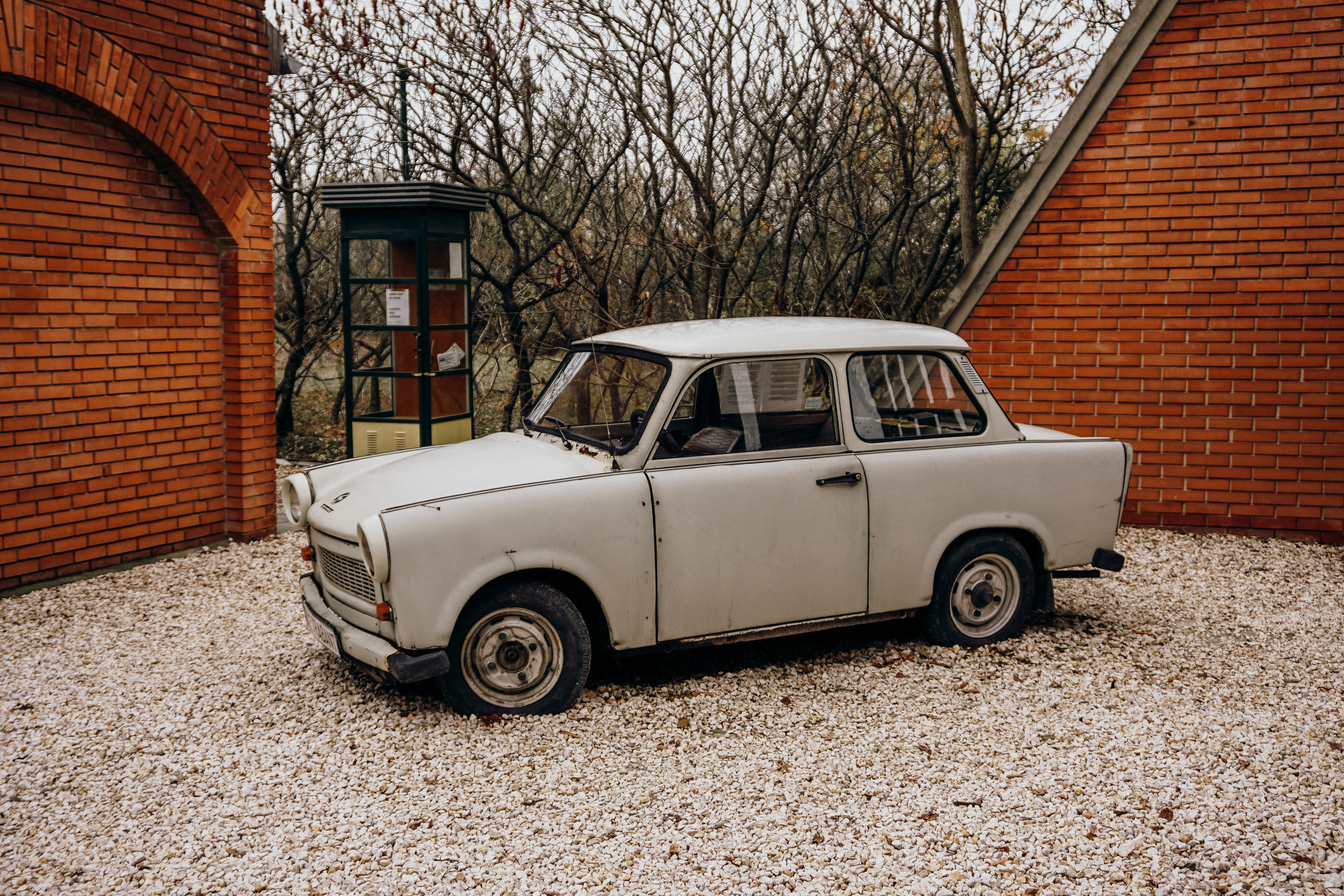
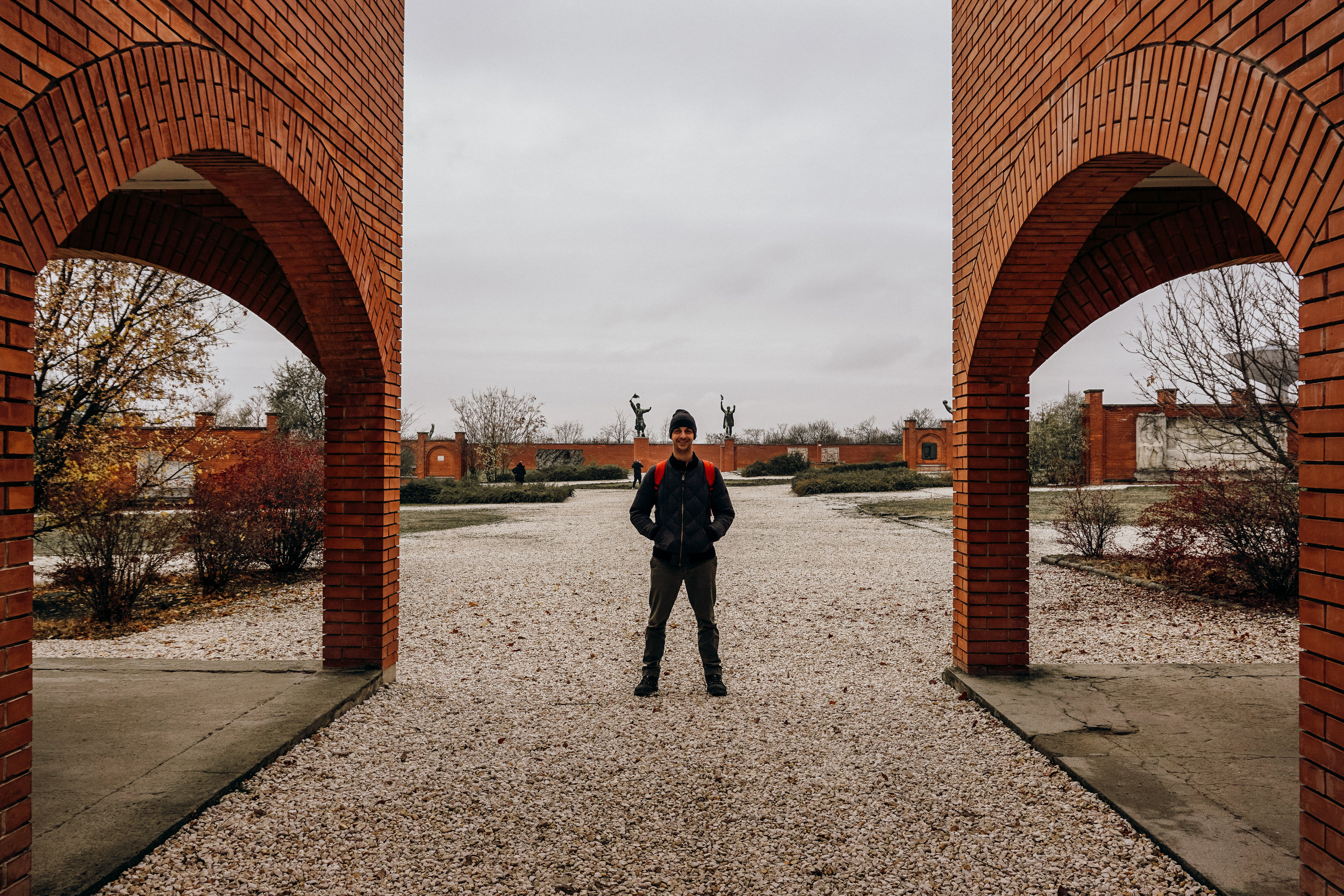

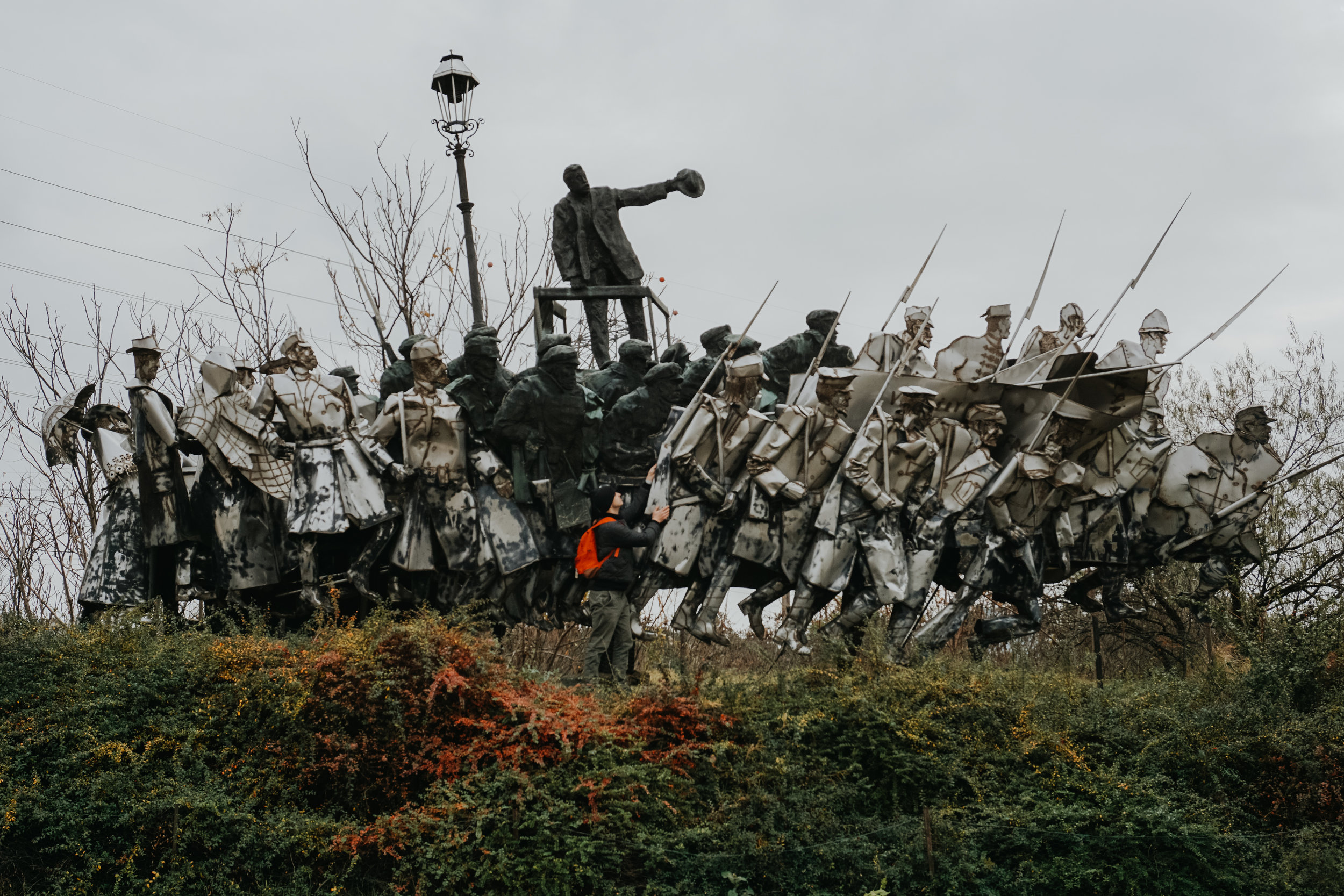
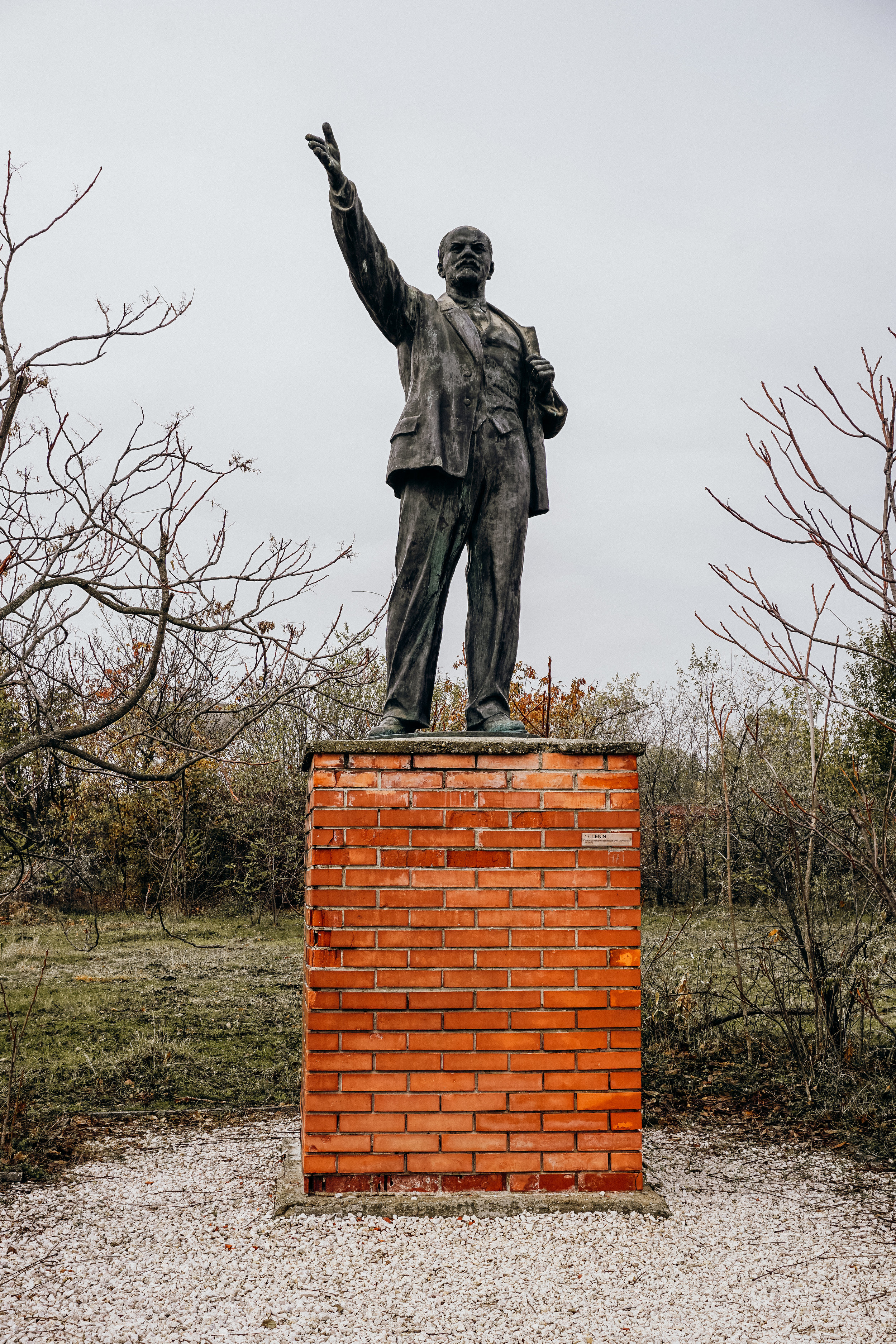
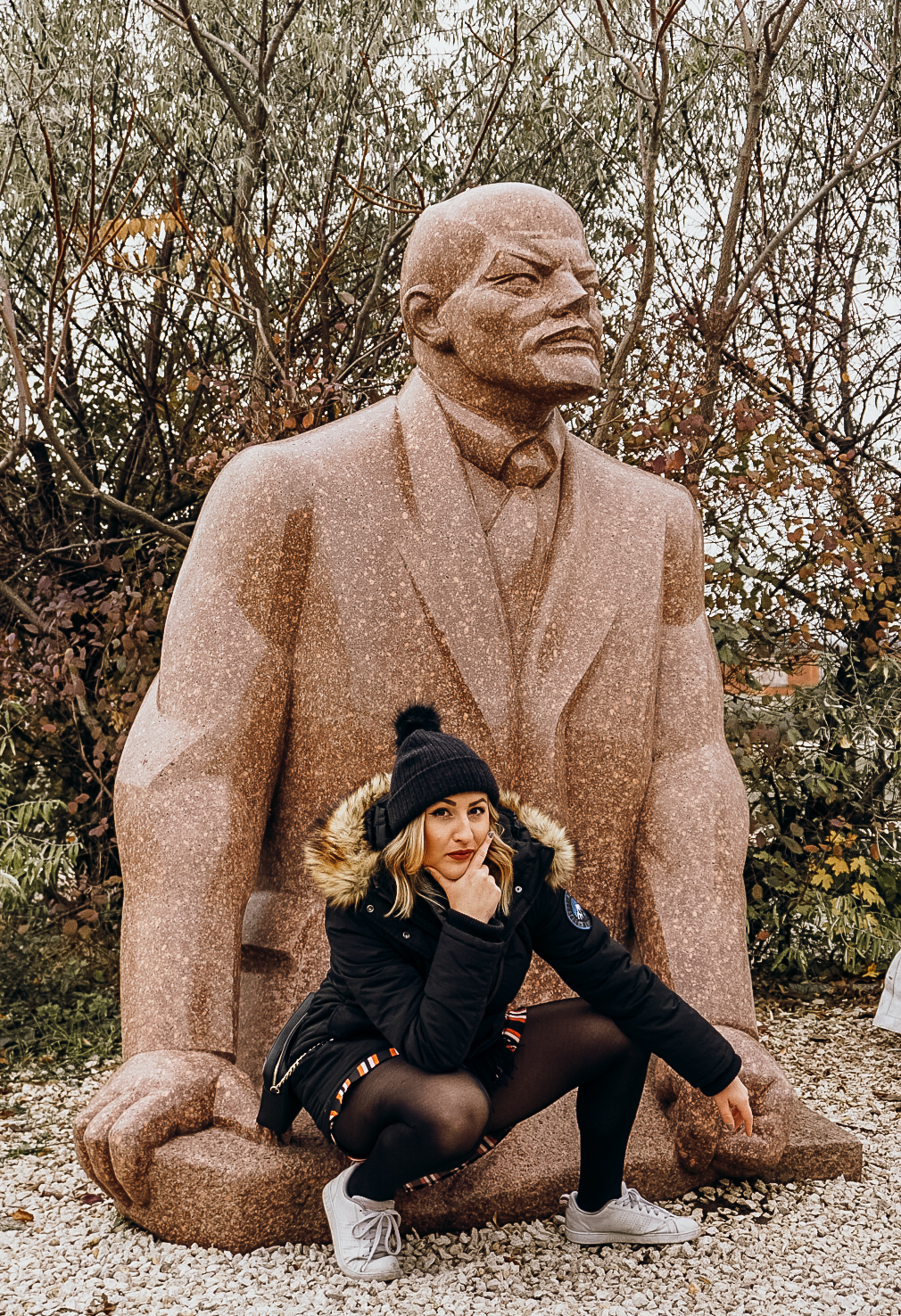
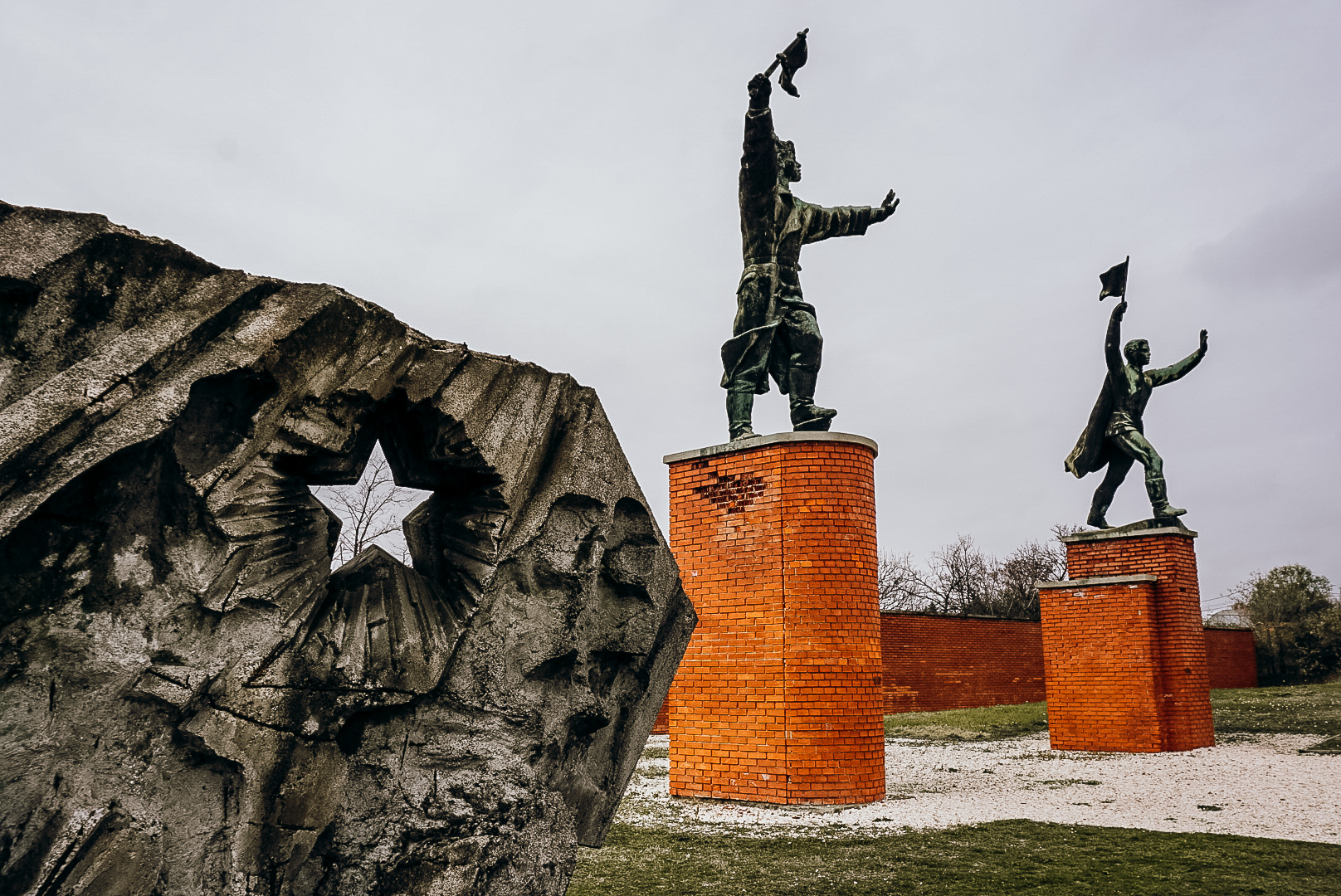
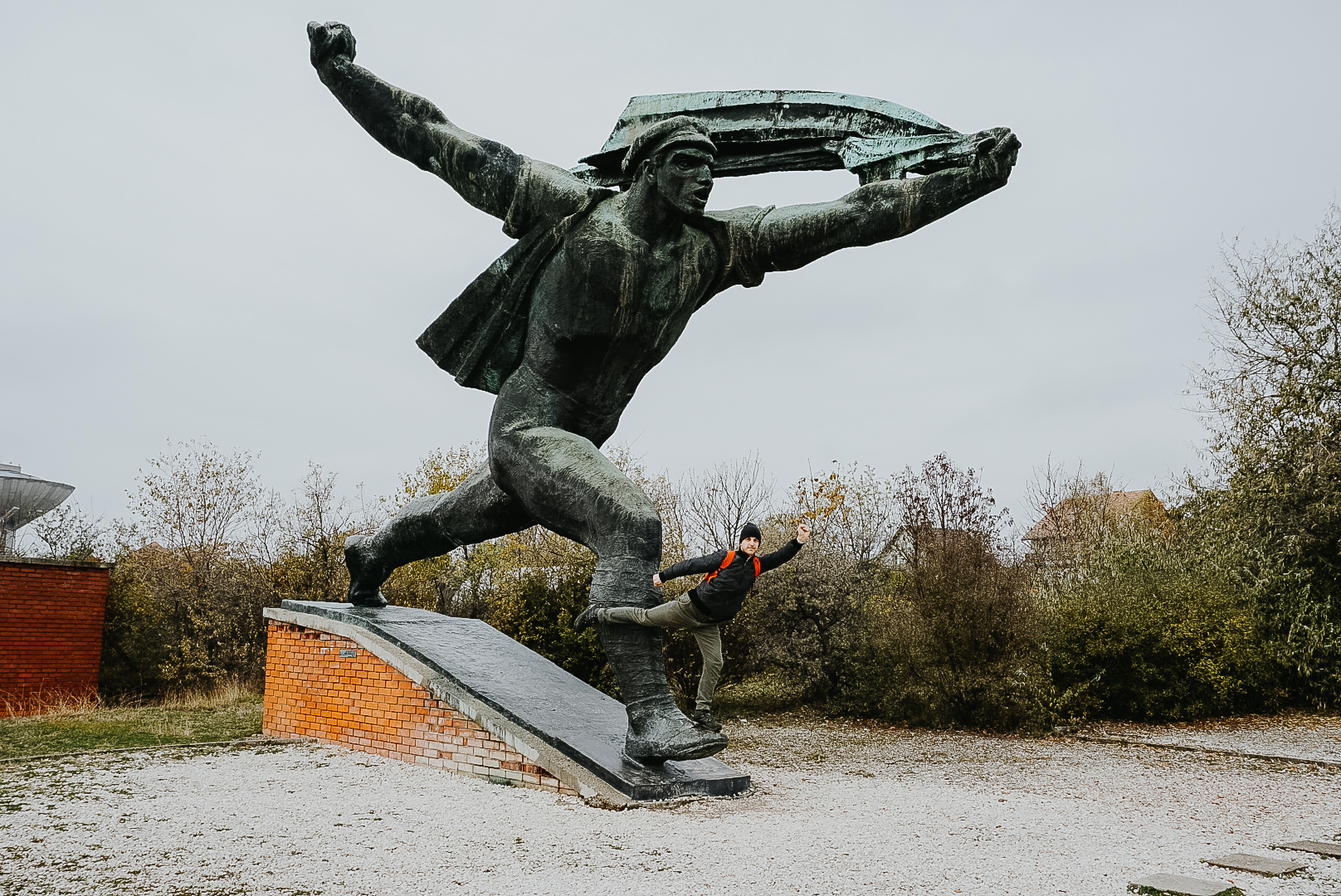
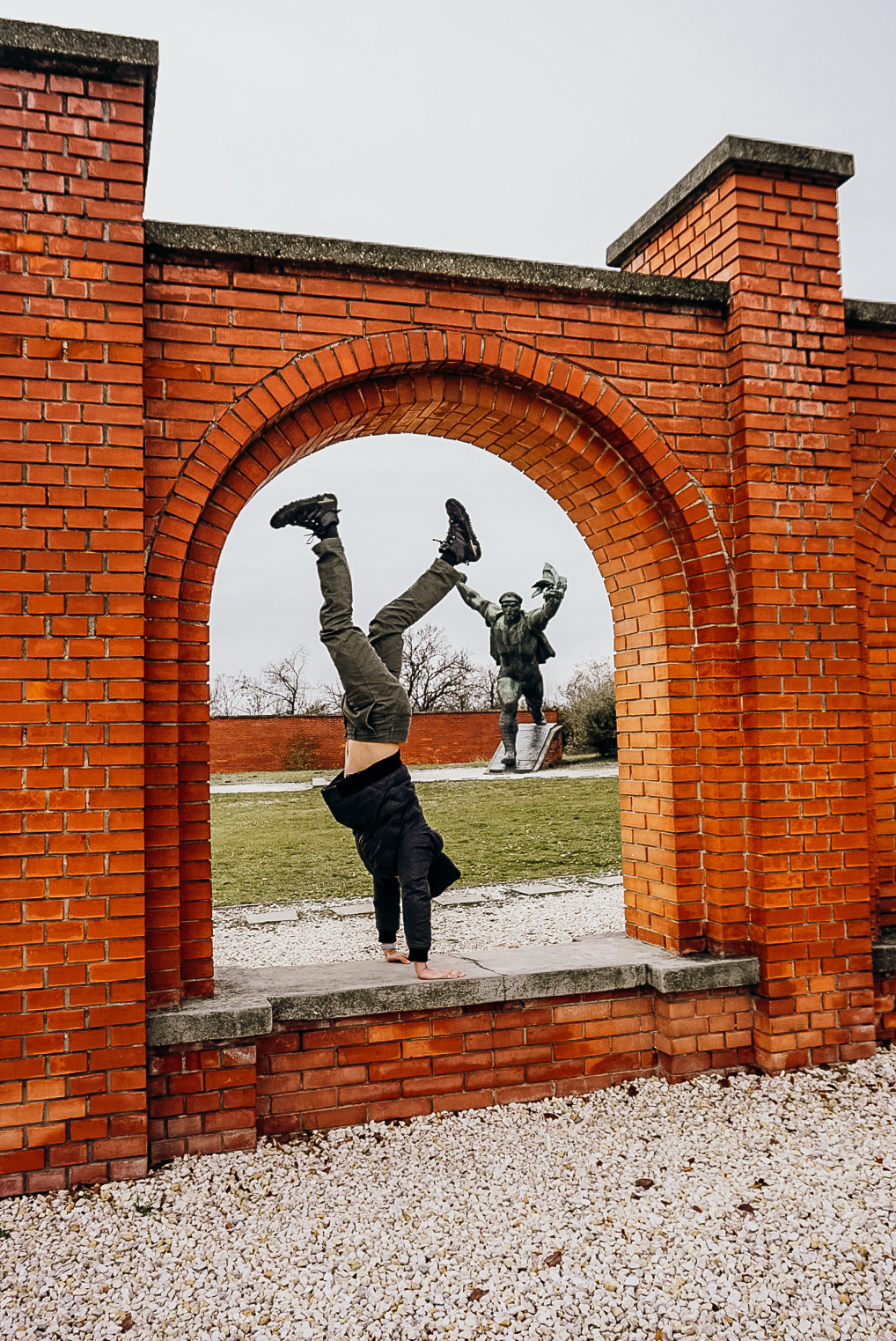
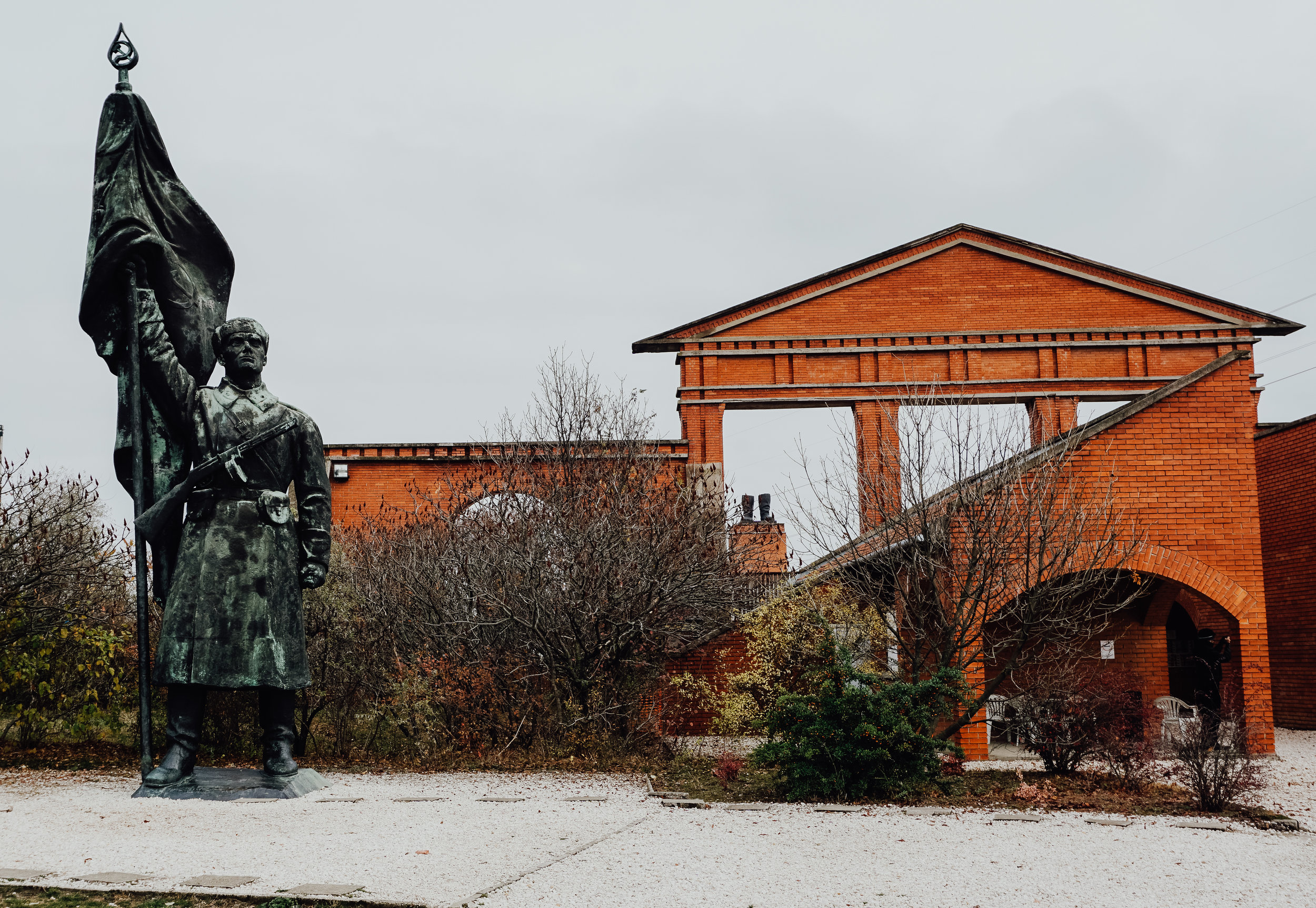
How to get to Memento Park:
Direct Bus: From April-October, there is a direct bus that leaves from Deák Square at 11:00 and returns to the city centre at 1:00; this bus runs from November-March as well, but only on Saturdays, Sundays, and Mondays.
Public Transit from Deák Square: Take the 47 yellow tram to Fővám tér. Go underground to the subway to take the M4 from Fővám tér to Kelenföld vasútállomás. From here, exit the subway station. Buses 101B, 101E, and 150 all make stops right by Memento Park. [If this sounds hard, it’s not — we did it and it was a breeze.]
Taxi: Download the Taxify app, which is Hungary’s version of Uber or MyTaxi. The ride to Memento Park will cost about 4500 / $16 / €14.
If you ever visit Budapest, make the effort to get out and see this strange statue park. It is such a different type of “attraction” and is unlike anything you will ever see. There are a few guided tours offered through various agencies and I would recommend taking one of those to give more light and context to the park and its statues.
Lunch at Central Hall Market
Budapest’s Central Hall Market is the city’s largest market hall filled with endless stalls selling fresh produce, meat, spices, and souvenirs galore. The hall was built in 1897 and it still has an old-time feeling inside that makes you feel like you’ve been transported back a few decades to a simpler time before the Whole Foods and Tescos of the world became our grocery staples. We walked around the first level checking out all the different grocery stalls — if you need paprika, this is the place to get it! The place was bustling and it was great to see all the local support.
While watching Rick Steves’ YouTube video on Budapest, his local tour guide brought him to the Central Hall Market to eat lunch at a food stall up on the second level called Magyaros. Magyaros serves fast, home-cooked Hungarian staples and is the perfect place to try a bunch of different favorites while sitting on a stool overlooking the entire market. We tried the potatoes and sausage and traditional goulash — yum! Hot comfort food was the right choice for that chilly, November day.
If you visit the Central Hall Market, don’t forget to check out the souvenir shops. It was a great place to pick up a few Christmas gifts for family!
Heroe’s Square
For the afternoon, Chris and I walked around the area near City Park. This part of the city has museums, Heroe’s Square, a castle, and the Szêchenyi Baths. Heroe’s Square is a large city square filled with monuments, including the Millennium Monument, commemorating the city’s 1000 year anniversary, the tomb of the unknown soldier, and statues of the seven original Magyar chieftains. When we got there, there was a massive concert stage set up, so it seems like it is a popular place for city events.
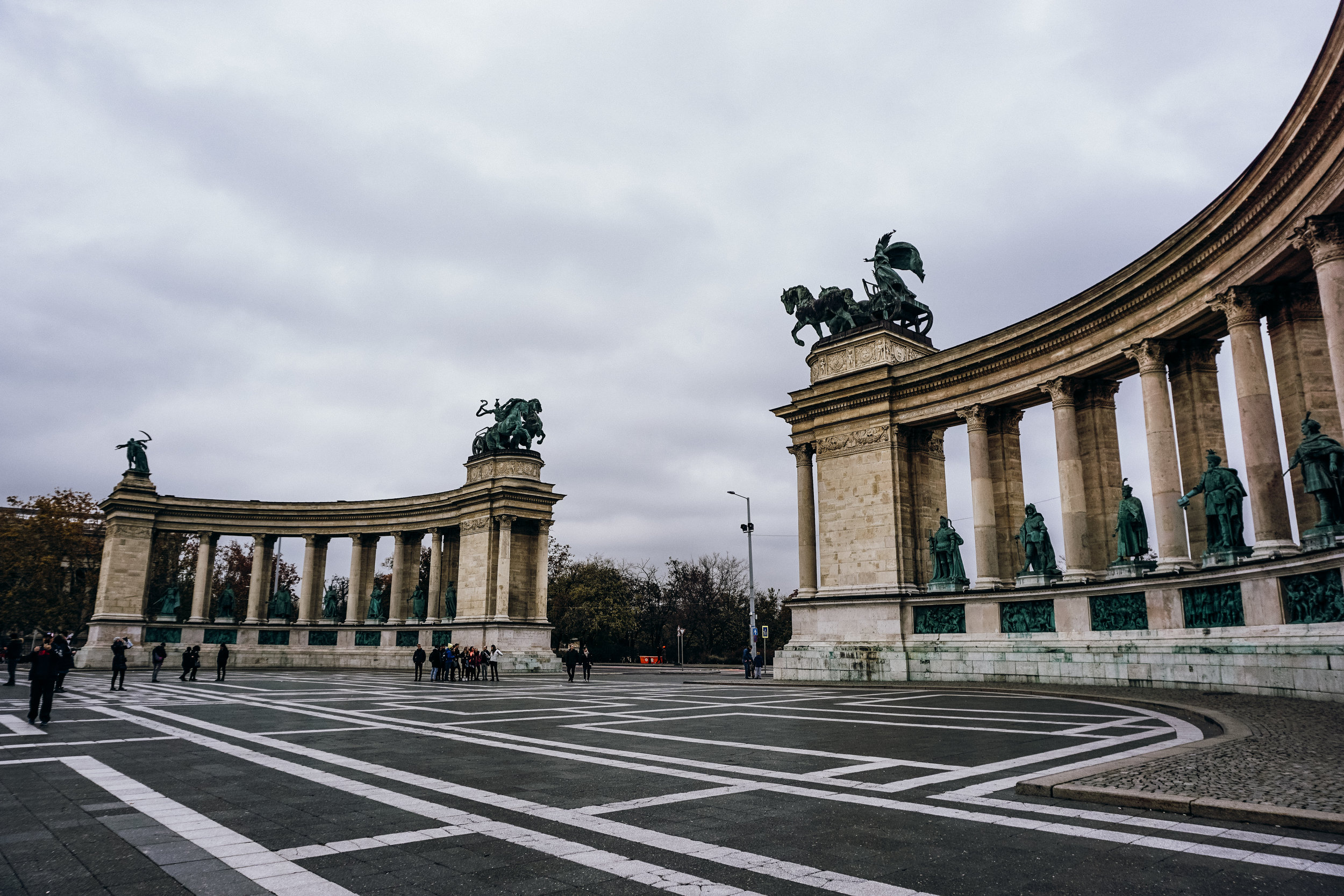
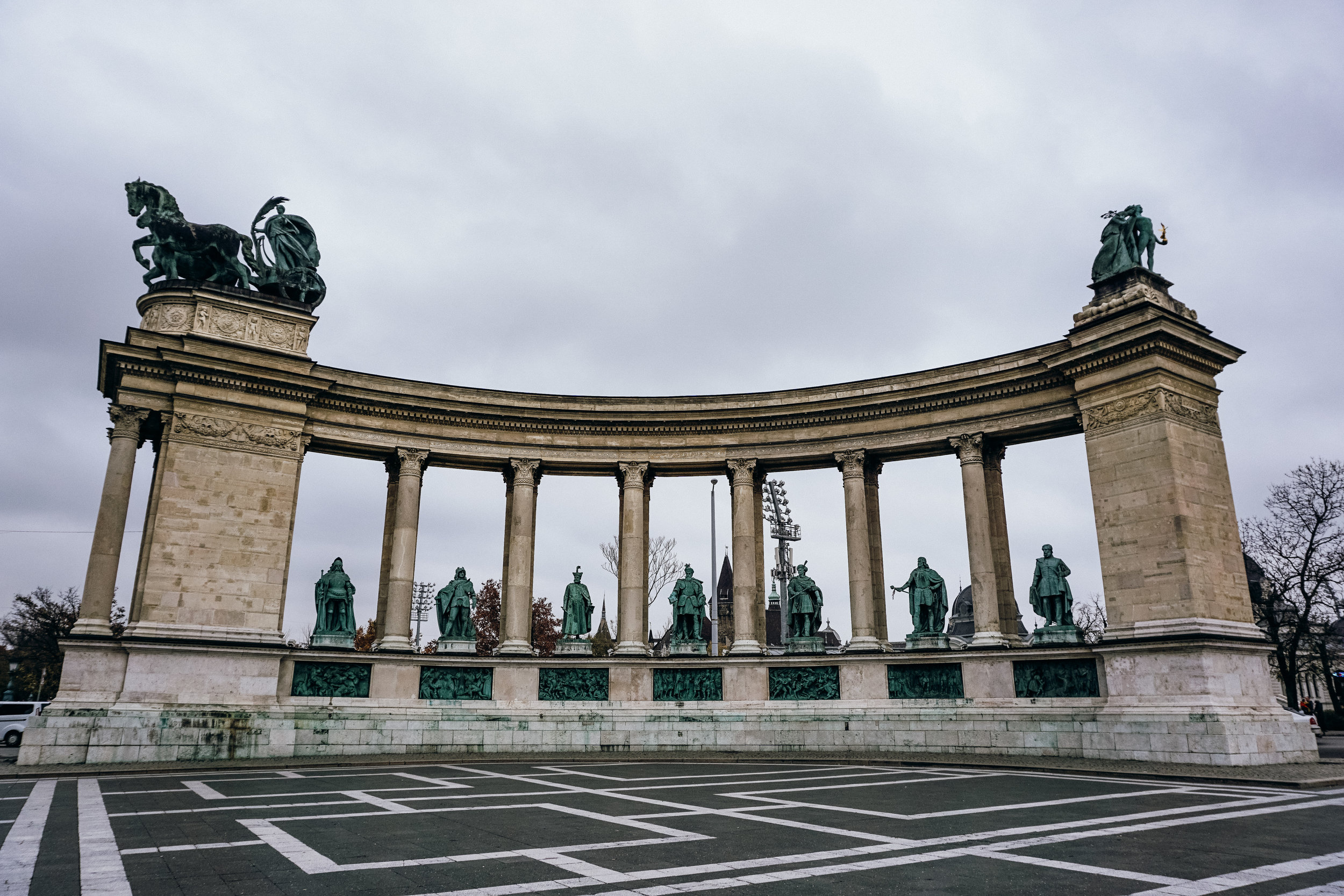

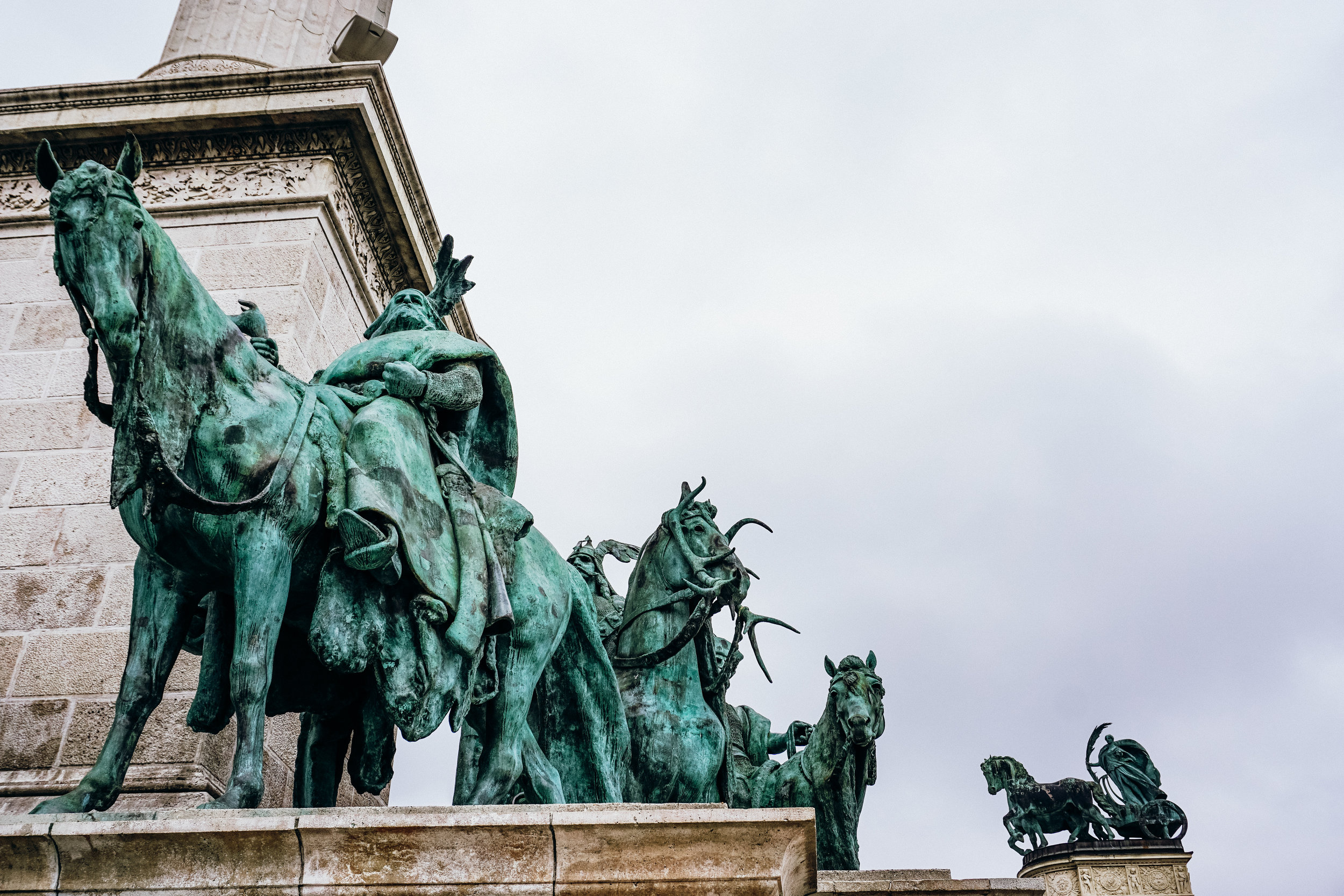
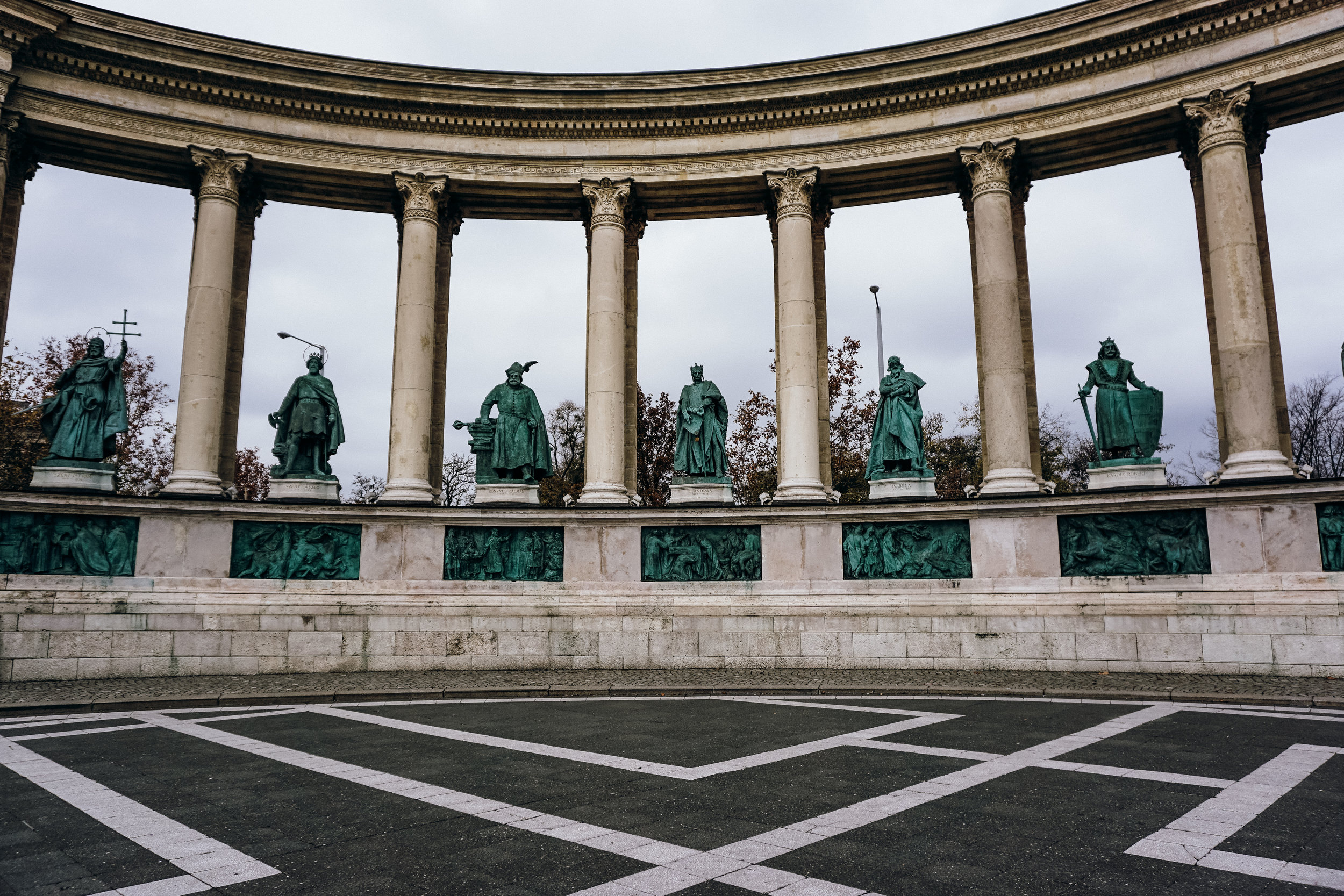
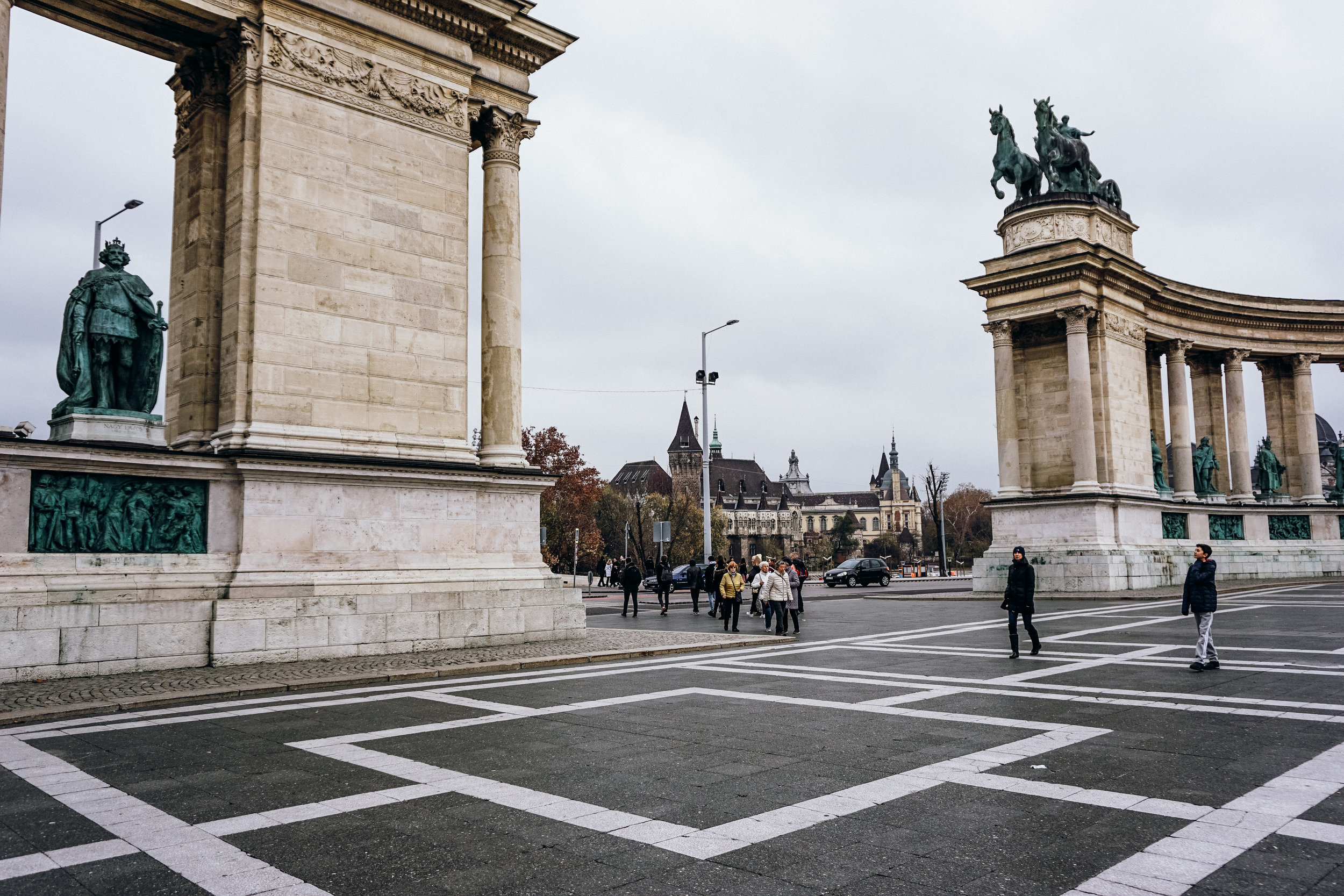
Instagram vs. Reality: Heroe’s Square Edition
Right across the street from Heroe’s Square, we saw a massive ice skating rink, which always piques our interest since Chris has played hockey since he was 6 years old. No one was skating at the time, but we admired the work of the Zamboni driver and admired the views from the park.
Vajdahunyad Castle
Located in City Park right next to the skating rink is one of the most beautiful, romantic castles I have ever seen - Vajdahunyad Castle. Like many of the city’s architectural gems, the castle was constructed in 1896 as part of the 1000 year anniversary for Budapest. The castle is an eclectic mix of different architectural styles including Romanesque, Gothic, Renaissance, and Baroque and houses the Hungarian Museum of Agriculture. Chris and I had a great time walking around the grounds and admiring the castle. I felt like Belle in Beauty and the Beast!
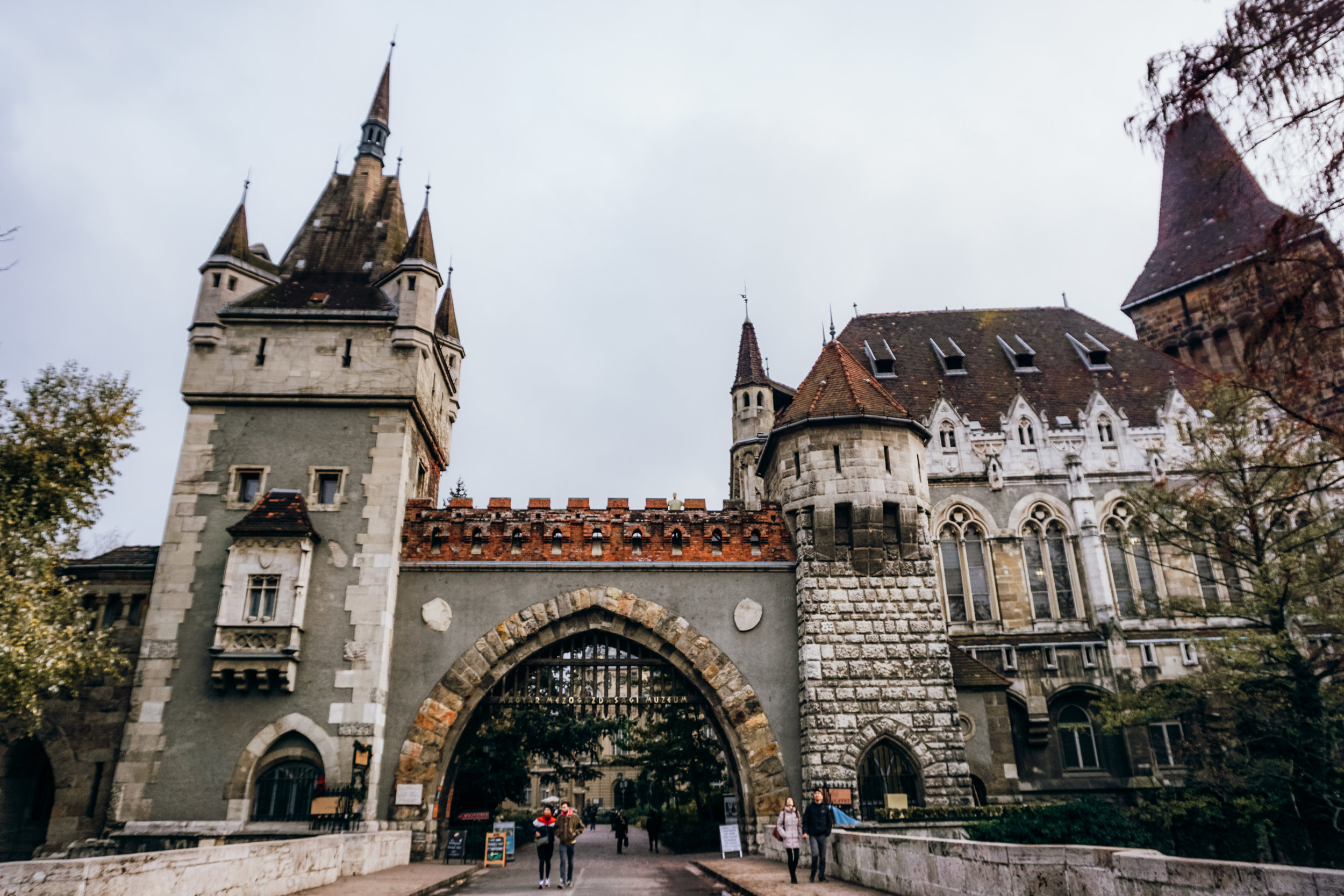
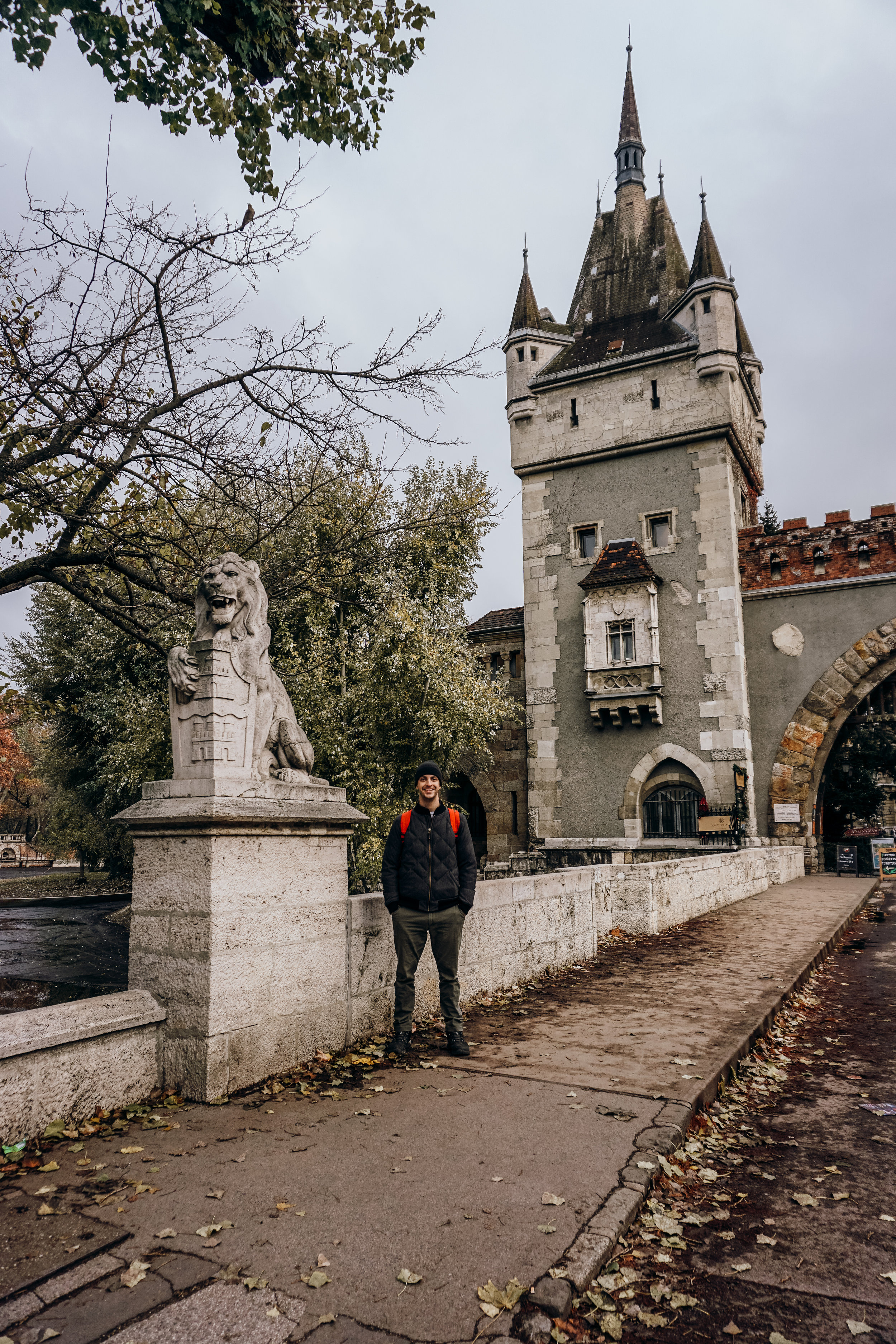
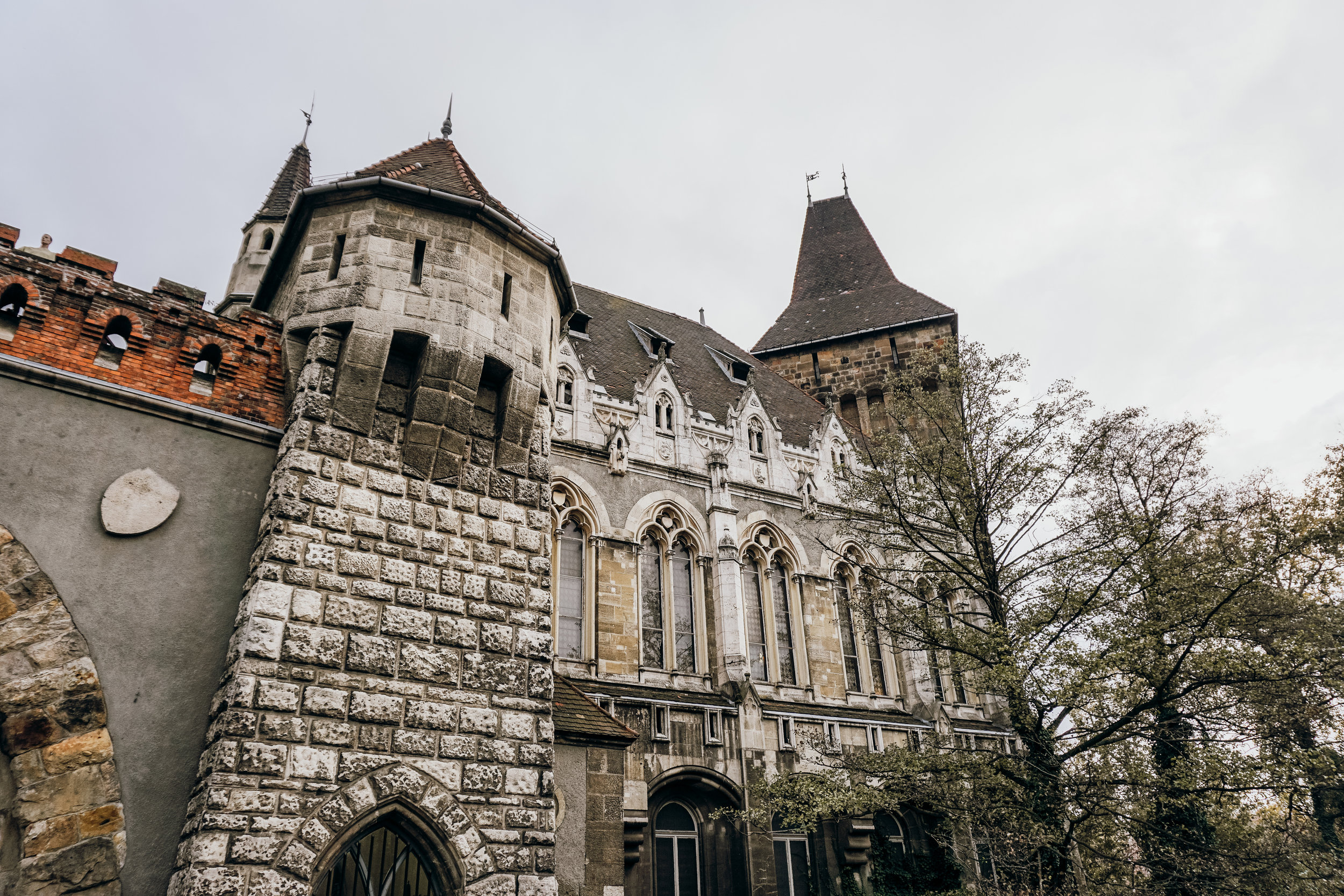
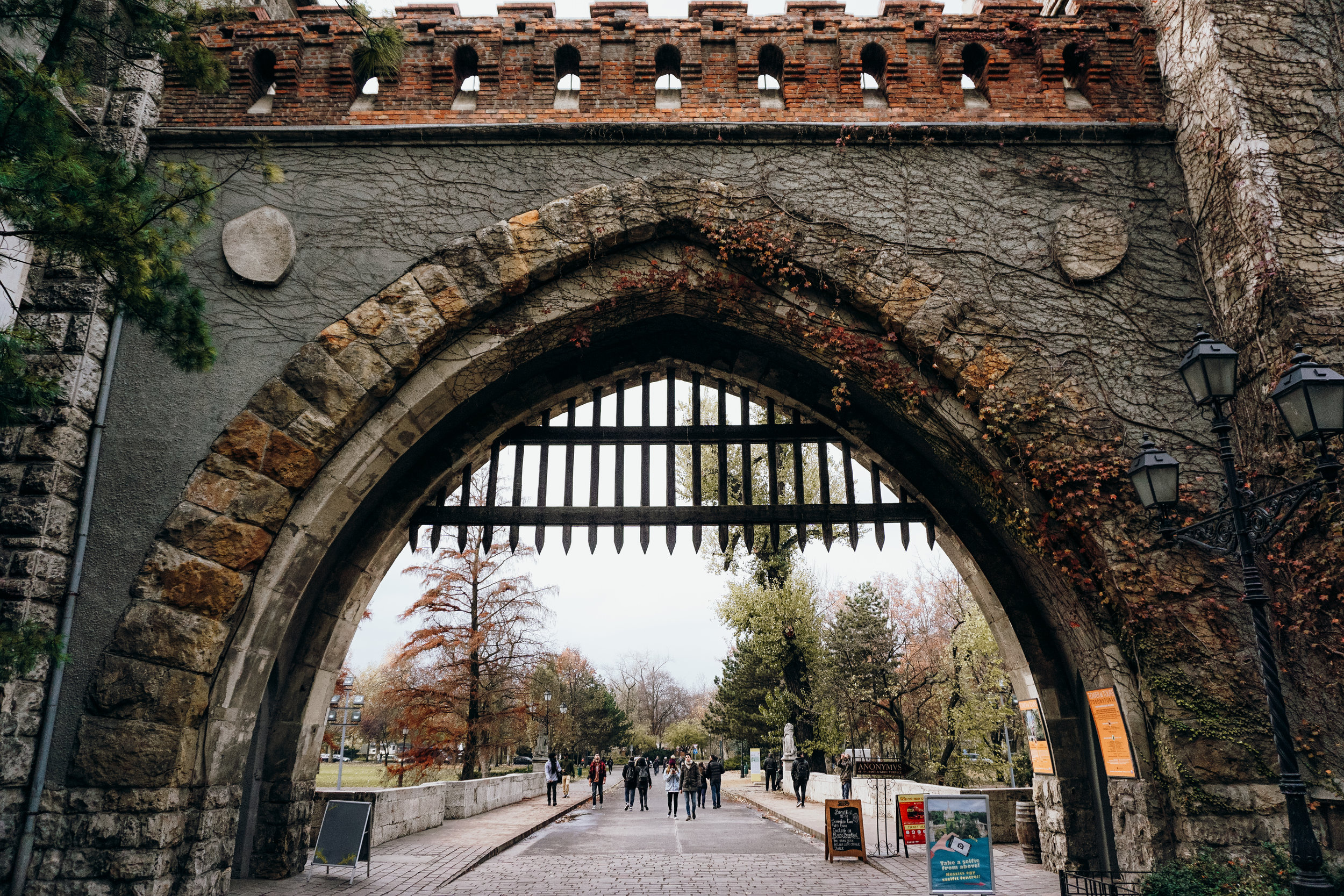

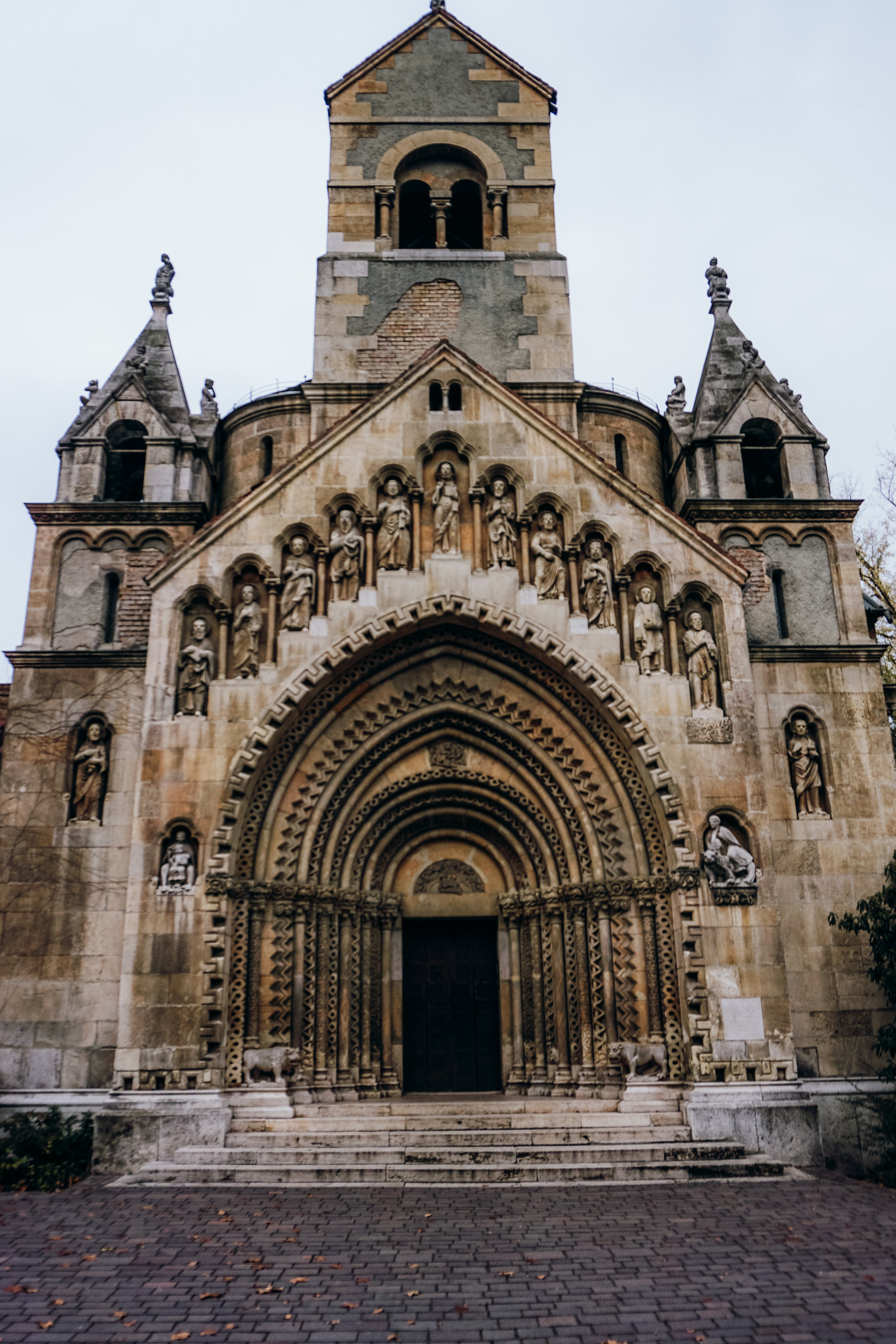
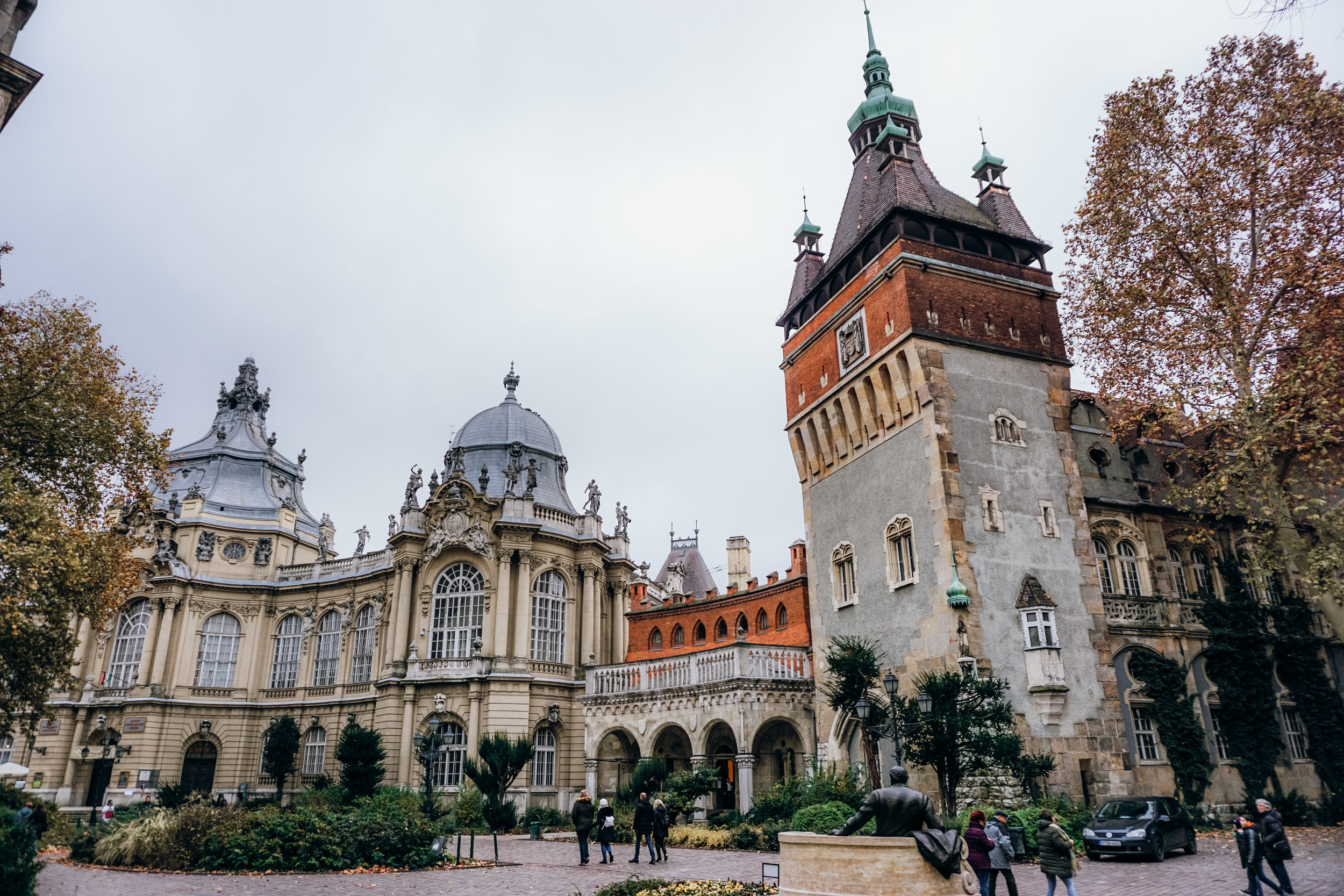
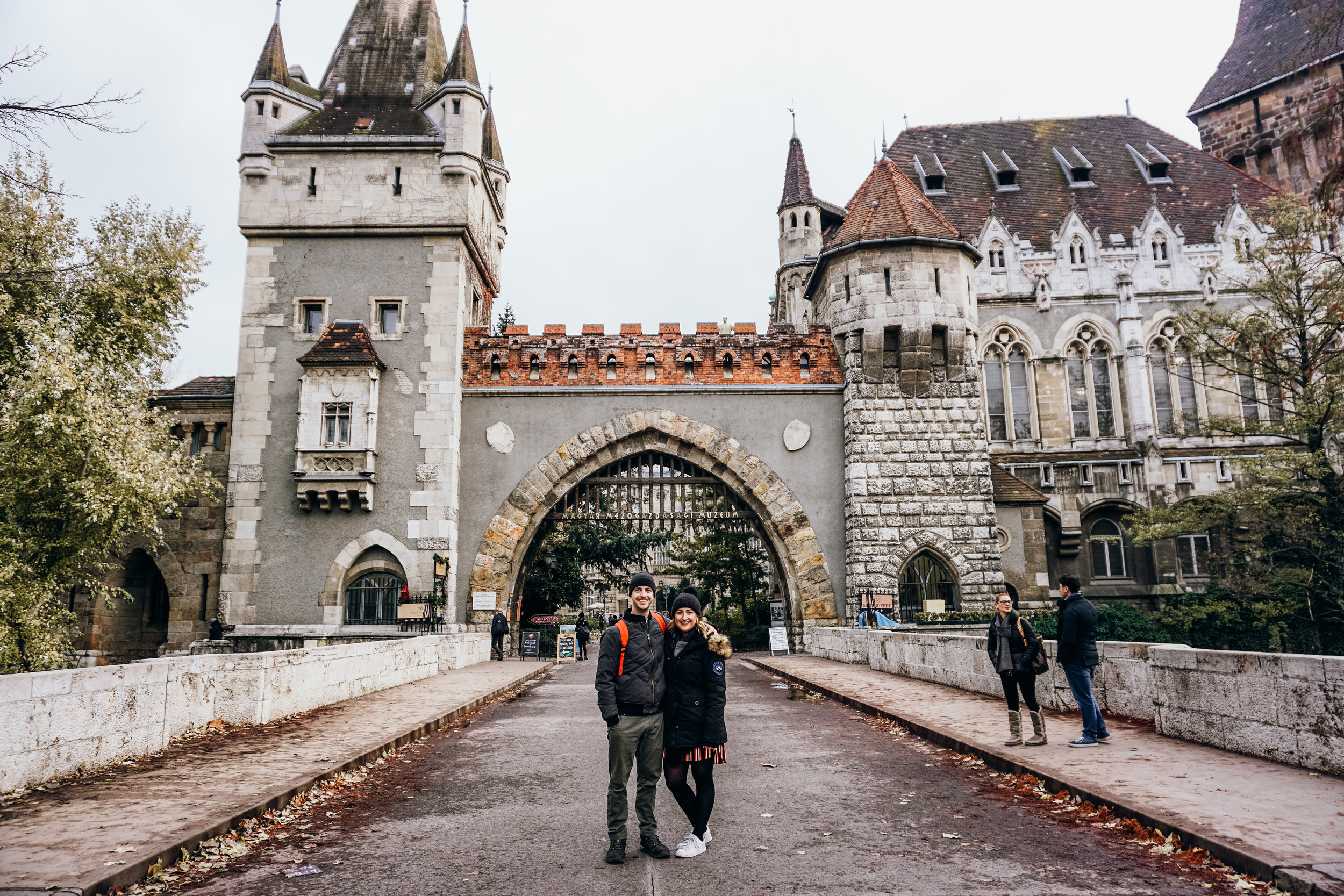
House of Terror
The entrance to the museum as you look up.
The house of what? Yes, you read that right. The House of Terror is a museum in Budapest that has exhibits showing a historical representation of the fascist and communist regimes in 20th-century Hungary and is also a memorial to the victims of these regimes, including those detained, interrogated, tortured or killed in the building. If you recall from the historical timeline above, Hungary went through harrowing times during WWII and the decades thereafter being under the control of the Soviets. There was no reprieve for Hungary’s people. The museum does a fantastic job showing just how dark and scary those times were. Specifically, it talks about how the Hungarian government let the Nazis into Hungary; how the Nazis murdered over 60,000 Jews in the Holocaust; and how 700,000 Jews were moved to Stalin’s gulags, many never to be seen again. The museum only opened in 2002, so there is a lot of multi-media. Every room has its own theme and is so particularly done that it grabs your attention and draws you into every piece of information offered.
One of the most sobering parts of the museum is the basement, which was basically like a dungeon, and is where the Nazis and Hungary’s secret police, the Arrow Cross Party, and later the communist political police, detained, tortured, and killed its prisoners. There was a cell called the “Foxhole” where there were no lights and the ceiling was so low the prisoner couldn’t stand up straight; a water cell where the prisoners had to sit in cold water all day long; a cell where only one person could fit and there were light bulbs installed at eye-height so the prisoners had light in their eyes at all times. It was unbelievable to see. To read more about the cells, you can click here.
The museum is open Tuesday - Sunday from 10:00 a.m. until 6:00 p.m. It is closed on Mondays. Entrance to the museum is 3,000 HUF / $10.75 / €9,45 per person. I would plan on spending between one to two hours here.
How to get to the House of Terror:
From Déak Square, you can hop on the M1 subway a few stops to Vörösmarty utca and it is just a 3 minute walk from there.
Danube River Cruise
Budapest has to have one of the most impressive riversides in the world with Buda Hill on the West side and Parliament on the East side, not to mention all of the individually designed bridges spanning the Danube. The late great Anthony Bourdain described Budapest as having “architectural porn,” so it should come as no surprise that there are many options when it comes to cruising the Danube. We bought tickets with Legenda and took their one-hou river cruise at night to see the city all lit up.
The cruise was okay. If you’ve ever taken a river sightseeing cruise, it was the same style of boat that they all use — rows and rows of seats, all windows, and headsets to follow along with the audio guide. We got a free drink and learned some fun facts about the city, but I got so annoyed of the people around us taking crappy picture after crappy picture on their phones. It wasn’t until towards the end that we realized we could go outside and up onto the top deck of the boat, which totally turned around my attitude for the cruise. It was chilly, but we were properly dressed and ended up getting a money shot of Parliament. So was it worth it? Yes, just to get that shot!
The cost of the cruise was 5,900 HUF / $21 / €18,50 per person and departs several time during the day and night.
Walk the Danube Riverside
After the cruise, Chris and I walked back towards the center of town to try our hand at getting a long exposure shot of the Chain Bridge. Earlier that morning, we had watched YouTube videos on how to shoot long exposure on our Sony a6000 camera. We thought practicing on the Chain Bridge would be a fun night activity before grabbing dinner and tucking in for the night. Usually, you use a tripod to stabilize the camera when shooting in long exposure, so we had a lot of laughs with our makeshift stabilizing using a street sign, Chris’ bodyweight, and our gloves. I don’t think we did so bad!
Dinner at ÉS Bisztró
We had no dinner plans in mind, so we walked towards the main shopping street aptly named “Fashion Street” and found a restaurant called ÉS Bisztró, which was casual dining. The restaurant had a great atmosphere and a decent menu, but the food was very okay. Since we were cold from being on the deck of the boat and then walking the river, we ordered some comfort food in the style of a cheeseburger for Chris and fried chicken for me.
Day 3:
We took it easy for our last full day in town and kicked off the morning with some really great coffee from Goa, located right next to our Airbnb, and some Black Friday shopping. Yes, there are Black Friday shopping deals outside of the States. Thank you for my new Timberlands, Hungary! After picking up a few things, we set out to see the Shoes on the Danube Memorial, Parliament, and St. Stephen’s Basilica.
Shoes on the Danube Memorial
All the way down the river by Parliament is a memorial for the 3,500 people, 800 of which were Jewish, who were murdered by the Arrow Cross Party during WWII. They were taken down the river, ordered to remove their shoes, and shot and killed so that their bodies would fall into the river and float away. Absolutely horrific. The memorial consists of 60 pairs of cast iron shoes. It’s a powerful piece and a good place to visit after the House of Terror to really reflect on the horrors the Hungarian people endured during WWII and thereafter.
Hungarian Parliament
Budapest is probably most well-known for its Parliament building, which is the third largest in the world, only behind Romania’s and the UK’s Parliament buildings. It is massive and yet covered in intricate detail. Guided tours are available of Parliament when the National Assembly is not in session. The tour takes about 45 minutes and covers the main entrance stairs and hall, one of the lobbies, the old House of Lords and the Hungarian Crown Jewels. Chris and I opted out of touring Parliament because the price is more than double for Non-EU citizens, which rubbed us the wrong way. For EU citizens, the tour is 2,400 HUF / $8.60 / €7,50 per person, and for Non-EU citizens, the tour is 6,000 HUF / $21.44 / €18,90. Instead, we walked around all sides of the building and admired all the detail.
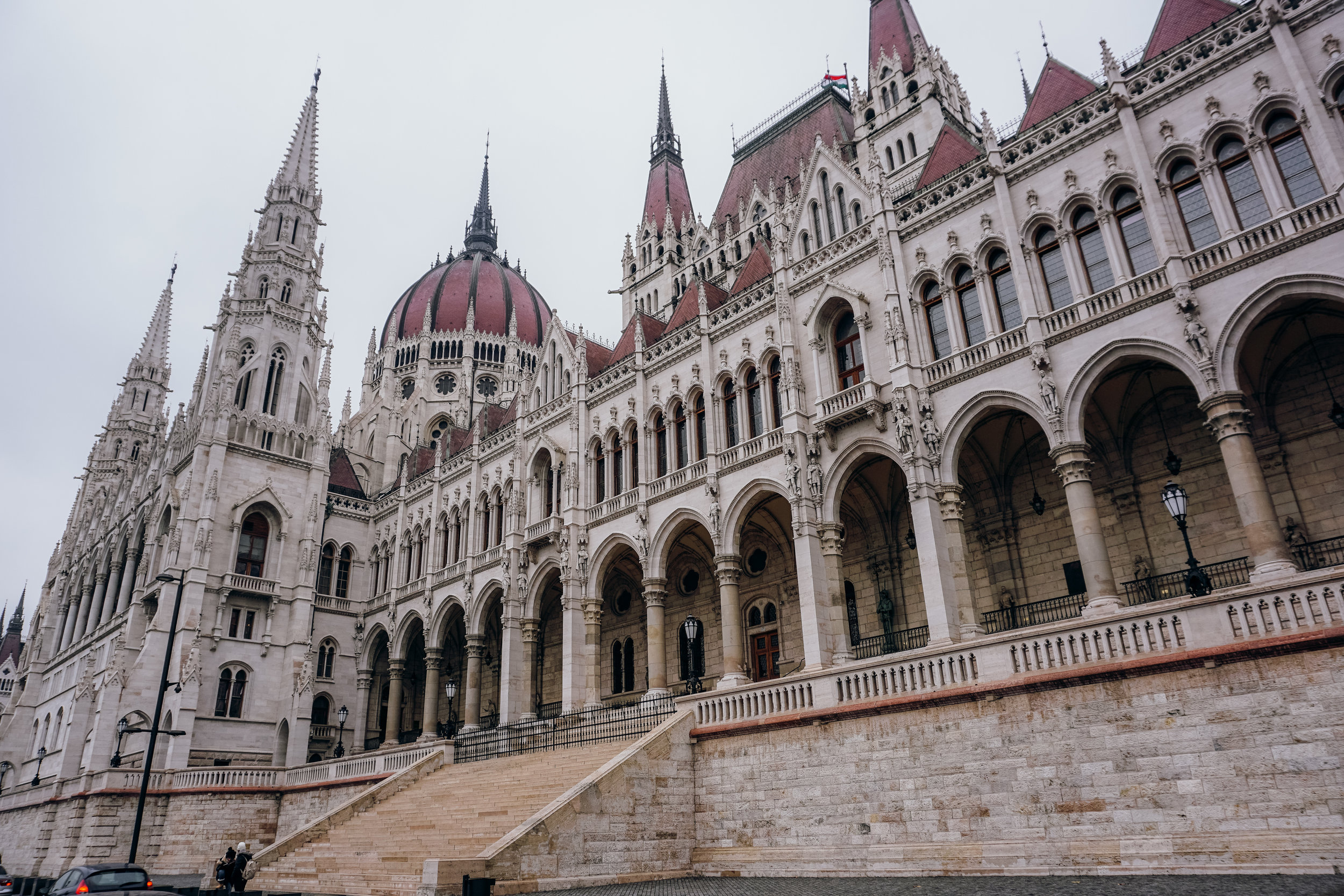
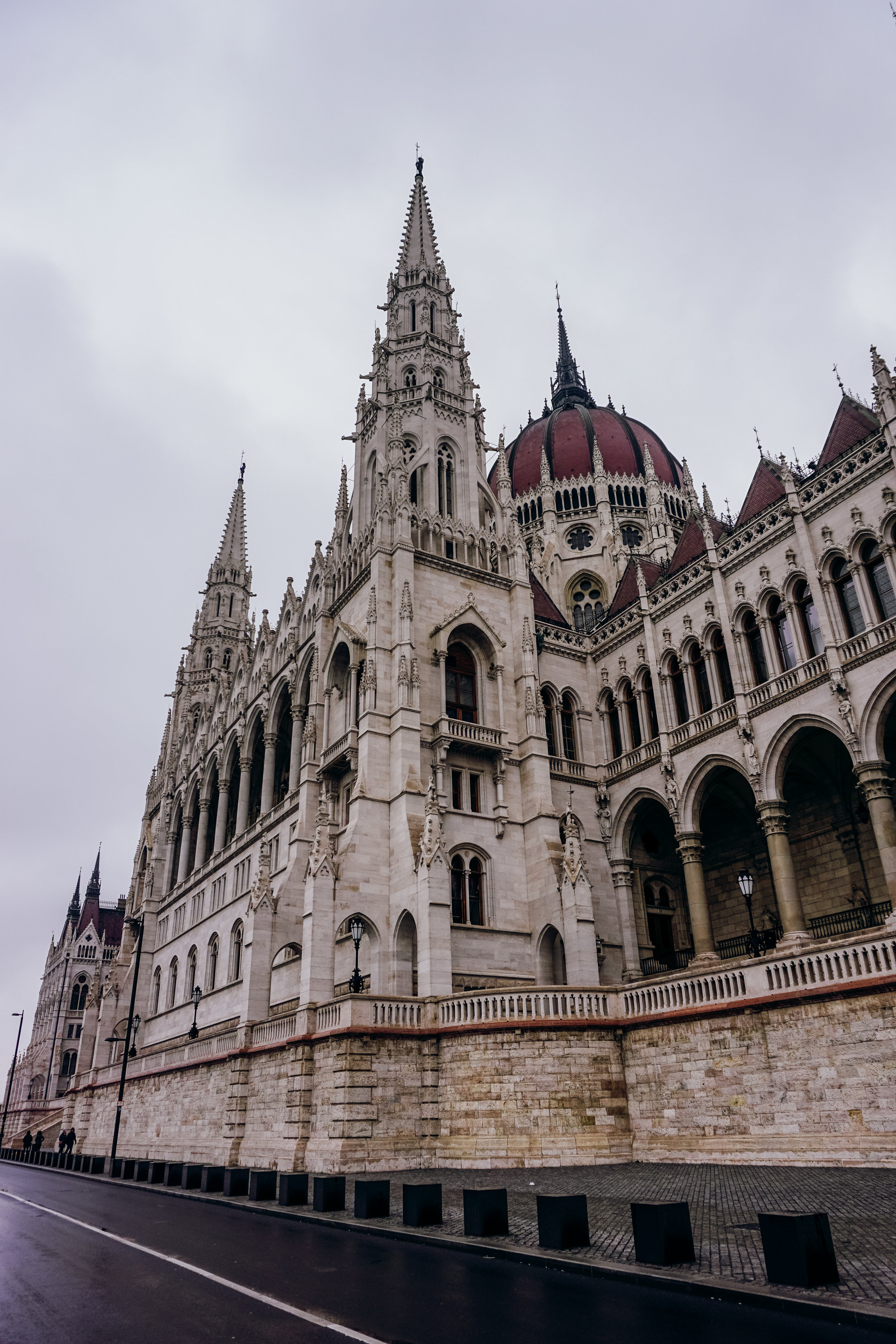
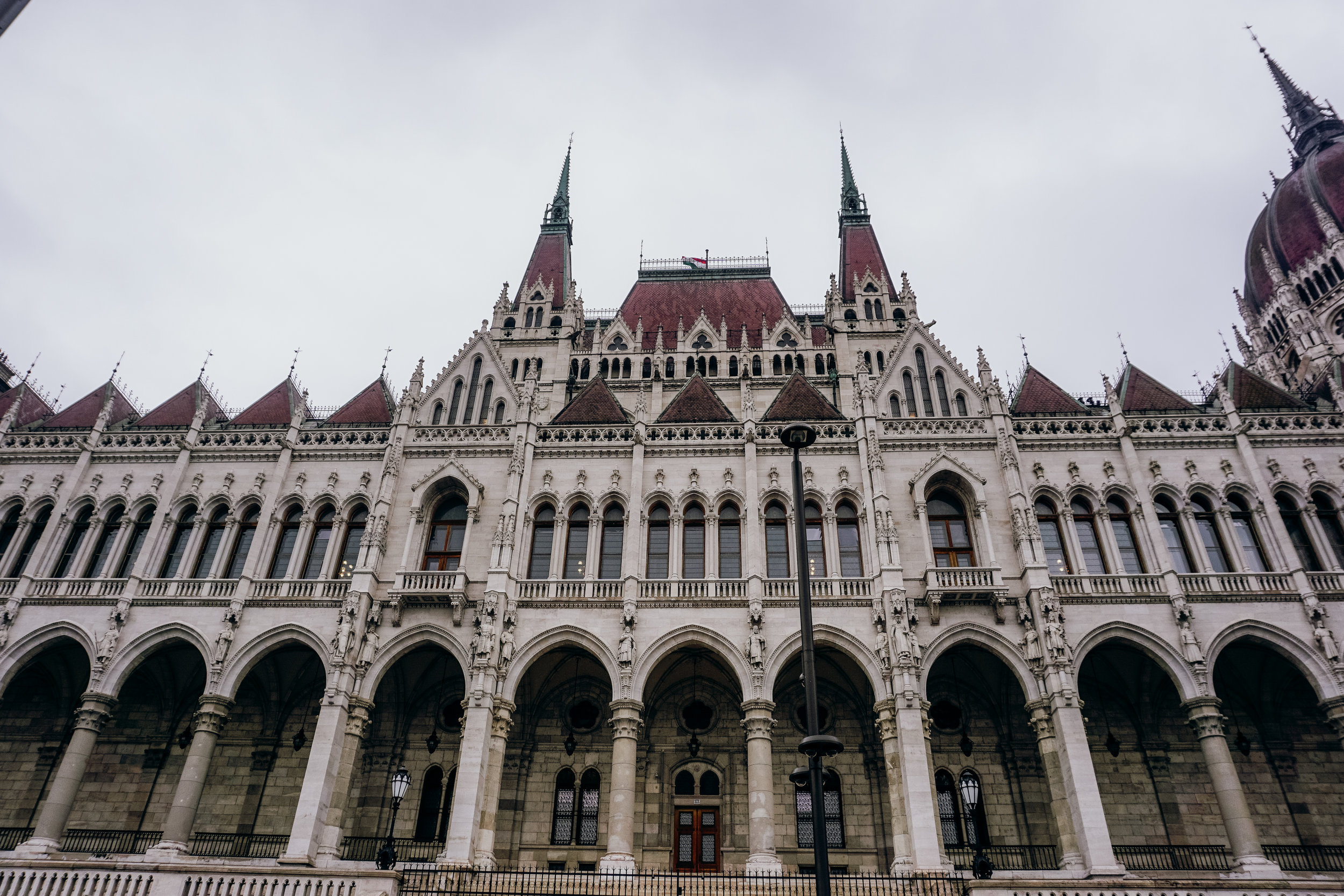
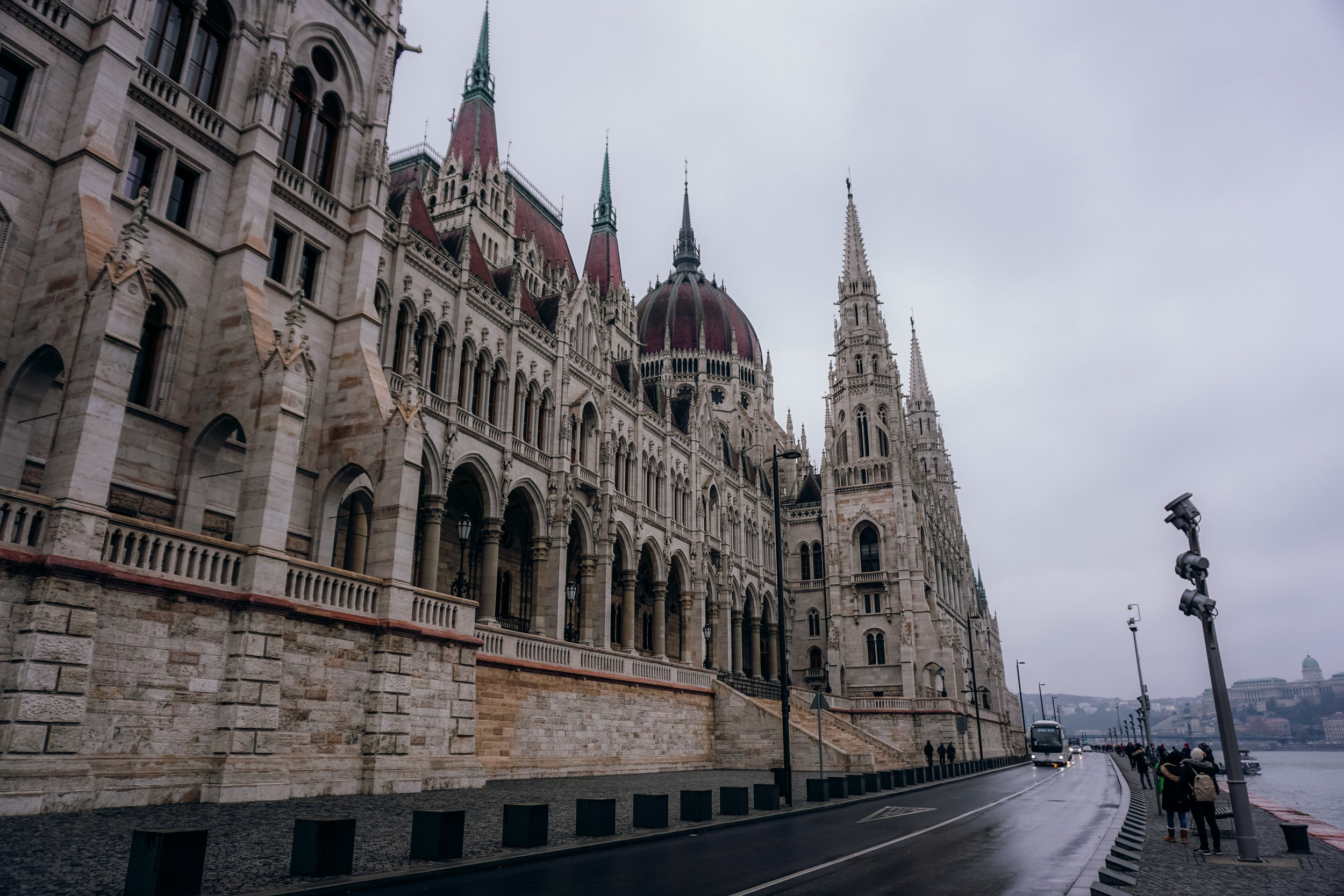
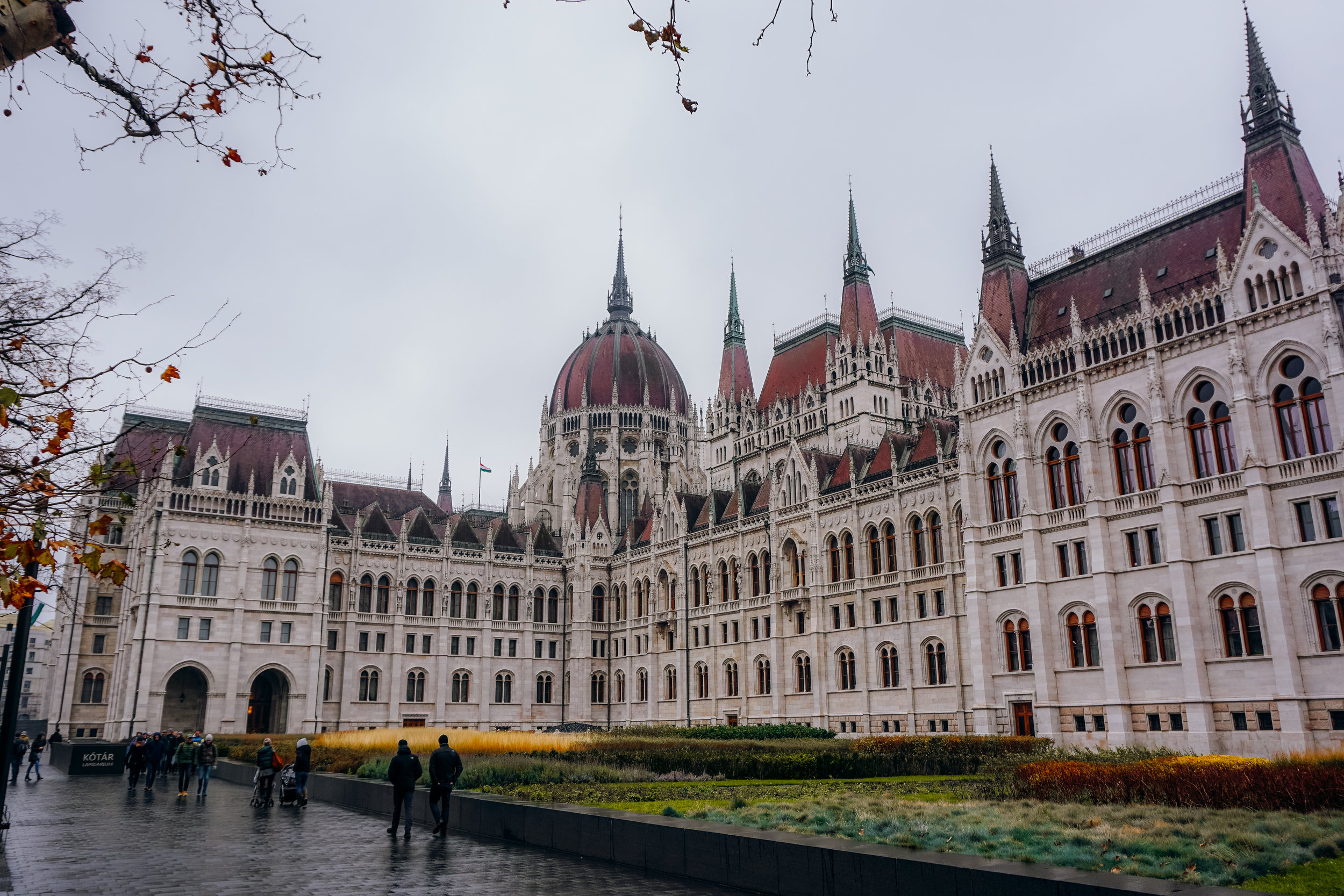
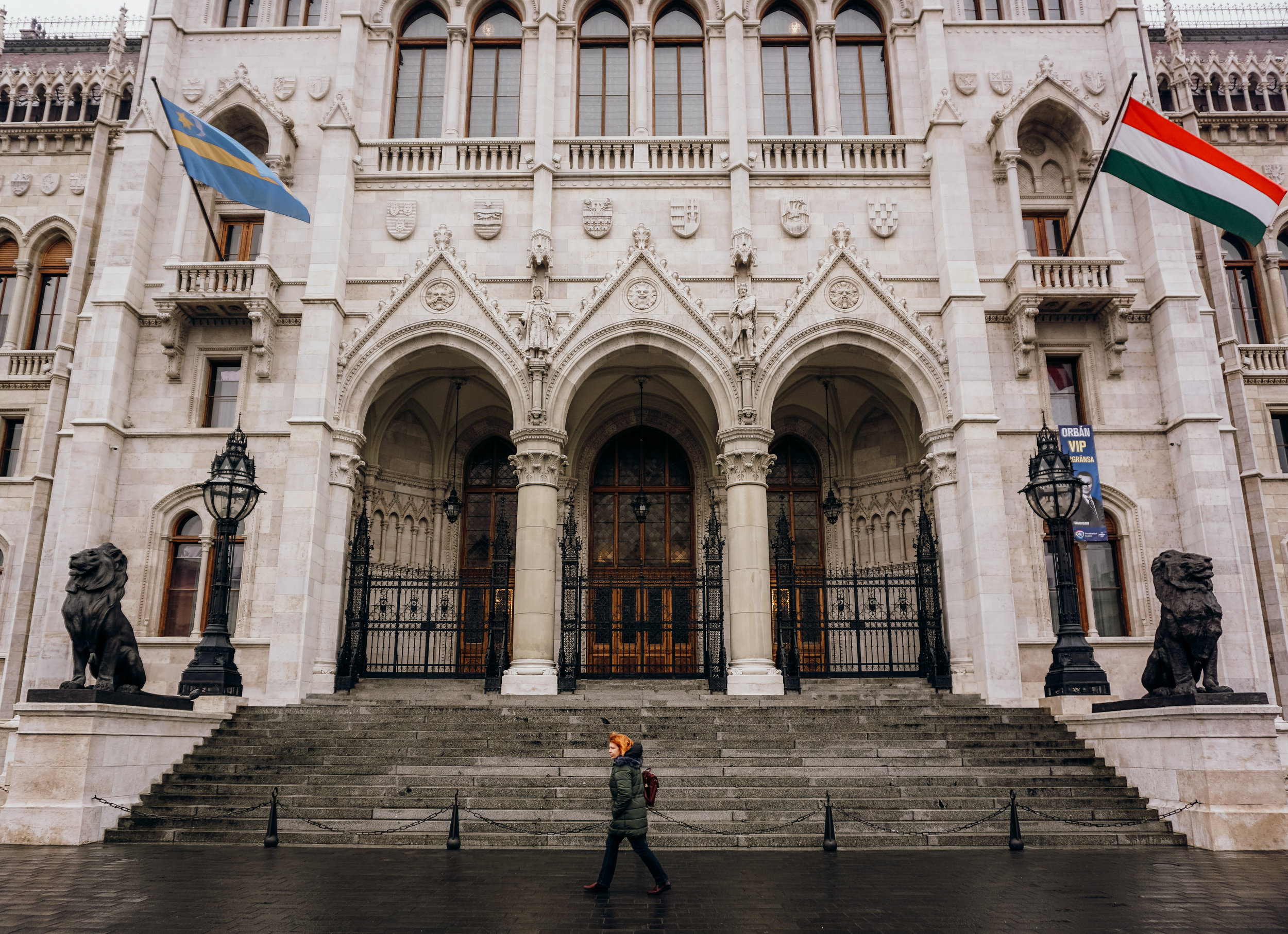
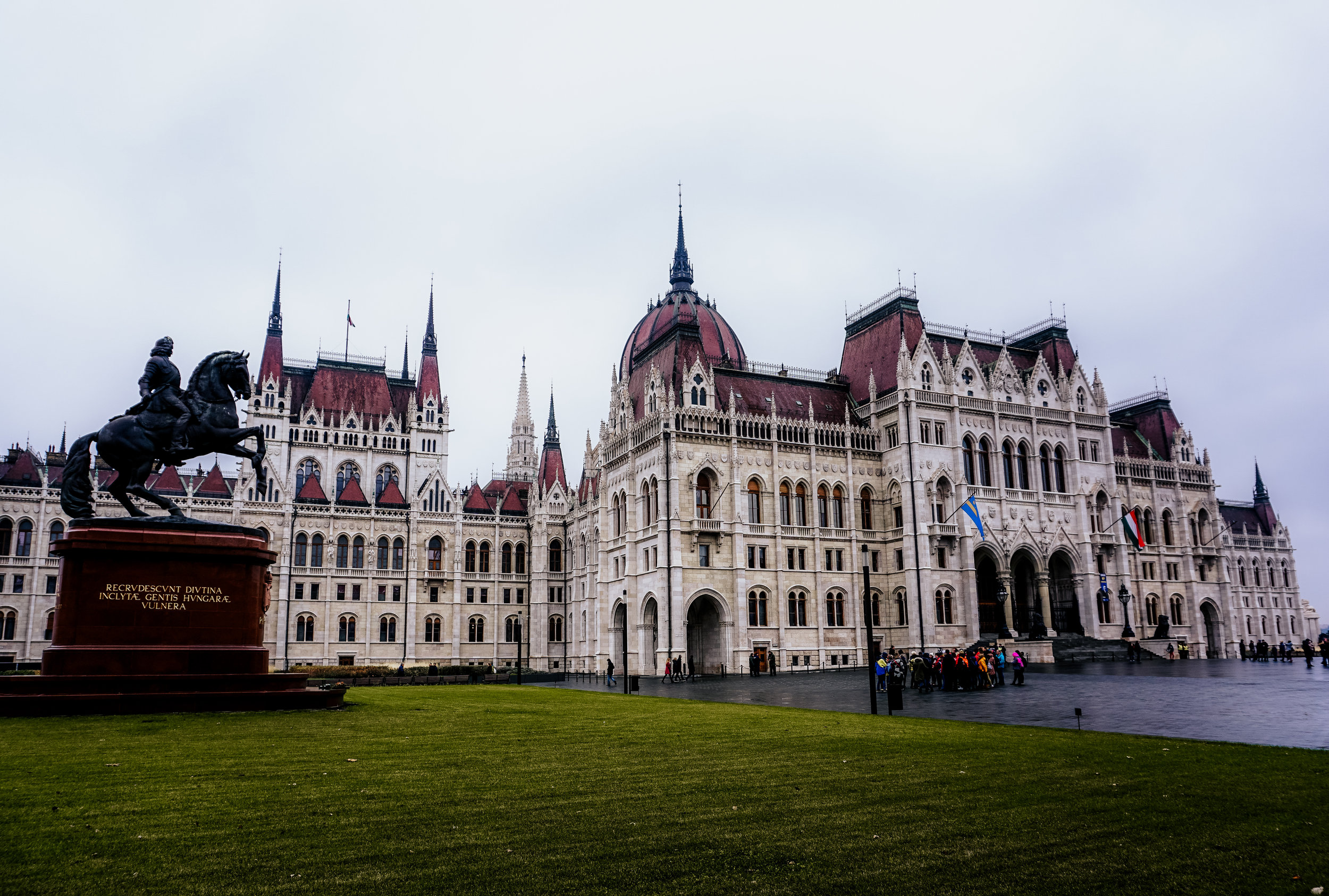
Unofficial WWII Victims Memorial
On our walk back towards the center of town, Chris and I stumbled upon an Unoffical WWII Victims Memorial that the people of Hungary have erected. It is placed right in front of an official monument put up by the Hungarian government. The monument originally said it was to commemorate Hungary’s German occupation on March 19, 1944. After outrage, it was changed to say it commemorated the victims of the occupation. The monument depicts the Archangel Gabriel, representing Hungary, and the eagle above, ready to strike upon Gabriel, representing the Nazis. The people of Hungary interpret this as the Hungarians claiming innocence during WWII and being conquered by the Nazis. When in fact, Hungary was one of the first countries to ally with Germany in 1940 and welcomed Nazi occupation, and in turn, the deportation and murder of a half-million Jewish people to concentration camps. Thus, they detest the official monument and have made their own monument, which they believe actually commemorates the victims of WWII and acknowledges history.
Lunch at Mr. Funk
Near St. Stephen’s Basilica is a color explosion of a storefront called Mr. Funk and is a donut-lover’s paradise / bagel sandwich shop. If you’re looking for an Instagram-worthy donut shake or a simple turkey bagel sandwich, this is the place to go. Such a fun atmosphere. Admittedly, the clientele consisted mostly of kids and teens, but I loved it.
St. Stephen’s Basilica
The title of largest church in Budapest belongs to St. Stephen’s Basilica, which is named after the first King of Hungary, St. Stephen. Located on the Pest side of town, it is a towering church that can fit up to 8,500 inside of it. When we walked up to the church, there was the cutest Christmas market set up in the square in front of it, which even included a giant Christmas tree and skating rink.
With our daylight diminishing by the minute, we opted to go up to the top of the basilica first to get panoramic views of the city, this time from the perspective of Pest. The entry to go up the 300+ stairs was only 600 HUF / $2.15 / €1,90. When we got to the top, the views were great, but it was a pretty foggy day, which made us appreciate having done Buda on our first day, when it was much clearer. It was fun to see Parliament, Buda Castle, and the Christmas market down below!
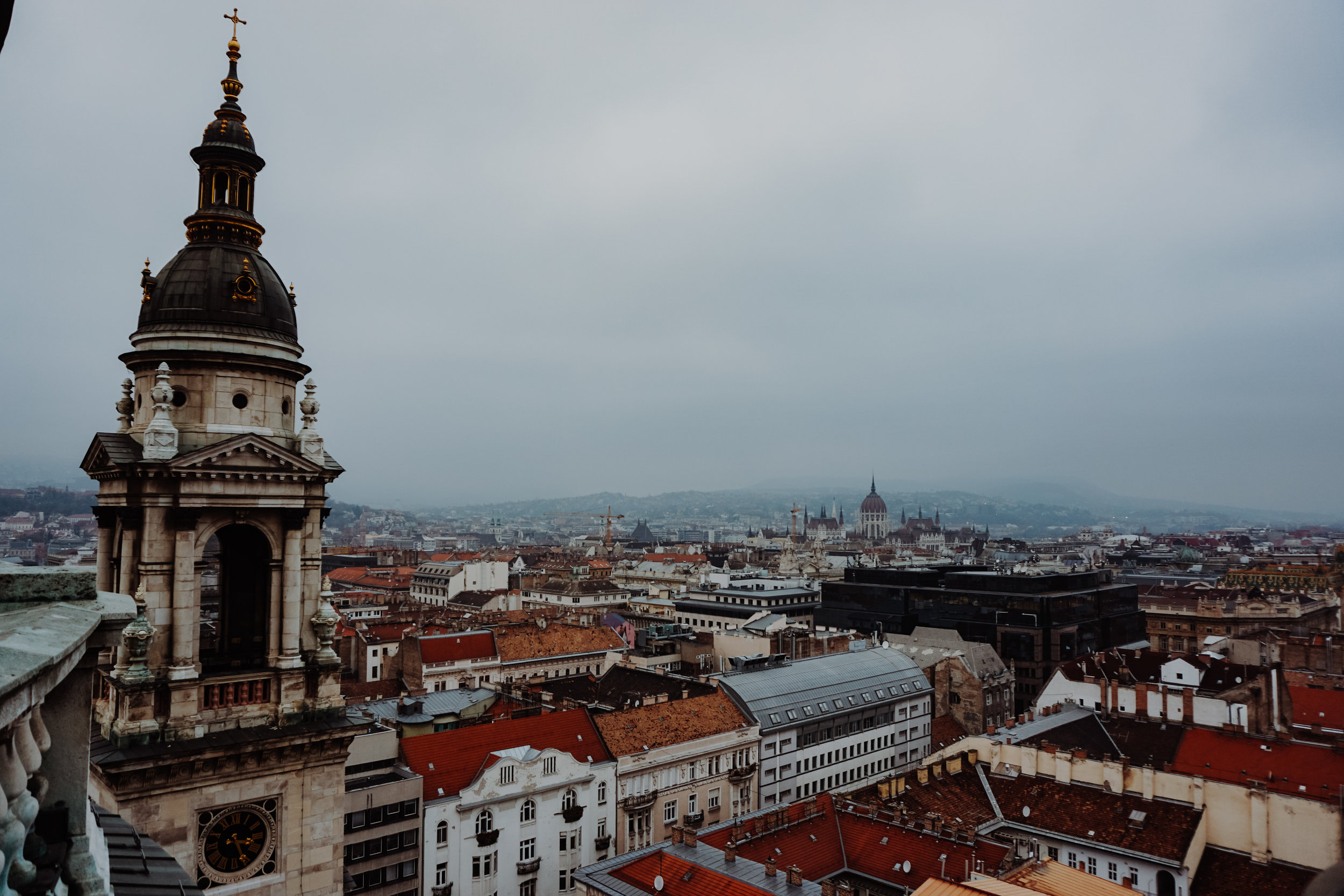
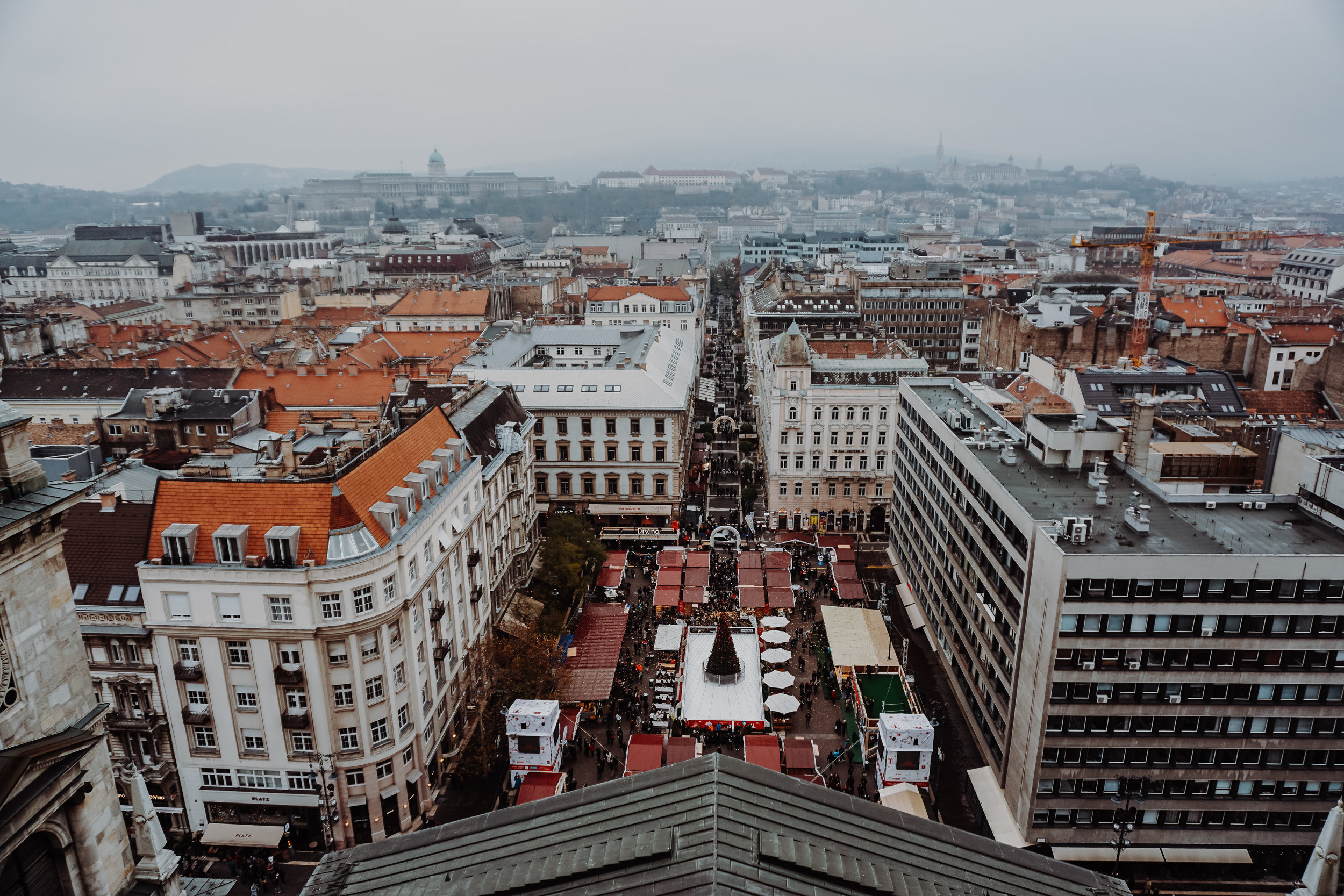

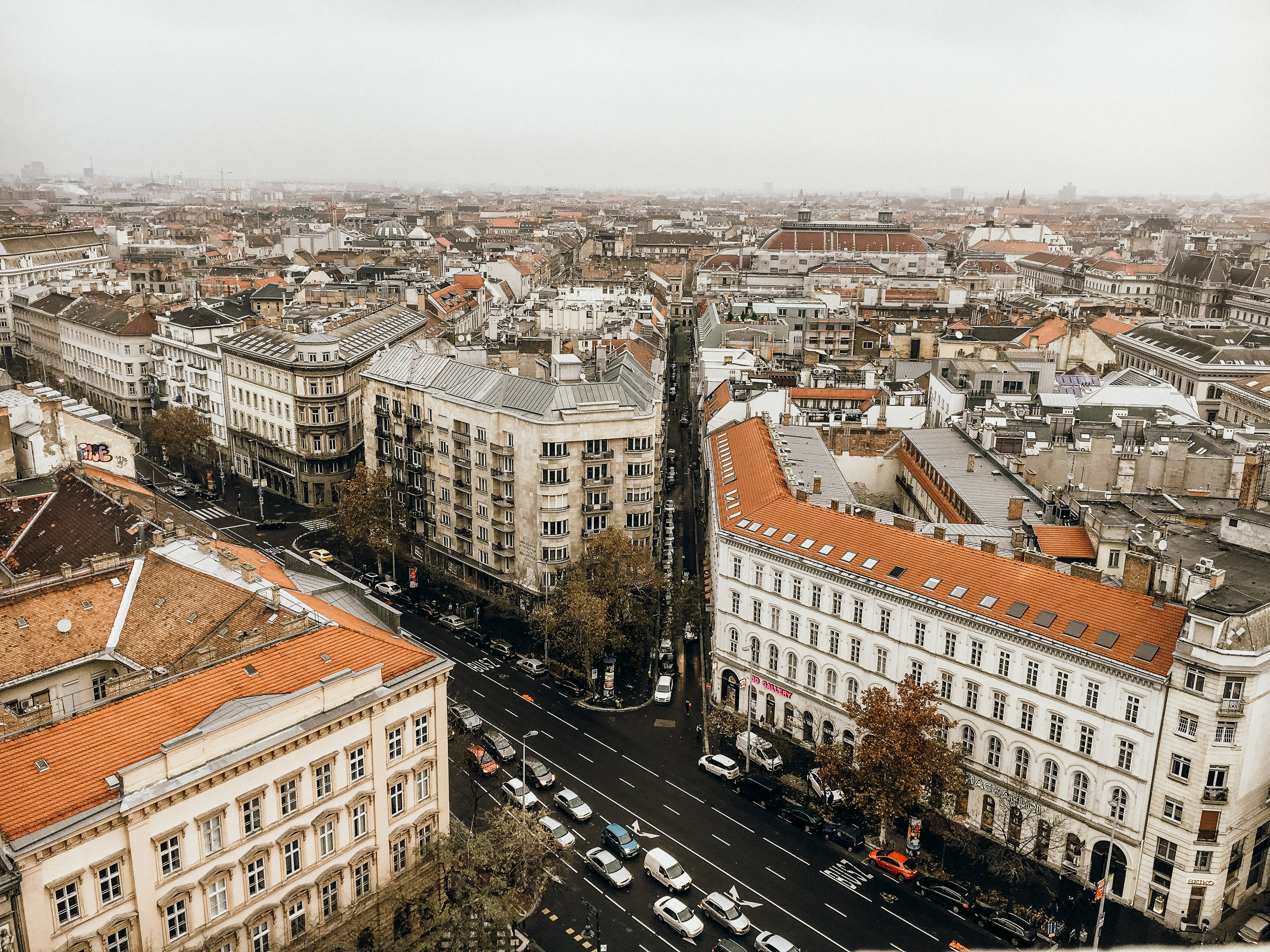
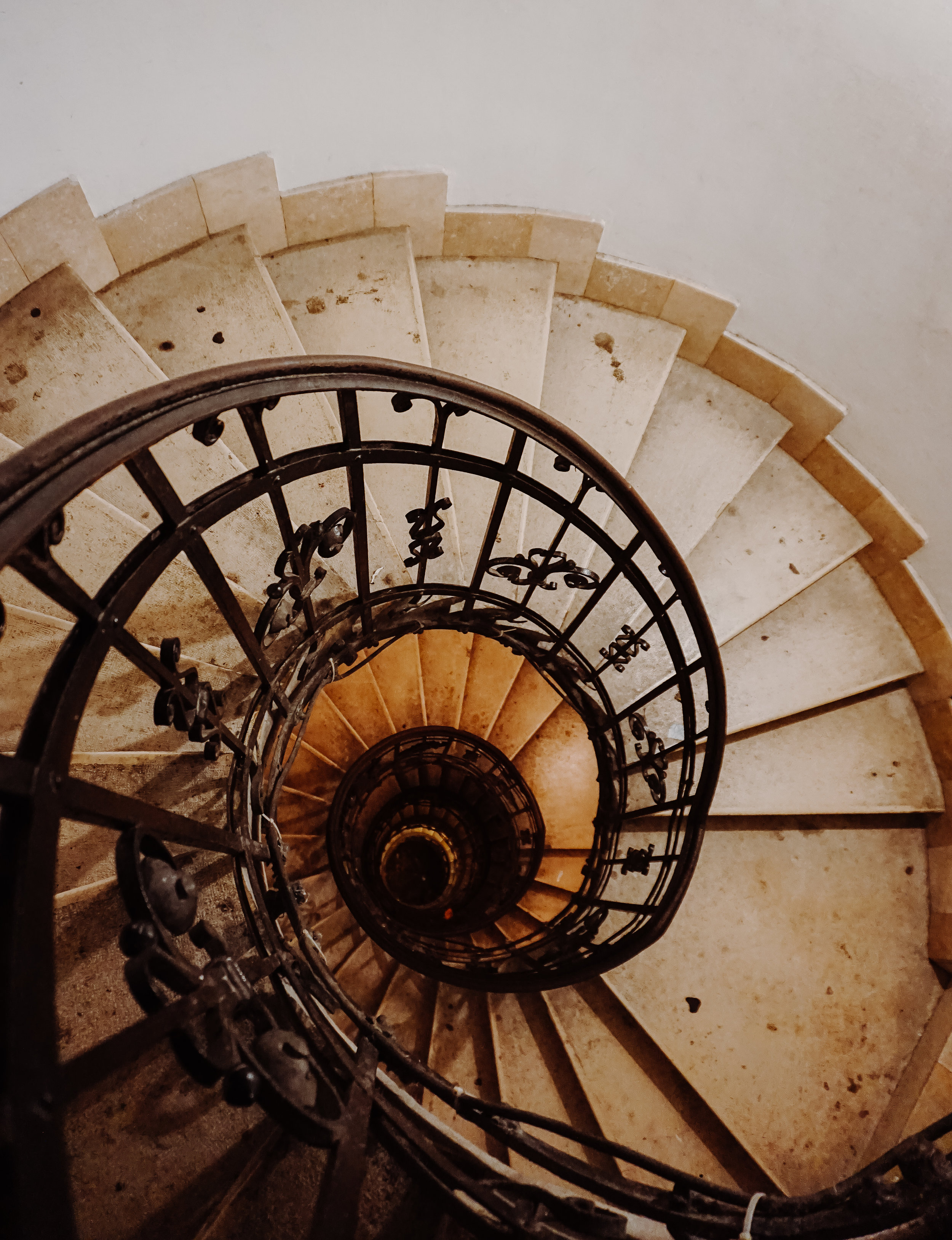
Down below, entrance into the nave of the church is free, but they accept donations if you are so inclined. The inside of the St. Stephen’s Basilica is unlike any church I have seen before. It was so ornate, it could have been a palace. There aren’t many windows inside, so it is very dark inside the church. The walls and floors are pure marble and the place is covered in gold. It’s really a spectacular sight.
There are guided tours available for St. Stephen’s Basilica for 2,000 HUF / $7.15 / €6,30 [includes the panoramic view], and I wish we would have done it. The church seemed to have a lot of symbols and stories in its design and decoration. The church also has the mummified right hand of St. Stephen and who wouldn’t want the story behind that?! Tour or no tour, visitng the church is well worth it.
Dinner at the Christmas Market
After visiting the basilica, we walked around the Christmas market and looked at all the handmade goods for sale while sipping on some mulled wine.
The food stalls looked incredible and we never pass up the opportunity to eat local street food. Chris wanted goulash one last time, and this time it was served up in a bread bowl, and I tried a traditional dish called lángos, which is a deep-fried pizza dough with a sour cream spread and topped with chicken, sauteed peppers, and cheese.
After dinner, we grabbed a popular Hungarian street dessert called a chimney cake, which is a rolled piece of dough baked over a fire, which makes the outside hard, but the inside soft. We enjoyed our treat on our way back to our Airbnb, where we cozied up for the night before heading back home to Dublin the next day.
Overall Impressions:
We loved Budapest! The history and architecture blew us away. It was such a fascinating place and I feel like you could spend an entire week there.
I wish that we would have hired a local guide for one of the days to take us around and tell us more about the history and culture on both sides of town.
Budapest is also famous for its “ruin bars,” which are dilapidated buildings that have now been turned into hip bars. I blame my upset stomach on us not getting to one of these. If you’re interested, here is a list of some of the ruin bars you can visit.
Had we known, I also would have done the guided tour of Memento Park and St. Stephen’s Basilica.
Having visited Prague in 2011, I can say that Budapest is so much better. When I visited Prague, it was very touristy and overdone. I much prefer Budapest — there is more to see and the prices are just as cheap.
Make sure you get to the airport with plenty of time. The check-in / security is not the most organized — in fact, it was chaotic, so you’ll want to make sure you have plenty of time so you don’t miss your flight.
That’s all for now! I hope you enjoyed reading about the beautiful city of Budapest and make your own plans to get there some day.
Until next time…
Egészségedre! xo,





